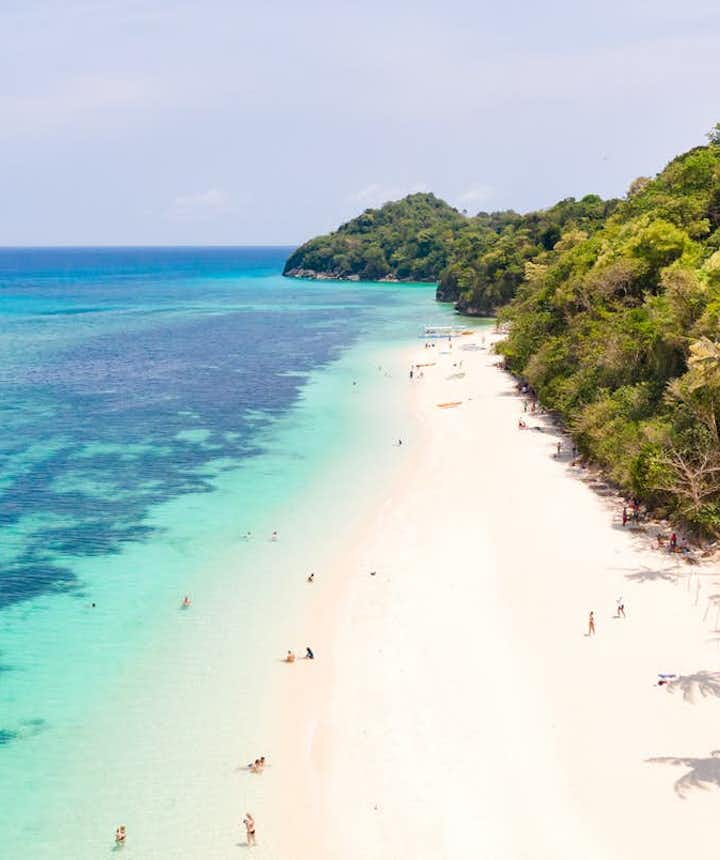

Sustainable Tourism in the Philippines: How to be a Responsible Traveler

What is Sustainable Tourism?
15 ways to be a responsible traveler in the philippines, 1. visit ecotourism destinations and attractions in the philippines, 2. stay at eco-friendly hotels and resorts in the philippines, 3. book with dot-accredited local tour operators, 4. leave no trace, 5. bring reusable utensils and refillable bottles, 6. go on cultural immersions, 7. try farm tours, 8. eat at local restaurants, 9. follow proper interaction with wildlife, 10. reduce your carbon footprint with your transport choices, 11. explore nearby destinations, 12. spend more time in destinations, 13. support local when buying souvenirs, 14. use environment-friendly travel products, 15. go digital.
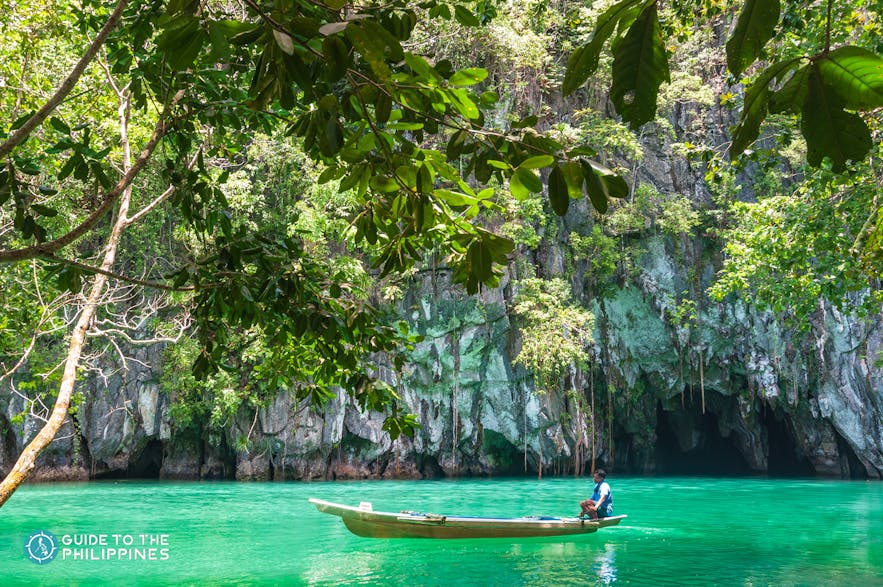
Puerto Princesa Underground River in Palawan
With over 7,000 islands, the Philippines is home to many natural tourist spots . Stunning islands, spectacular beaches, breathtaking mountains, and rare endemic wildlife are just some of the reasons why you should visit the Philippines . It’s no surprise that the Philippines attracts millions of tourists every year, and while this is great for the country’s economy, it could affect its natural attractions, especially if tourists do not follow responsible travel and sustainable tourism practices.
In fact, in 2020, it was reported that the Philippines was ranked 94th out of 99 countries when it comes to promoting sustainable tourism. In 2018, the top island Philippine destination called Boracay was closed to the general public for six months for rehabilitation.
See our popular Philippines Tour Packages
Relaxing 4-day beachfront mithi resort bohol package from manila, 3-day boracay luxury package at 5-star crimson resort with flights from manila & airport transfers, 4-day luxury boracay package at 5-star crimson resort with airfare from manila.
Boracay, one of the most popular Visayas tourist spots , was suffering from deteriorating environmental conditions, partly due to the millions of tourists who visit it every year. These are just some reasons why practicing and promoting sustainable tourism in the Philippines is important.
Through campaigns like Save our Spots , the Department of Tourism has encouraged domestic and foreign tourists to travel responsibly and sustainably. The least we can do as tourists is to follow sustainable practices in the Philippines to help protect our environment. But there’s more to sustainable travel than just following the leave no trace principles.
In this article, we give you more ways you can help conserve the Philippines’ best natural assets on your next vacation in the Philippines .
See our popular Philippines Vacation Packages
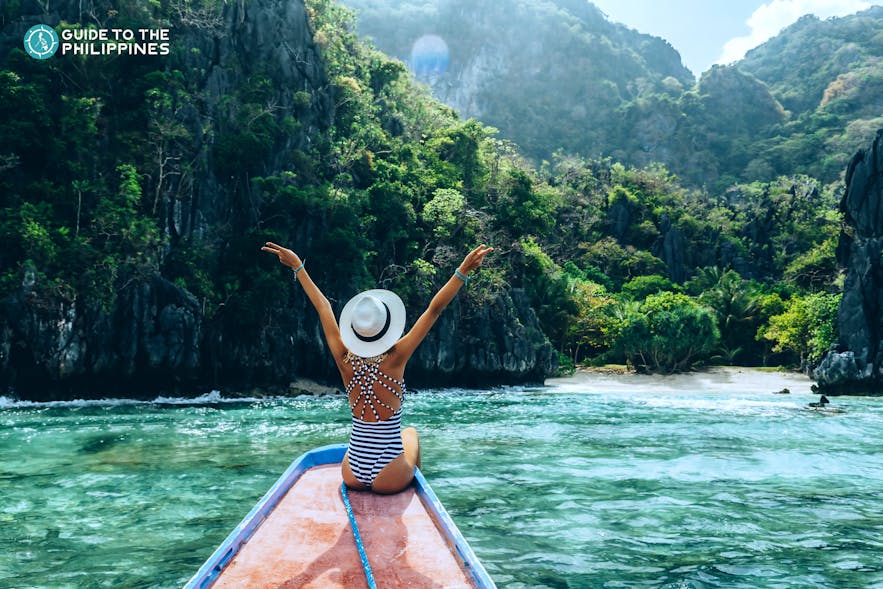
El Nido, Palawan
Sustainable tourism is the practice of considering the impact of tourism on the environment, the economy, and society while at the same time taking into account the needs of the tourists, the host communities, and the industry.
Why is sustainable tourism important? If we don’t take care of the natural resources in our tourist spots, it will lead to their deterioration and destruction, and future generations won’t be able to appreciate their beauty, while those from the tourism industry can potentially lose their jobs and source of income.
Being a responsible tourist is just one way to ensure that the best places to visit in the Philippines remain beautiful and open for everyone to enjoy.
See our popular Boracay Vacation Packages
Amazing 4-day movenpick boracay 5-star resort package with airfare from manila or clark & transfers.
What are the 15 principles of sustainable tourism? There are many ways to be a responsible tourist in the Philippines and here are just some of them:

Basco Lighthouse in Batanes
The Philippines is home to many tourist attractions, and apart from the top tourist spots in the Philippines , there are ecotourism destinations and attractions like Batanes , The Masungi Georeserve in Rizal, Palaui Island in Cagayan, and Apo Island in Negros Oriental. These places and spots not only offer amazing local experiences but also give you the chance to practice responsible tourism as the local communities and stakeholders follow some of the best practices in sustainable tourism.
The people of Batanes, for example, have done a wonderful job of preserving the culture of the Ivatans by keeping their stone houses intact. The locals here also practice sustainable fishing and farming, while the local government prioritizes local culture and investors, which is why instead of 5-star hotels, you’ll mostly find homestays here.
See our popular Eco Tours
Shared puerto princesa underground river tour in palawan with lunch & hotel transfers, bohol chocolate hills countryside private tour with transfers & add-on loboc river cruise lunch, manila intramuros historical express 90-minute tour in eco-friendly bamboo bike + optional upgrades.
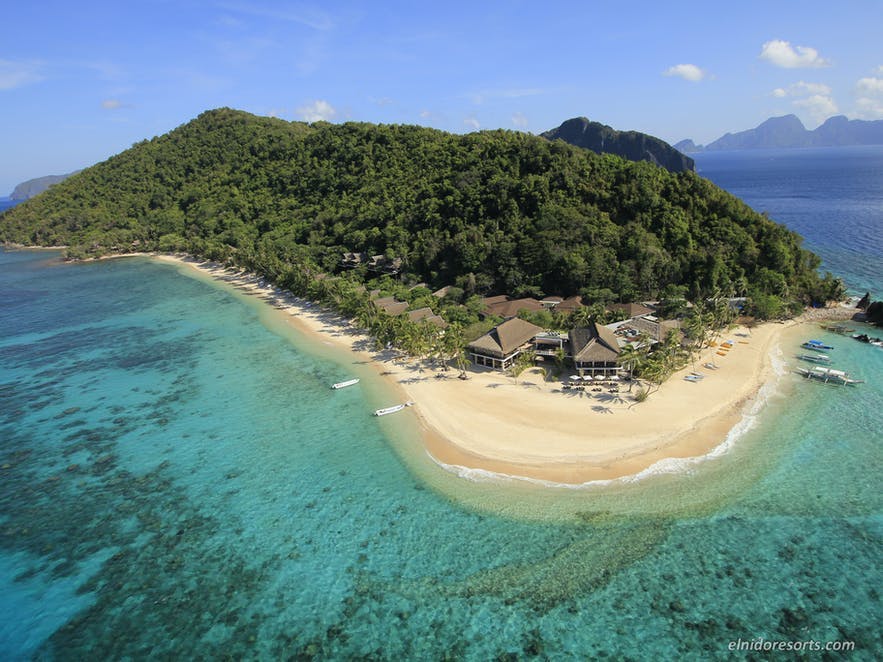
Photo by El Nido Resorts group
Your choice of accommodations is also another way how to practice sustainable tourism. Staying at some of the best eco-friendly resorts in the Philippines allows you to reduce your carbon footprint when traveling. Eco-friendly hotels follow sustainable practices such as organic farming, tree planting, rainwater recycling, solid waste segregation, composting, coastal clean-ups, farm-to-table dining, using local building materials, and using solar energy.
See our popular Philippine Luxury Vacation Packages
Upscale 4-day discovery coron (club paradise palawan) private island resort package with airfare.
Look for properties that have certification or awards from the Philippine Green Building Initiative, Inc, the ASEAN Green Hotel Awards, or the DOT’s ANAHAW Philippine Sustainable Tourism Certification.
Of course, you can also do more beyond just booking and staying at these hotels and resorts. You can turn off all the electronic devices, including the air conditioner, when leaving your hotel room. Let the staff know you will be reusing your towels, bed linen, and sheets. If your room is clean anyway, hang the “Don’t Disturb” sign to prevent unnecessary vacuuming and cleaning.
See our popular El Nido Tours and Activities
Private el nido lio airport transfer to/from any hotel in el nido town palawan, palawan el nido shared island hopping tour a with lunch & transfers | secret lagoon, shimizu island, private puerto princesa airport to or from el nido town transfer service.
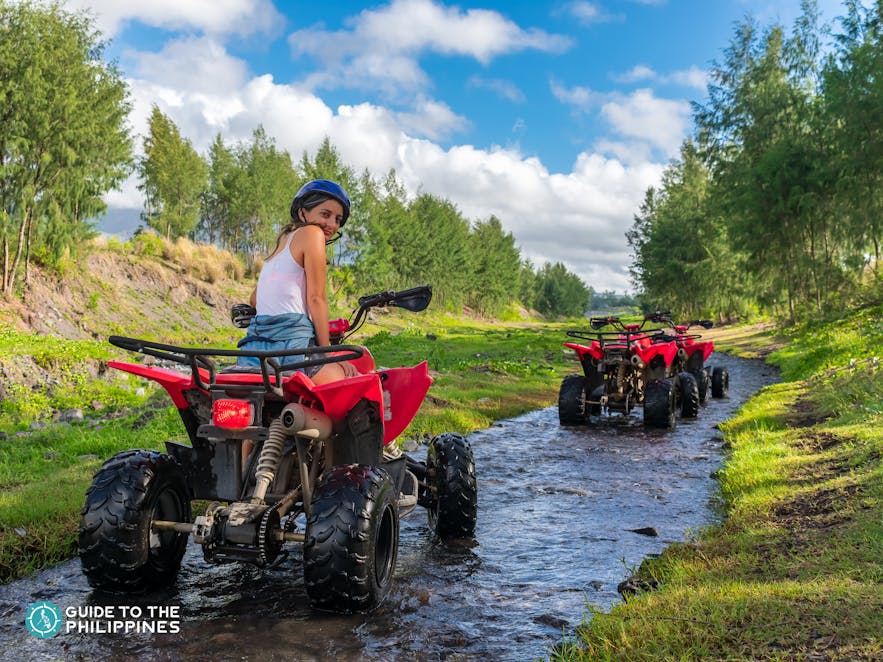
ATV Ride in Mt. Mayon, Legazpi, Albay
The Department of Tourism has advised local hotels, resorts, and tour operators to seek DOT accreditation so the department can help them adopt sustainable tourism practices. DOT-accredited accommodations and tour operators get access to technical tools that will help them become sustainable. This is part of the DOT’s plan on how to develop sustainable tourism in the country.
When you tour the Philippines , book with DOT-accredited travel agencies like Guide to the Philippines. We partner with DOT-accredited hotels, resorts, and tour operators and help them to widen their global reach by showcasing their products online in our platform.
See our popular Legazpi Tours and Activities
Mayon volcano legazpi atv ride black lava wall trail with guide & transfers, albay best views of mayon sightseeing & culture tour with snacks & transfers from legazpi, albay private half-day tour from legazpi with lunch | cagsawa ruins, daraga church, sumlang lake.

Daku Island in Siargao
The “Clean as you go” or CLAYGO rule should be followed not only when you travel but in your everyday life. Simply put, leave no trace means you don’t leave any item when you visit a natural tourist destination. This rule is mainly for litter like tissue, food wrappers, and plastic bottles, but be mindful of unintentionally leaving behind personal belongings, which could also end up harming the environment.
Some tourist destinations like the Pink Beach in Zamboanga have their own strict leave no trace policies, and those who violate them can be charged fines or put in jail and/or community service.
See our popular Zamboanga Tours and Activities
Zamboanga pink sand sta. cruz island private tour with vinta ride, lunch & transfers, zamboanga city private historical day tour with transfers, dapitan zamboanga del norte day tour with optional side trip to dipolog city.
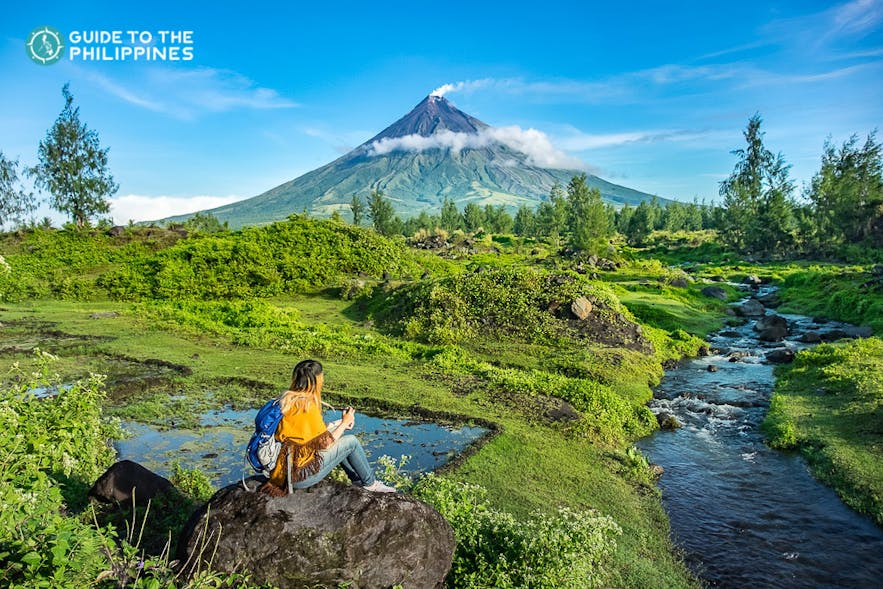
Mt. Mayon in Legazpi, Albay
One simple way to practice how to be a responsible traveler is to bring your own reusable utensils and water bottles when you travel. This will help reduce your use of single-use plastics and lessen your carbon footprint when traveling. If you’re worried about these items taking too much space in your bag, you should consider foldable travel spoons, forks, and chopsticks and collapsible water bottles.
Similar to the leave no trace policy, some places in the Philippines have tried reducing waste by banning single-use plastics. In Siargao , for example, plastic bags are not allowed, and restaurants are prohibited from selling water in plastic bottles. El Nido also has a plastic ban which requires all boat passengers to surrender their single-use plastic bottles and bags before boarding.
See our popular Siargao Tours and Activities
Private siargao tri island hopping tour with hotel transfers | guyam, naked, daku islands, siargao airport to/from any hotel in general luna | private transfers, siargao land tour to magpupungko rock pools, cloud 9, coconut mountain view & more with transfers.
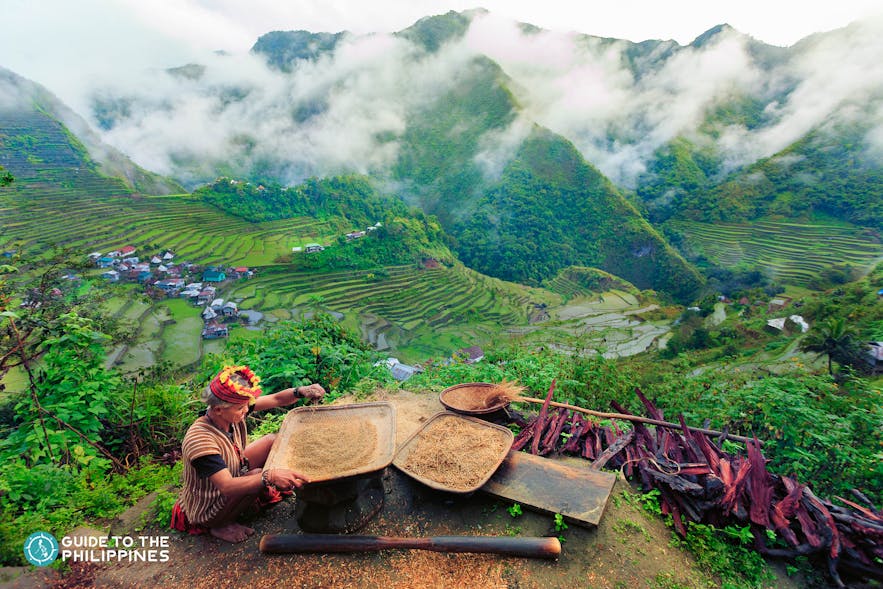
Ifugao native at the Banaue Rice Terraces
The Philippines is home to many different cultures, and one way to experience some of these cultures and how to encourage sustainable tourism is to go on a cultural immersion in an indigenous village. Cultural immersion can be as simple as sharing a meal with some of the locals or participating in their local activities or as immense as living with the locals in their homes for a period of time. Many Luzon tourist spots like Buscalan, Batad, Banaue , and Sagada offer homestays for tourists.
Whatever path you choose, make sure to always be respectful of the traditions, rituals, and the locals themselves. Learning about another culture and way of life will not only be a learning experience, but it will also help you appreciate the destination even more.
See our popular Cultural Tours
Bohol countryside private tour & shared loboc river lunch cruise with transfers, bohol countryside private tour with loboc river cruise lunch & transfers from cebu city.

Photo by Bohol Bee Farm
When we think about what are the characteristics of a sustainable tourism destination, many of them can actually be found on a farm, so staying at or touring a farm is a no-brainer when it comes to traveling responsibly.
The Philippine agrotourism industry has bloomed, thanks to the country’s best farm tour destinations . Agrotourism in the Philippines offers agricultural activities like feeding animals, picking your own fruits and vegetables, and various workshops, including cooking demonstrations.
Take it to the next level by staying at farm resorts in the Philippines . Spending a couple of days in these farm stays will not only teach you how to achieve sustainable tourism, but it will also teach you ways of how to be more sustainable in your daily routine.
See our popular Farm Tours
Bohol countryside tour with loboc river cruise lunch & panglao island tour, tagaytay palace in the sky taal view & farms shared day tour with lunch & transfers from manila, guimaras top attractions & island hopping tour with lunch & transfers from iloilo city.
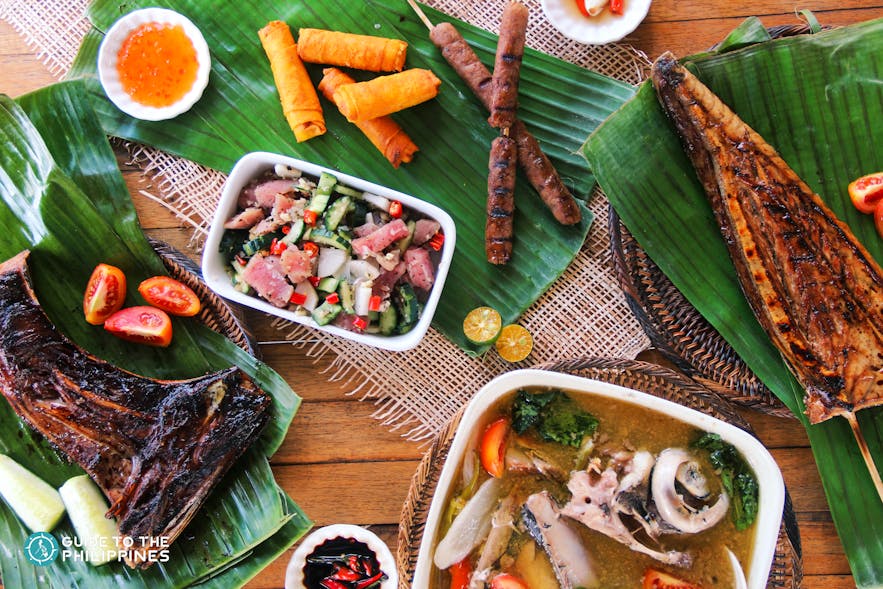
Filipino cuisine offers a variety of tastes, smells, and textures, and if you can’t have a meal at an actual Filipino home, the next best way to experience it is in a local Filipino restaurant. Not only will you experience a more authentic meal, but you will also help out small businesses thrive.
Patronizing local restaurants also help the environment. Local restaurants that source their ingredients locally have a smaller carbon footprint because the produce doesn’t have to travel far to reach their destination. While eating at any restaurant, remember that you can help reduce your food waste and promote sustainability by only ordering food that you can finish and ordering dishes with ingredients that are in season.
See our popular Food Tours
Coffee farm tour at amadeo cavite near manila & tagaytay with live brewing & tasting sampler, manila binondo & intramuros full-day tour with guide & transfers, bohol loboc river cruise lunch with private transfers from panglao.

Tarsier in Bohol
Not all wildlife attractions are created equal. Do your research and look for those that consider the welfare of the creatures that they feature. Show that you know how to travel responsibly by following all the rules set by the guides.
For example, when visiting the Philippine Tarsier Sanctuary in Bohol , you will be told to stay quiet as much as possible, not use flash when taking photos, and refrain from touching the tarsiers to ensure that they won’t get stressed.
See our popular Bohol Tours and Activities
Bohol countryside tour chocolate hills to loboc river cruise lunch with hotel transfers, bohol island hopping private tour to balicasag & virgin islands with dolphin watching & transfers.
If you want to see and swim with whale sharks in Donsol, you will be told to keep your distance from the animals and not use flash photography to avoid startling and hurting them.
See our popular Sorsogon Tours and Activities
Donsol whale shark watching and interaction tour in sorsogon with transfers, sorsogon donsol firefly tour with transfers, sorsogon matnog island hopping tour with lunch & transfers | tikling island, juag marine sanctuary.
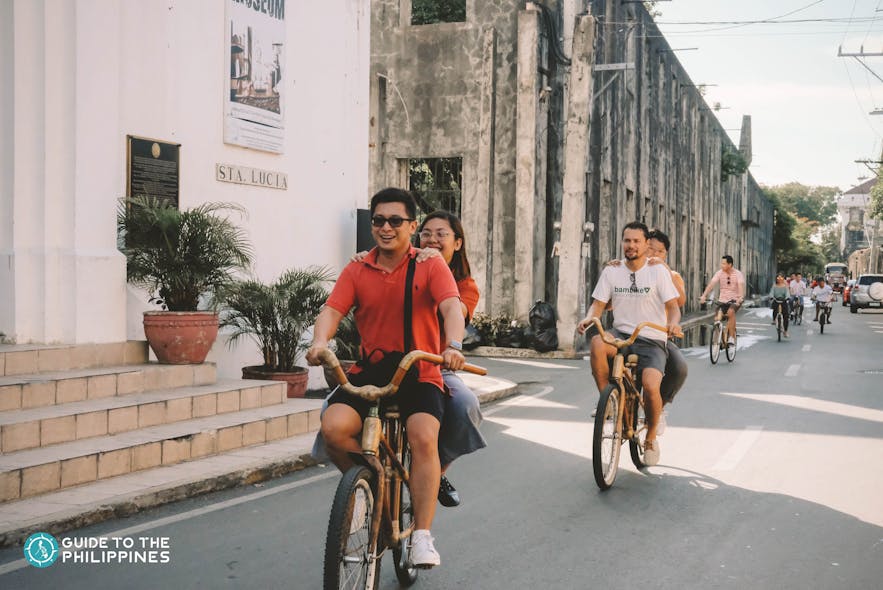
Bamboo bike ride in Intramuros, Manila
Transportation can greatly add to your carbon footprint, but with many options for traveling to and within a destination, your choices can help you lessen that. When taking flights, choose direct flights over those with layovers. Heavier airplanes also consume more fuel, so do your part and pack as light as you can.
How to achieve sustainable tourism while exploring a destination? Choose to walk or bike whenever possible. Not only do you help reduce your carbon footprint, but you’ll also get to appreciate your surroundings more since you are passing by them at a slower pace. Destinations like Boracay and Intramuros in Manila offer bike tours in the Philippines where you can explore attractions while burning some calories!
If your stops are not close enough to bike or walk to, use public transportation or shared rides instead of using a private vehicle.
See our popular Manila Tours & Activities
Manila binondo shared walking food tour with guide, manila intramuros shared half-day walking tour with guide.
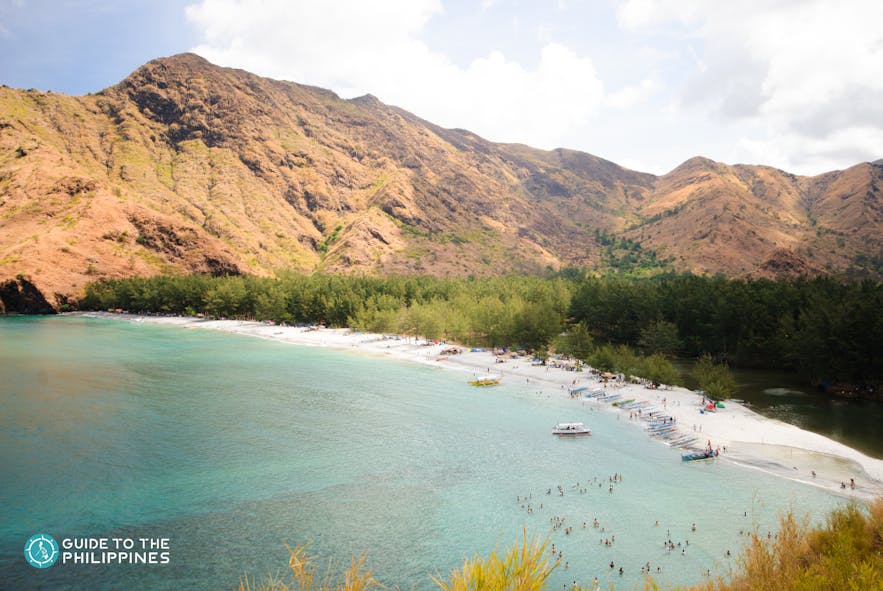
Anawangin Cove in Zambales
Of course, if you can forego the flights altogether, the better, as this means your carbon footprint will be lower. The Philippines is full of amazing destinations that, chances are, you don’t need to board a flight to see at least one of the best beaches near Manila or the best beaches in the Philippines . If you want to explore Luzon, you can go on a road trip near Manila and enjoy nearby places like Pampanga , Bataan , Batangas , and Tagaytay .
Posting about your trips is also a simple way of how to promote sustainable tourism. If more people knew about the amazing destinations that are near where they live, more travelers would be willing to explore these, which helps distribute tourists across several destinations more evenly.
See our popular Tagaytay Vacation Packages
3d2n the oriental luxury suites tagaytay package with sightseeing tour & daily breakfast, relaxing 3-day tagaytay package at quest hotel with breakfast & massage at nurture wellness village, quest hotel tagaytay staycation overnight package staycation with breakfast.
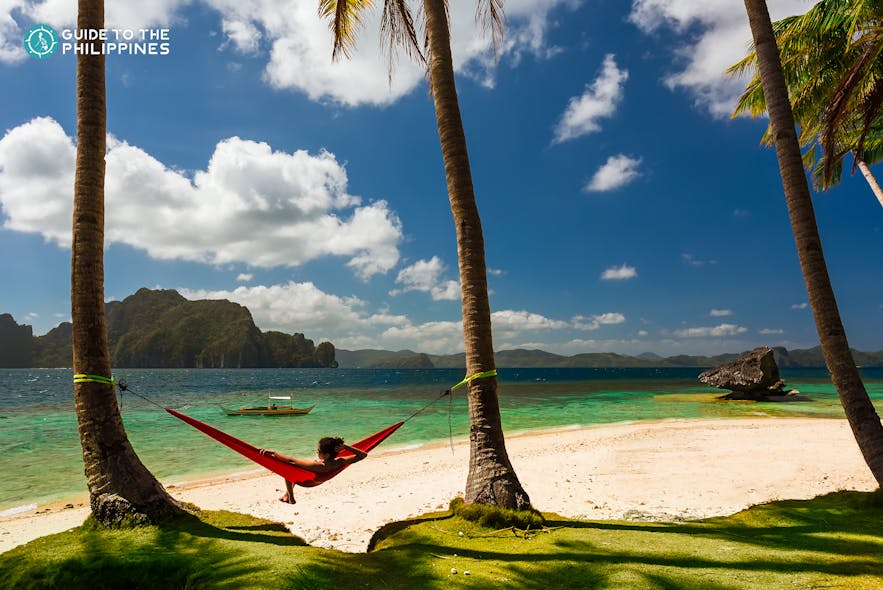
While it is sometimes tempting to pack a lot of destinations in your travel itinerary, consider limiting your vacation to just one area. Staying in one location reduces your carbon emissions since you don’t need to travel from one destination to the next. Booking a holiday in one place also means less time actually traveling and more time exploring, which allows you to spend more time in attractions because your visits aren’t rushed.
For an even more convenient vacation, you can book Philippine tour packages . Some of these packages already include accommodations and tours, so you can focus on taking in and appreciating the destination itself.
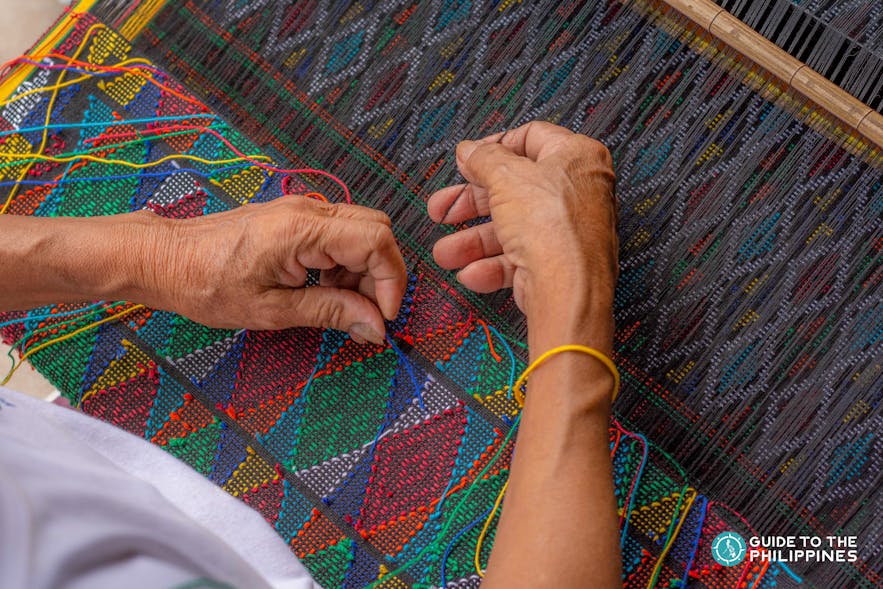
Whether you visit Luzon, Visayas, or Mindanao tourist spots , you’ll likely find a shop or even roving vendors selling unique and locally made souvenirs. Patronizing these small businesses will not only help the local industry thrive, but the items you will buy will more likely have a smaller carbon footprint compared to those that you can find in big shops since locally made souvenirs don’t need to travel far to reach the customers.
See our popular Baguio Tours and Activities
2-day sagada adventure shared tour from manila with hotel & trip to banaue & baguio highlands, atok gardens day tour with transfers from baguio | northern blossom, sakura park, mt. olis & more, baguio city creative private day tour with snacks & transfers + optional lunch & upgrades.
If you can, visit shops that actually allow tourists to see the production process so you can learn about and understand the local heritage more. In places like Zamboanga City , Vigan , and Baguio , you can visit weaving centers and villages to see how local fabric is made.
See our popular Vigan Tours and Activities
Ilocos sur vigan city heritage & sightseeing tour with horse-drawn carriage ride & transfers, vigan historical sightseeing city day tour with transfers & kalesa ride, fascinating 7-day history, heritage & nature tour package to laoag, pagudpud & vigan ilocos.
It is also better to buy souvenirs that you will actually use so you can lessen waste and save money. For example, when visiting Laguna tourist spots , it is advisable to drop by Liliw so you can shop for affordable but sturdy slippers and shoes.
See our popular Laguna Tours and Activities
Enchanted kingdom day pass with unlimited rides and optional bus transfers, laguna mt. romelo & waterfalls shared minor day hike with transfers from manila, san pablo laguna tour to heritage and museum sites with snacks & souvenir.
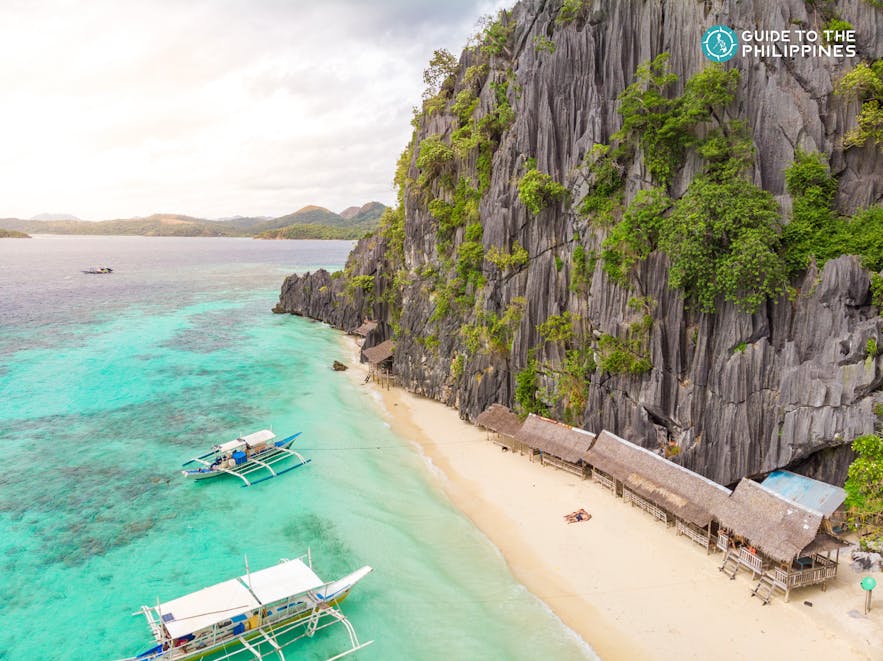
Banol Beach in Coron, Palawan
Sometimes the products we use on our travels affect the environment negatively. The chemicals on our sunblock and our insect repellant can have chemicals that are harmful to the reefs, the sea, and the rest of the environment. Before your trip, look for sunscreen and insect repellants made from natural ingredients that won’t harm the planet.
Sand- and water-repelling towels are also good to use when you’re traveling to the best beaches in the Philippines . Bringing home sand stuck to your towel may be just a mild annoyance to you, but put together all the sand travelers accidentally bring home, and you have a beach eroding faster than usual.
See our popular Coron Vacation Packages
Budget-friendly 4-day coron palawan package at skylodge resort with flights from manila & tour, stress-free 5-day coron palawan package at bacau bay resort with flights from manila, comfy 4-day coron palawan budget package at ruhe suites with flights from manila, tour & transfers.
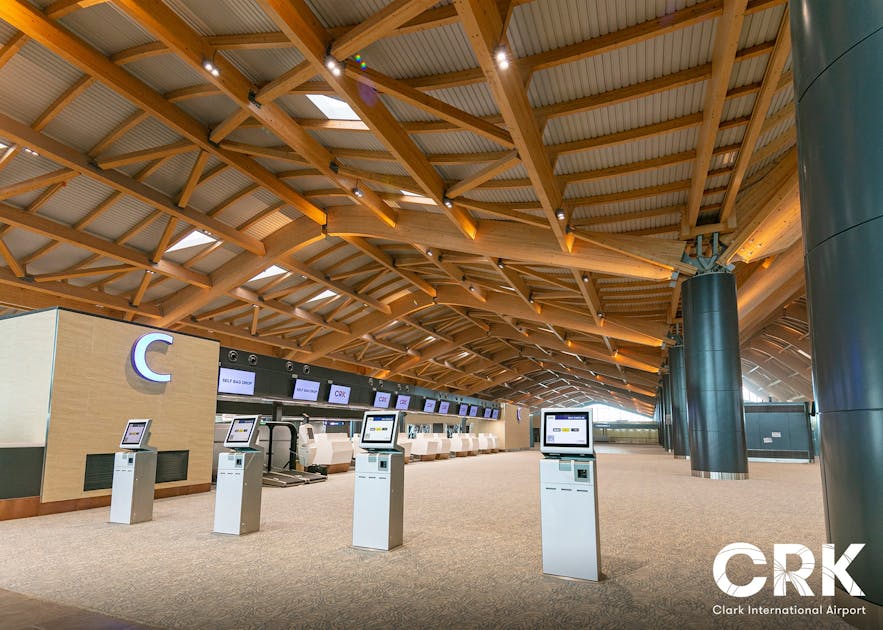
Photo by Clark International Airport
What is the aim of sustainable tourism? It is to ultimately protect the environment while also taking into consideration the need of travelers and tourism stakeholders. One of the simplest ways you can help is to ditch the printed itineraries and tickets and go fully digital.
Most airlines and hotels now accept digital copies of itineraries or QR codes, so there’s no reason for you to print out something that you could actually misplace. If you’re worried about not being able to download what you need because of poor or no internet connection, access what you need when you have connectivity and save a screenshot so it becomes available even when you’re offline.
While digital activities also have their own carbon footprint, at least they don’t have a physical output that could eventually end up in the trash.
Practice Sustainable Tourism in the Philippines
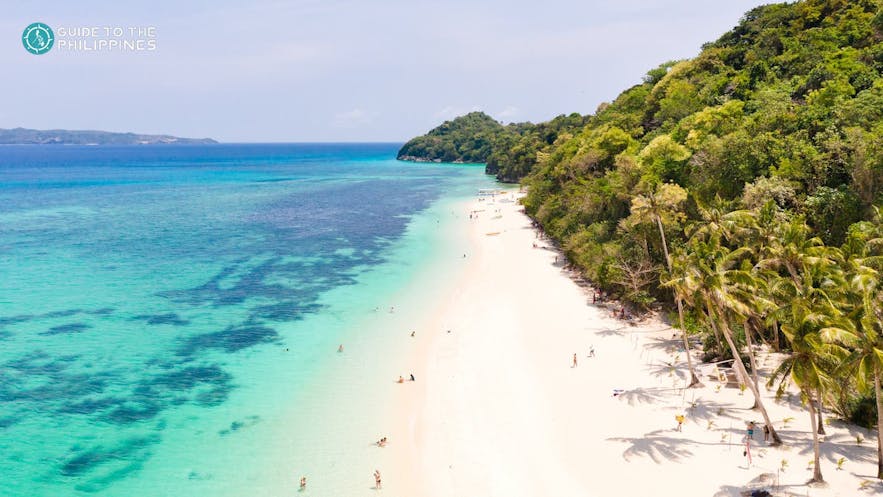
With the effects of climate change becoming harsher with every passing day, we need to rethink the way we live, and that includes how we travel. We need to understand what is sustainable tourism development and do our part as travelers to help preserve the beauty of our favorite travel destinations.
Traveling sustainably and responsibly is the only way that we and future generations can keep enjoying all the attractions and the best islands in the Philippines for many years to come.
Popular articles

Best Palawan Guide: Top Tours, Where to Stay, How to Get Around
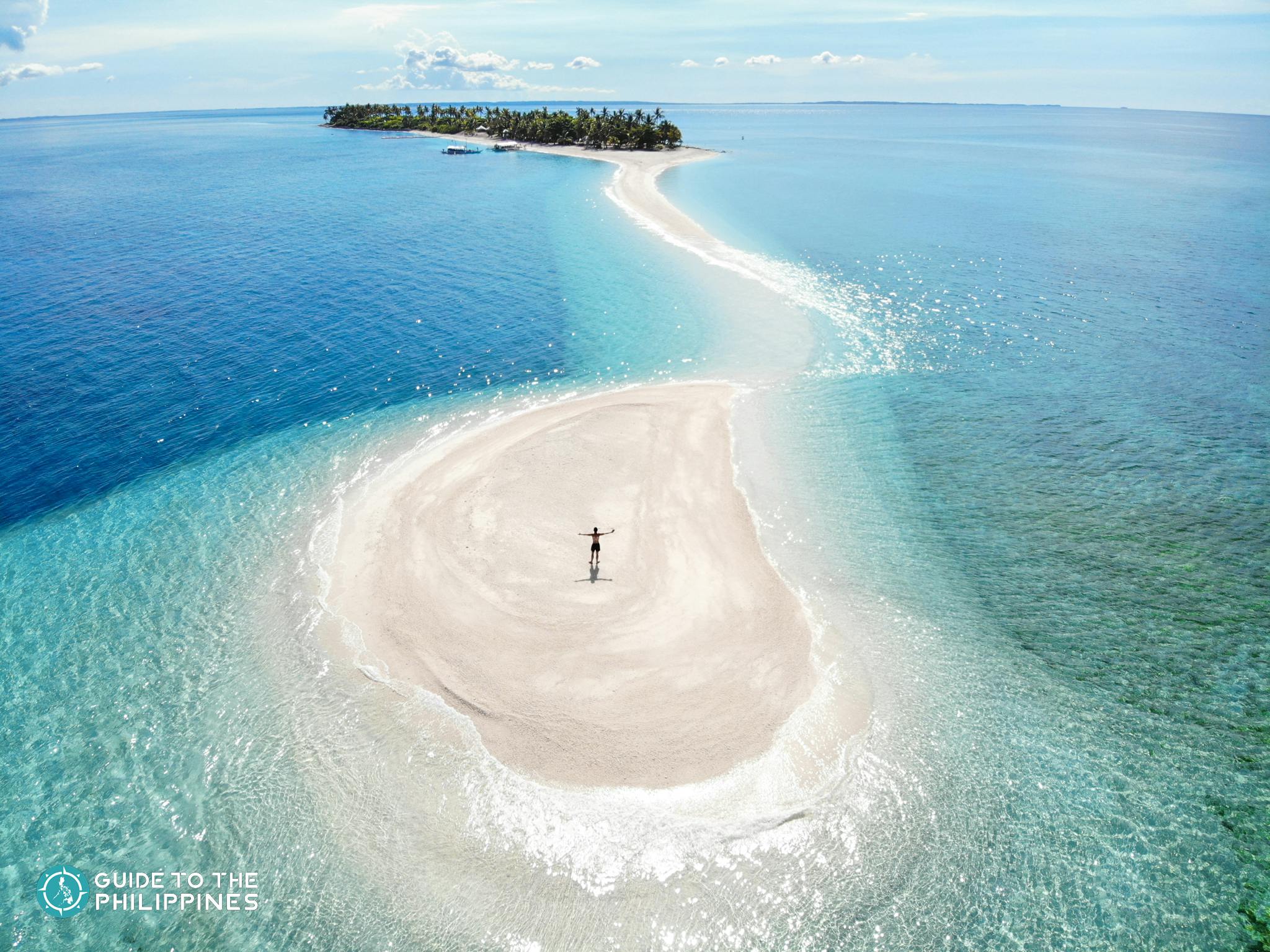
20 Most Beautiful Sandbars in the Philippines: White Sand, Longest, Vanishing
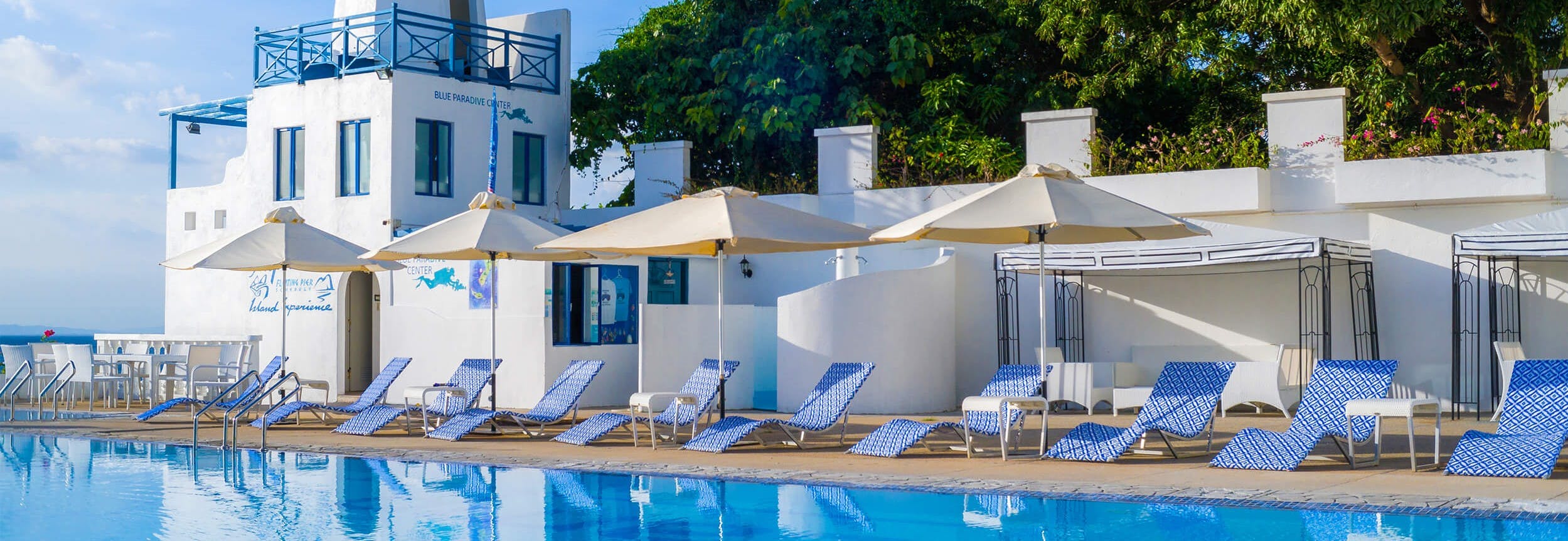
11 Best Santorini-Like Resorts in the Philippines: Near Manila, Cebu, Palawan, Vigan
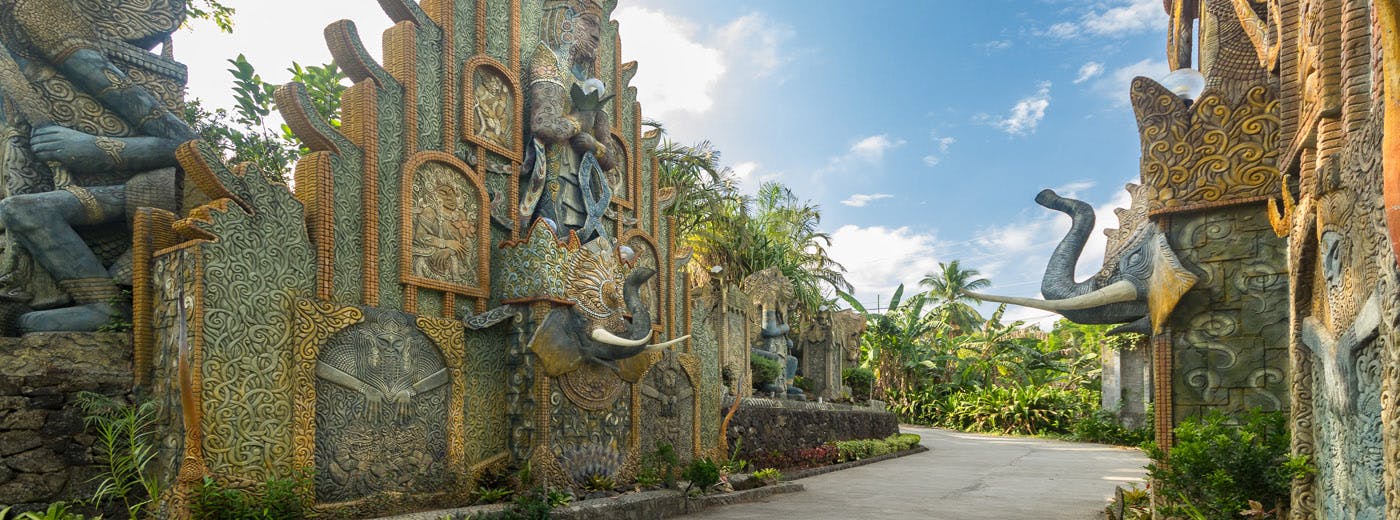
15 Best Tropical Bali-Like Resorts in the Philippines: Near Manila, Siargao, Cebu, Bohol
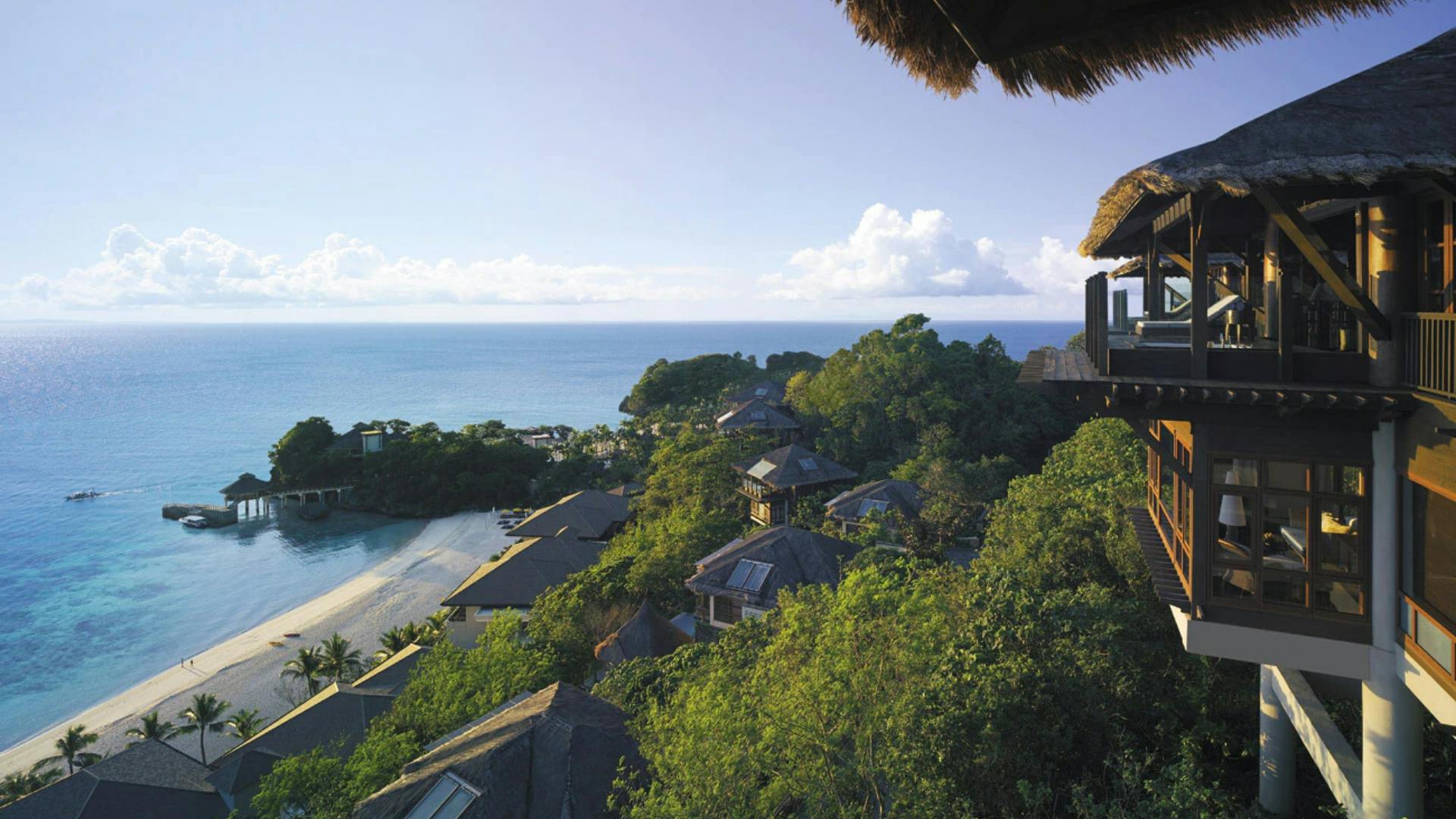
10 Best Treehouse Resorts in the Philippines for a Scenic Getaway at Mountains, Beaches & Rivers
Other interesting articles.
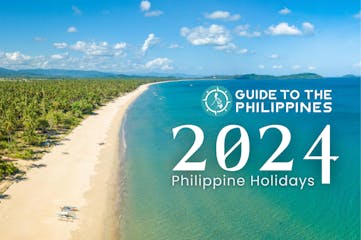
2024 Philippine Holidays Calendar: Holy Week, Long Weekends, When to File Leave, Festivals

Best Golf Courses in the Philippines: Manila and Nearby, Boracay, Cebu

BEST Antipolo Resorts and Hotels: With Pool and Stunning Views

Download the Philippines’ biggest travel marketplace to your phone to manage your entire trip in one place
Scan this QR code with your phone camera and press the link that appears to add the Philippines’ biggest travel marketplace into your pocket. Enter your phone number or email address to receive an SMS or email with the download link.
Top things to do in the Philippines
Discover all the adventures you can experience in the Philippines
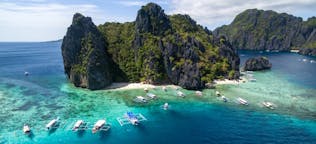
Philippines Tour Packages
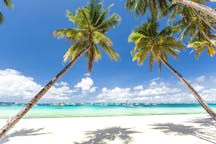
Boracay Island
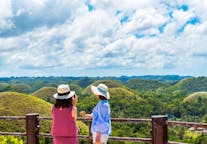
Bohol Island
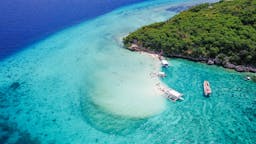
Cebu Island
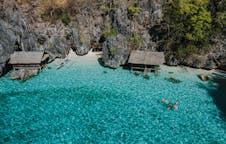
Coron Palawan
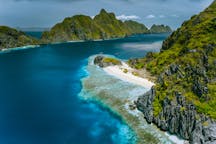
El Nido Palawan
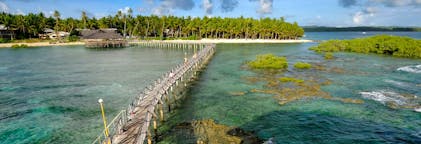
Siargao Island
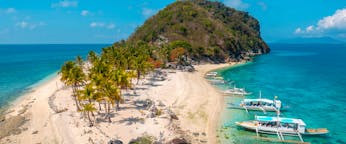
Iloilo City and Nearby

Sustainable Tourism in the Philippines: Balancing Nature and Development
- April 12, 2023
- Nature and Wildlife
Sustainable tourism is crucial for the Philippines, a country known for its natural beauty and biodiversity. Balancing development with nature is a challenge, but eco-tourism, community-based tourism, and responsible tourism practices are being implemented.
In this blog post, we’ll explore why sustainable tourism is important for the Philippines. So if you’re looking to explore the Philippines with conscious travel in mind, let’s dive into some information about sustainable tourism!

Sustainable Tourism in the Philippines
The Philippines is poised to become a leader in Sustainable Tourism. The country has already taken various steps to move towards that goal. There has been an increased focus on greening tourism initiatives. With community-based conservation and development a main driver. There are now more ecotourism sites that allow local communities to be part of the conversation and benefit from their participation in eco-tourism events.
This helps create jobs, resources, and social networks around sustainable practices. The government’s strong tie with international organizations such as UNEP and IUCN offers a great opportunity for the Philippines to continue leading the way. When it comes to sustainable tourism, leveraging both global and local efforts to achieve this important mission.
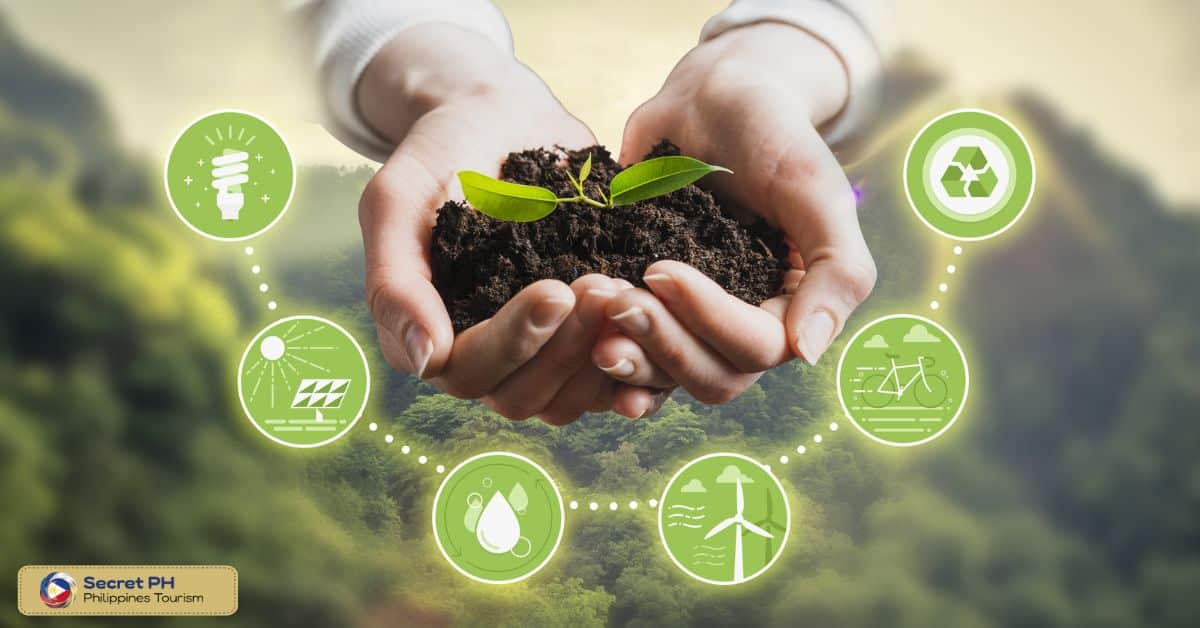
The challenges in implementing sustainable tourism in the Philippines
The Philippines is a beautiful country, filled with stunning natural scenery. However, the growth of different forms of tourism has presented the nation with a unique set of challenges. With rapid development taking place, environmentally conscious measures must be taken into account. For businesses and tourists alike sustainable practices are to be implemented. Here are some of the challenges in implementing sustainable tourism in the Philippines:
Limited Awareness and Understanding
One of the main challenges in implementing sustainable tourism in the Philippines is the limited awareness and understanding of sustainable tourism. Many tourism industry players may not have sufficient knowledge about sustainable tourism practices. But, the public may not appreciate the importance of responsible tourism practices.

Insufficient Resources and Infrastructure
Another challenge is the lack of resources and infrastructure needed to support sustainable tourism. This includes inadequate waste management systems, limited public transportation options, and insufficient funding for conservation of natural resources.
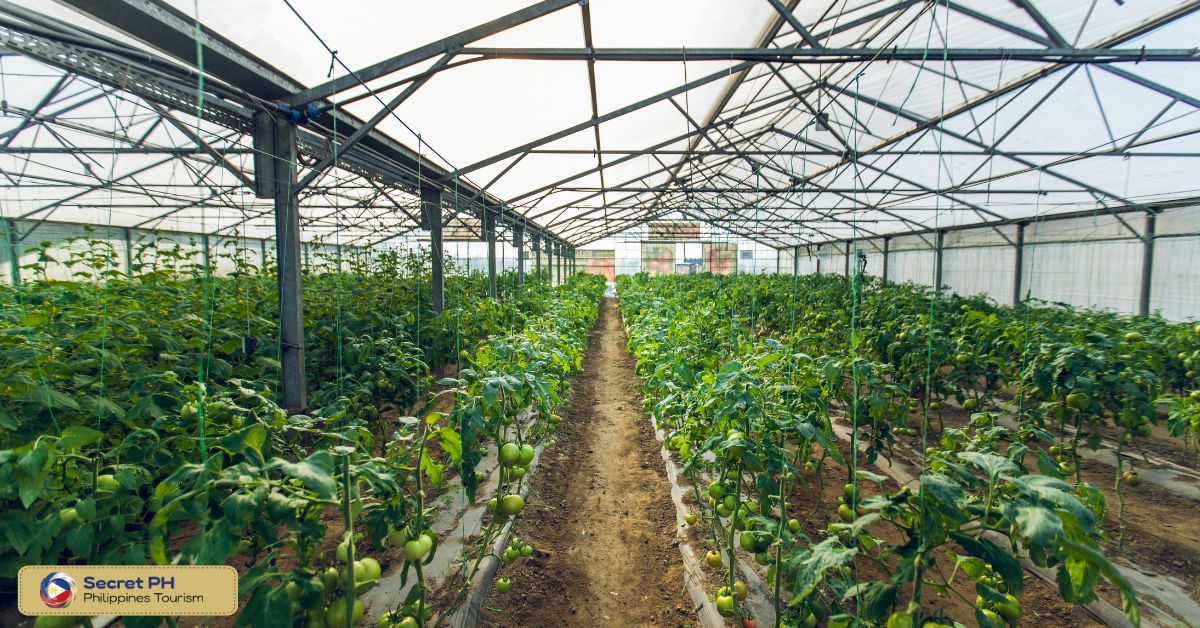
Conflicting Interests and Priorities
Conflicting interests and priorities among stakeholders can create obstacles to sustainable tourism. Some local communities may prioritize short-term economic benefits over long-term sustainability goals. Developers and investors may prioritize profitability over environmental concerns. Such conflicting interests can make it difficult to achieve a balanced approach to tourism development.

Sustainable Tourism Practices in the Philippines
Sustainable tourism practices are gaining importance in the Philippine travel industry. With a variety of biodiverse regions, ranging from mountain paddies to marine sanctuaries. The Philippines is incredibly rich in natural resources and as such has much to offer travelers. Especially those seeking interactive experiences that promote environmental stewardship.
Local governments and tour providers have stepped up their commitment to developing eco-friendly sites and services. Visitors can enjoy the region’s many active adventures while taking part in educational activities that re-connect them with the environment.
Eco-tourism
Writing about eco-tourism and sustainable practices in the Philippines is a subject that should be taken seriously. It can have significant positive effects on the environment. The Department of Tourism in the Philippines has identified several sustainable tourism practices. They are currently under consideration for implementation.
These practices include training tourists ahead of their arrival to reduce waste. Eliminating single-use items such as plastic bottles, discouraging off-road driving, and promoting responsible dietary practices. These principles seek to protect fragile ecosystems while also creating an engaging an experience for visitors.
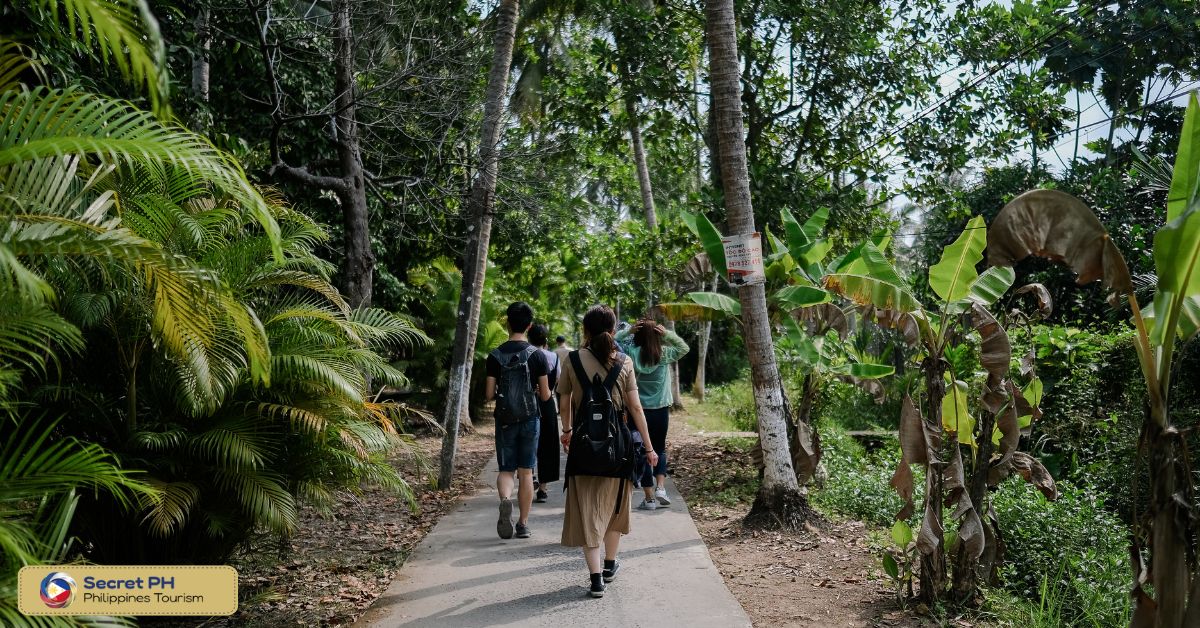
Community-based tourism
Community-based tourism is gaining widespread popularity in the Philippines. Its a mean of promoting sustainable tourism practices. Connecting with local communities allows visitors to gain insights into the cultural identities of different regions. Local communities are also given an opportunity to benefit from the income generated by tourism activities.
Tourists are able to experience immersive journeys through interactions with genuinely friendly local people. They discover historic sites and places of natural beauty. This type of tourism encourages the upkeep of traditional lifestyles. The linguistic dialects and arts which might otherwise be lost due to modernization.
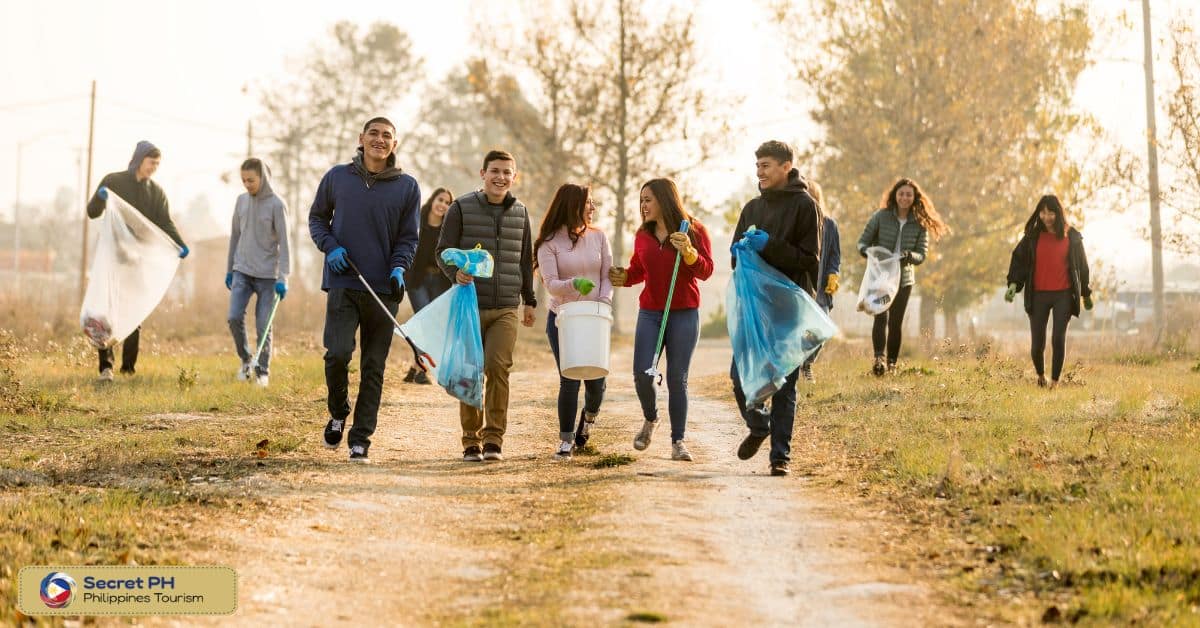
Responsible tourism
The Philippines is an increasingly popular destination for travelers who value responsible tourism. Sustainable practices in the area are quickly gaining traction. The initiatives that reduce the environmental impact of tourism, provide opportunities for meaningful engagement with local cultures. It strengthens accommodations that support those from the poorest backgrounds, and promote sustainable ways.
From joining eco-friendly tours to choosing suppliers dedicated to sustainability, travelers committed to responsible tourism. They are empowered to make conscious decisions that benefit both tourists and locals alike. The continued commitment to sustainable practices throughout its fast growing tourist industry. Philippines continues to be a prime location for travelers.
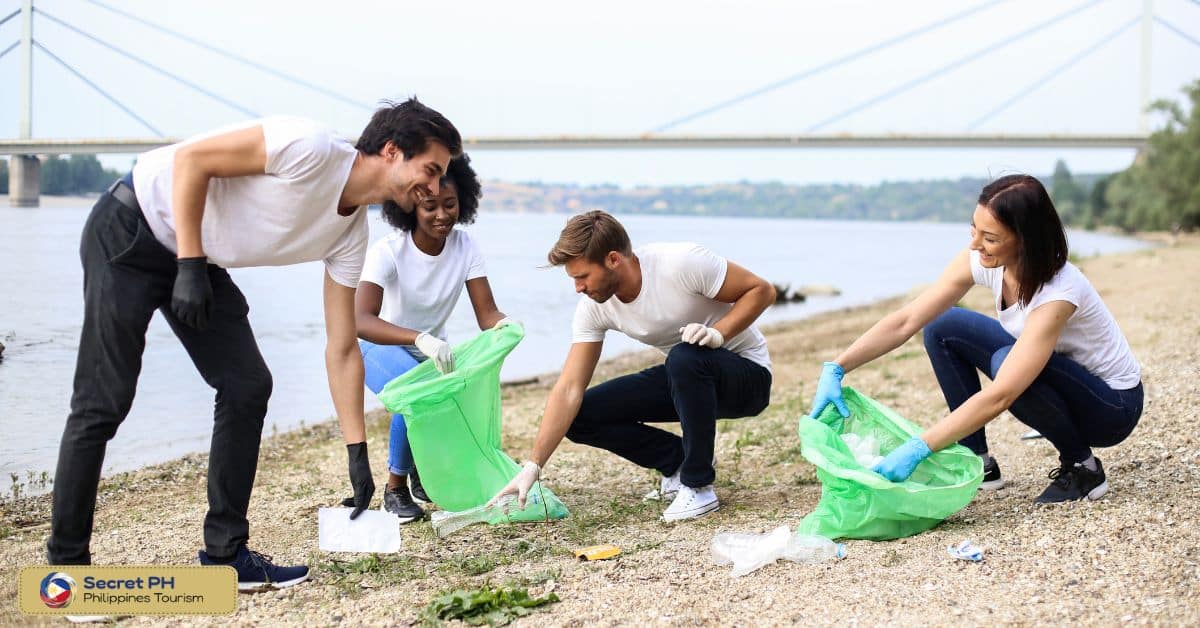
Examples of Sustainable Tourism in the Philippines
The Philippines is becoming a popular destination for eco-enthusiasts and sustainable travel. More and more people taking part in ethical tourism. There are an increasing amount of examples of sustainable tourism in the country for travelers to get involved with! Many local tour operators offer carbon-neutral tours or hikes and biking trails supported by green energy sources. Tourists can also visit communities and participate in environmentally friendly conservation projects.
Tubbataha Reef Natural Park
Tubbataha Reef Natural Park is a paradise for divers and snorkelers. Thanks to its stunning scenery of coral reefs, pristine waters, and beautiful fish. This natural area consists of two atolls known as South and North Atoll. Established in 1988 as part of National Integrated Protected Areas System Act administrated.
It was declared as a UNESCO World Heritage Site in 1993 due to its ecological importance. According to DENR’s website, sustainable tourism ensures that local communities benefit from the site. It also preserves its marine resources through informed management.
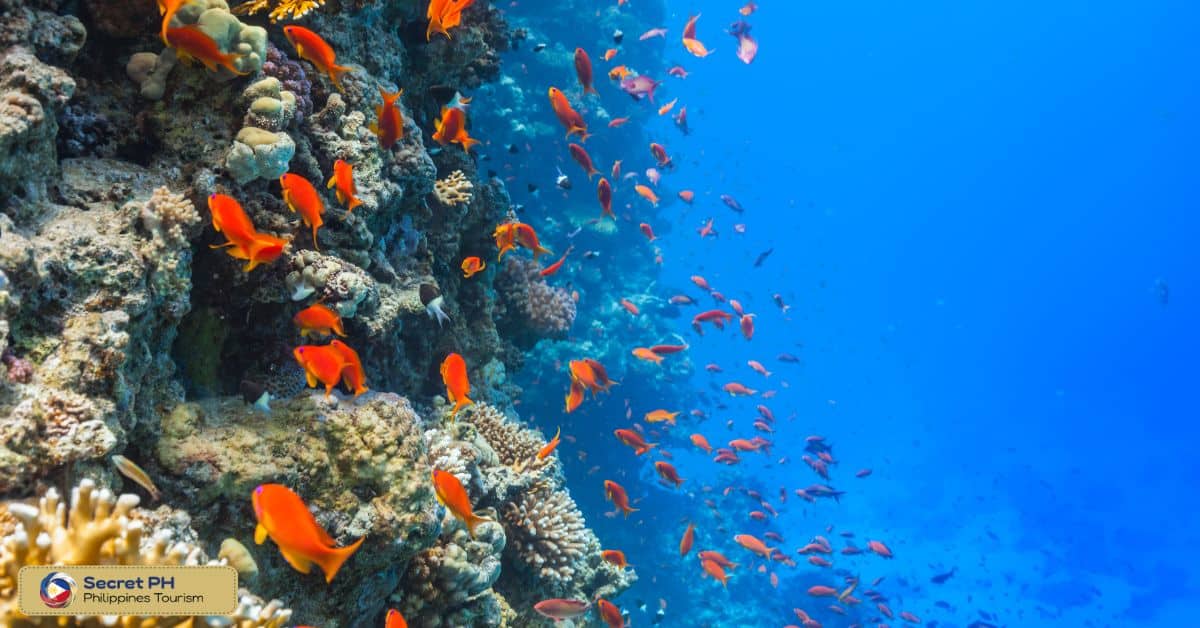
Apo Island is located off the coast of Negros Oriental. A renowned for its effective protection of marine life. It has helped make it one of the best diving spots in the world. It was proclaimed a Marine Reserve and Protected Landscape & Seascape by President Corazon Aquino in 1988. Tourist activities on the island are carefully managed in order to minimize their environmental impact. Activities offered on Apo Island include kayaking, snorkeling, scuba diving and leisurely beach walks.
It is one of the clearest examples of sustainable tourism in the Philippines. Its commitment to conservation combined with a stunning natural environment make it a destination for travelers.
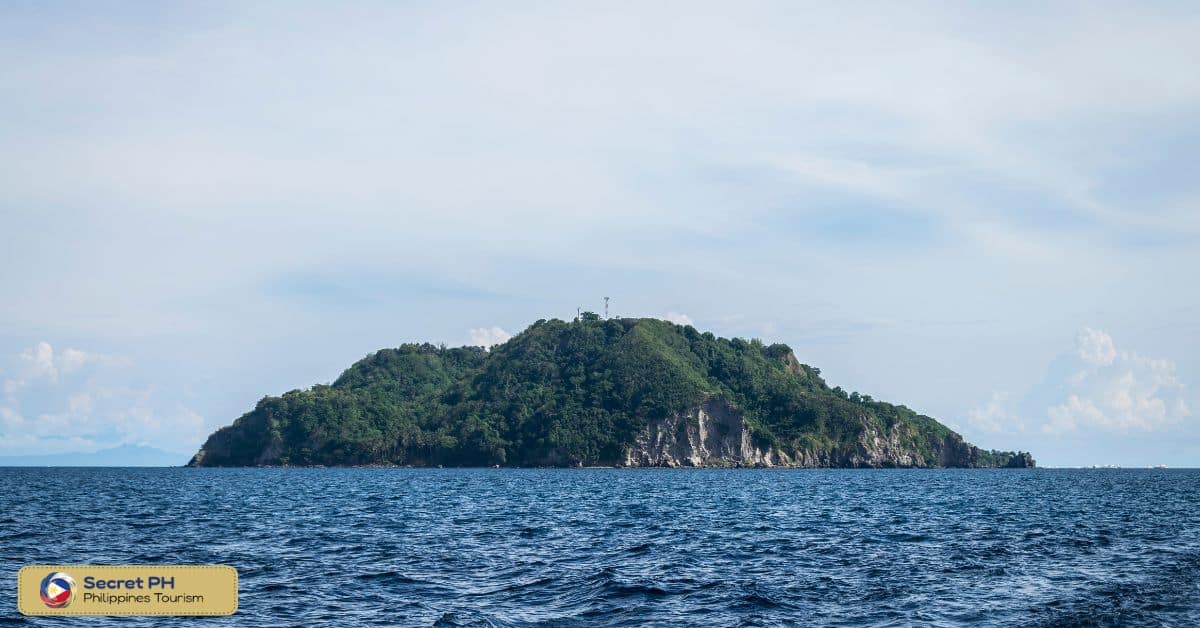
Batanes Islands
Situated in the far north of the Philippine archipelago, The Batanes Islands are an example of sustainable tourism done right. With their unique culture, landscape and historical sites that have remained unspoiled for centuries, visitors are able to experience this ecological paradise with its lush forests, endless coastlines and volcanic hills. The islands also boast some of the best conservation efforts amongst all provinces in the Philippines, emphasizing on environmental protection such as upholding strict regulations against littering and boosting organic farming.
Tourists can even engage in activities such as snorkeling and forest bathing whilst being surrounded by wildlife like sea turtles, tropical fish and a variety of birds without needing to worry about leaving a footprint behind. By visiting these beautiful islands, people are able to gain a deeper understanding of how conservation can be achieved yet still be enjoyable.
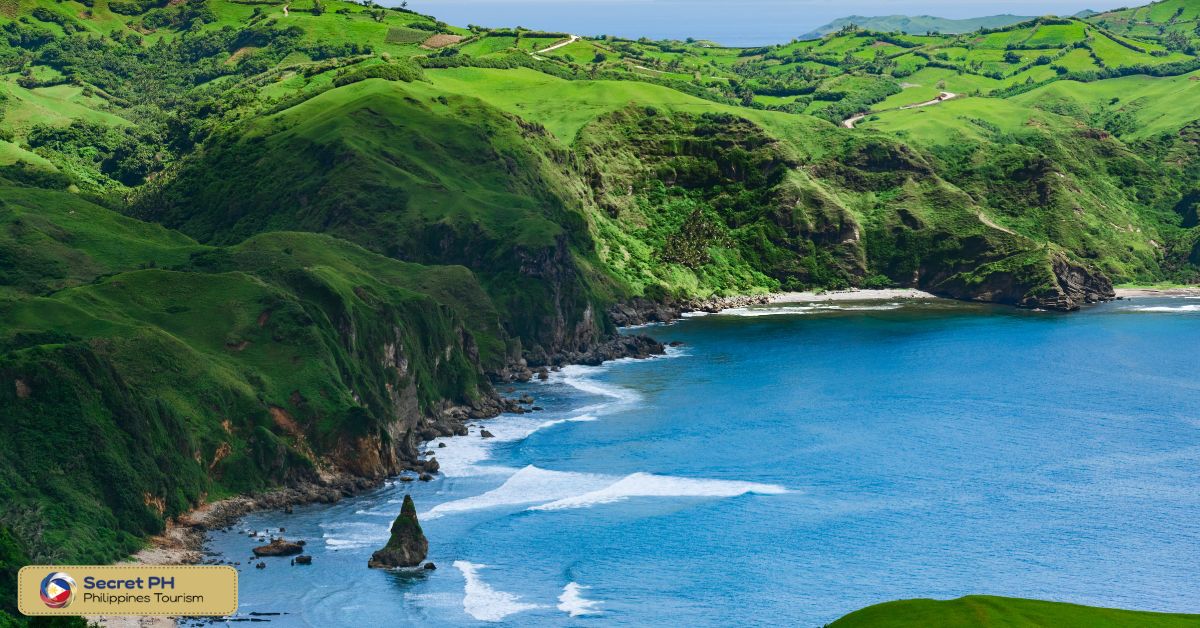
The Role of Stakeholders in Sustainable Tourism
Sustainable tourism is an approach that takes into consideration the environmental, socio-cultural and economic impacts of tourism and provides proactive solutions to mitigate these effects. It requires a collaborative and multi-disciplinary approach between stakeholders in order to achieve the desired objectives in a sustainable manner. Stakeholders play a crucial role in making this happen, as they help provide relevant context, bring resources to the table, clarify roles and responsibilities, identify opportunities and develop consensus among various parties.
Sustainable tourism is of great importance for our world, and governments must play a leading role in coordinating and collaborating between various stakeholders to ensure that it is pursued in an effective manner. Governments should put in place legislation and policies that support sustainable tourism, such as reducing emissions through regulations and supporting local businesses by providing incentives for eco-tourism initiatives.
Additionally, they should provide guidance to the private sector on how to move forward sustainably while supporting the interests of communities, promoting the conservation of natural resources and curbing human-caused pollution. Lastly, governments should serve as facilitators between key stakeholders such as non-profits, tourism industry professionals and citizens at large so that everyone can engage in coming up with solutions to ensure sustainable tourism.
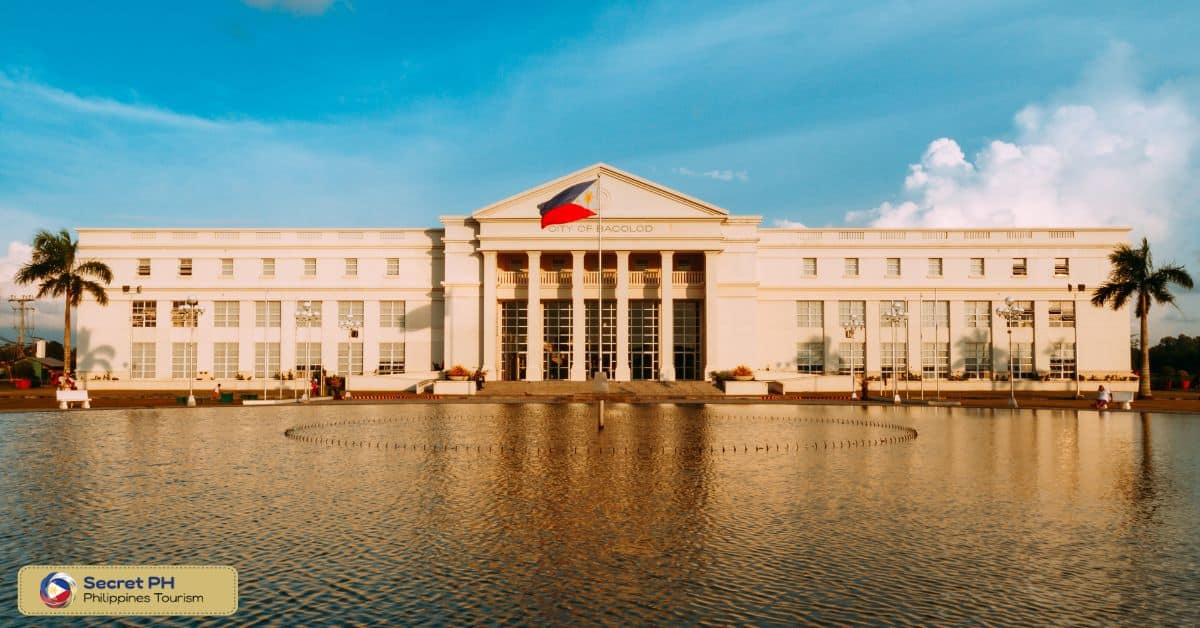
Private sector
These entities are key stakeholders in sustainable tourism, and their responsibility for promoting responsible practices and outcomes should not be overlooked. Private sector players include hotels and transportation providers, but also include tour operators, shops, restaurants, and many other services used by tourists.
From the perspective of sustainability, private sector stakeholders should focus on the guest experience by setting up affordable but quality accommodation options; incorporating information about local culture into hospitality services; selecting locally produced foods to serve guests; using renewable energy sources if possible; actively engaging in environmental activities such as tree planting or beach cleanups.
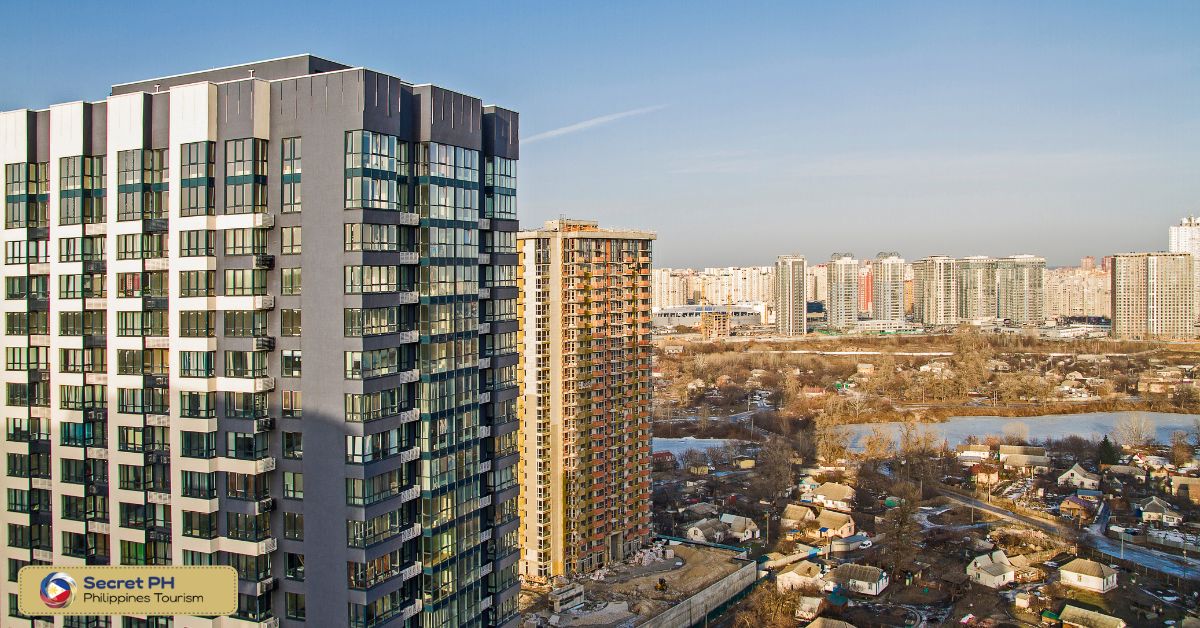
Communities
Communities play an essential role in creating and maintaining sustainable tourism. From residents to business owners and local government, the stakeholders involved have a responsibility to advocate for high quality operations that emphasize positive environmental and socio-economic impact. Residents should educate themselves on green practices, support businesses that take on sustainability efforts, and demand responsible initiatives from their representatives.
Business owners can adopt innovative technologies or new policies that promote renewable energy usage or reduce waste production. Government representatives are tasked with executing laws or regulations pertaining to tourism operations that have long term positive outcomes, while also ensuring immediate community needs are met as well. Sustainable tourism is a shared effort.

Tourists have an essential role to play in creating a sustainable and equitable tourism industry. The processes involved in managing and governing tourism are mediated by stakeholders, including a number of actors such as destination managers, policy makers, and the participants who inhabit this ecosystem.
As one of those key stakeholders, tourists need to be aware that they hold a great deal of power when it comes to their choices when travelling, both socially and environmentally. From conscious consumerism to actively engaging with local communities and understanding some of the complexities associated with travelling responsibly, tourists have obligations and opportunities to help drive positive change for our planet.

In Conclusion
The sustainable tourism industry in the Philippines can be a great vehicle for both economic development, as well as conservation of natural and cultural heritage if properly managed. By focusing on maximizing the use of local resources, utilizing ecotourism practices, and placing a high importance on environmental education.
Through these efforts, not only can tourists enjoy all that one of the most biodiverse countries on Earth has to offer, but rural local communities and habitats can continue to reap the benefits while maintaining both their rich culture and ancestral environment.
Pongas Falls, a serene haven in Mountain Province, boasts a rich geological past. Tucked amid vibrant flora and wildlife,
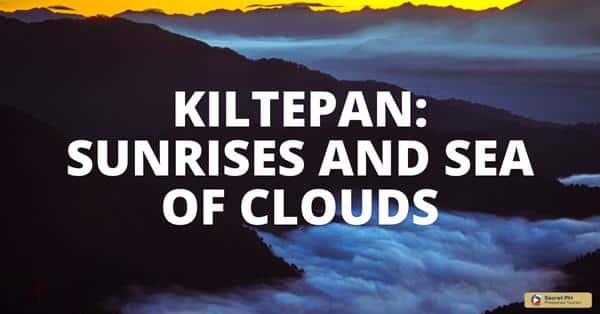
Kiltepan in the Philippines is a morning marvel known for its captivating sunrise and the mesmerizing sea of clouds
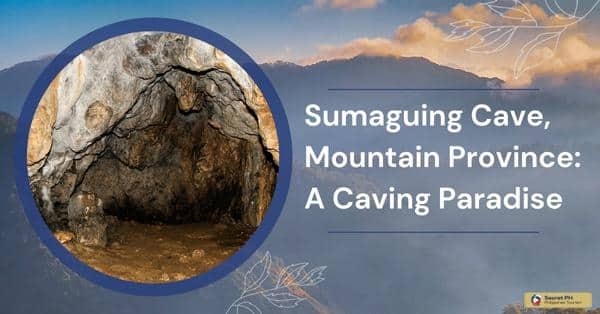
Sumaguing Cave in Mountain Province is a geological marvel with unique rock formations, offering thrilling caving adventures for all

Mountain Province’s 8 Beautiful Waterfalls, from Canabo’s hidden gem to the enchanting Paradise Falls, offer a refreshing escape into
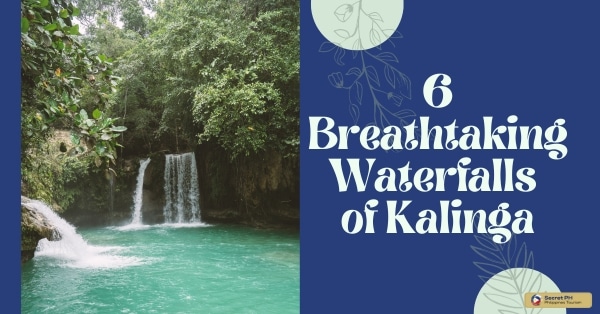
Visiting Kalinga in the Philippines is a must for anyone seeking an amazing and unique experience. Not only is
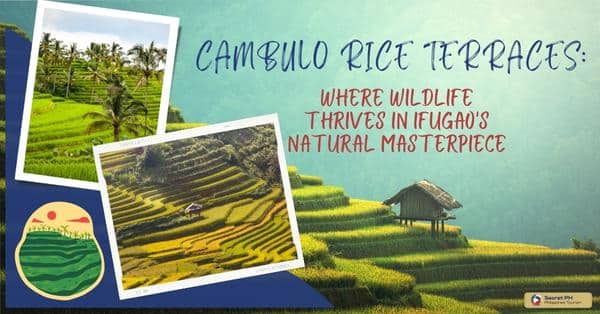
Cambulo Rice Terraces in Ifugao is an enchanting natural marvel. Carved meticulously into the mountains, these terraces boast a
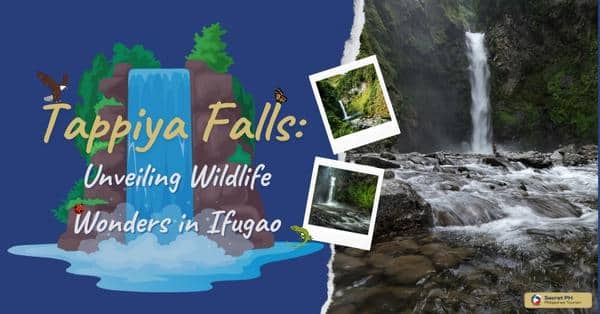
Ifugao, a pristine paradise in the Philippines, offers a haven for wildlife enthusiasts. Tappiya Falls, a concealed treasure in
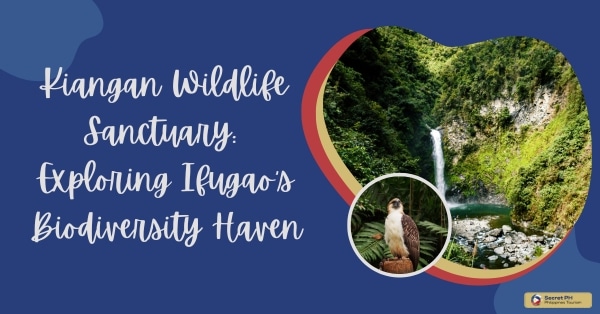
Kiangan Wildlife Sanctuary, nestled in Ifugao’s heart, is a biodiversity haven awaiting your exploration. This sanctuary teems with diverse
What are the green tourism practices in the Philippines?
Green tourism practices in the Philippines include eco-friendly accommodations, wildlife conservation, sustainable transportation, and community engagement for responsible tourism.
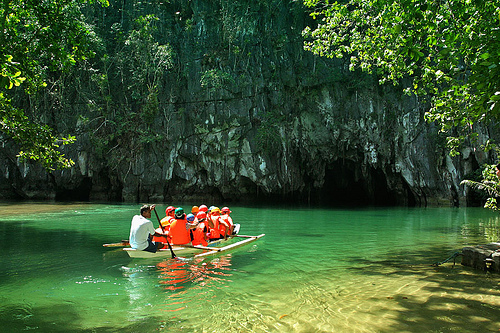
Table of Contents
Eco-friendly Accommodations
Eco-friendly accommodations are a growing trend in the Philippines, as both tourists and businesses become more environmentally conscious. These lodgings focus on sustainability, employing practices that minimize their carbon footprint, conserve resources, and actively participate in local environmental initiatives.
Green-certified Hotels and Resorts
Green-certified hotels and resorts have met specific standards set by eco-certification bodies, ensuring that their operations respect and protect the environment. These establishments prioritize:
- Energy Efficiency : Utilizing solar panels, LED lighting, and other renewable energy sources.
- Water Conservation : Implementing systems like greywater recycling and rainwater harvesting.
- Sustainable Sourcing : Using locally-sourced, organic materials for food and amenities.
- Guest Education : Providing guests with information about sustainability and how they can contribute during their stay.
Some notable green-certified hotels in the Philippines include the El Nido Resorts in Palawan and the Nay Palad Hideaway in Siargao.
Homestays and Community-based Lodging
Homestays and community-based lodgings offer tourists a chance to live with local families and immerse themselves in the local culture. These accommodations often come with several eco-friendly advantages:
- Reduced Carbon Footprint : Since these are existing homes, no additional infrastructure is needed.
- Local Sourcing : Meals are usually prepared using local ingredients, reducing transportation emissions.
- Cultural Exchange : Tourists learn eco-friendly practices from their host families, enhancing cultural understanding and respect for the environment.
Visiting places like the Banaue Rice Terraces often gives tourists the opportunity to experience these types of lodgings.
Environmentally Conscious Architecture and Design
The Philippines, with its rich cultural and environmental heritage, has a unique opportunity to integrate traditional architectural techniques with modern eco-friendly designs.
- Natural Materials : Utilizing bamboo, cogon grass, and nipa palm which are abundant, renewable, and biodegradable.
- Passive Cooling : Designing structures that allow natural airflow, reducing the need for air conditioning.
- Green Roofs and Walls : Incorporating vegetation into building design to mitigate heat and promote biodiversity.
Sustainable Transportation Methods
Sustainable transportation plays a vital role in reducing the environmental impact of travel. As the Philippines becomes an increasingly popular tourist destination, efforts to promote eco-friendly transit methods are crucial for preserving its natural beauty and reducing carbon emissions.
Promoting Non-motorized Transport (e.g., Biking, Walking)
Non-motorized transport, especially biking and walking, offers numerous benefits:
- Low Environmental Impact : Zero emissions and no need for fuel.
- Health Benefits : Provides physical exercise and reduces the risk of various diseases.
- Economic Benefits : Less maintenance cost and no fuel expenses.
Cities like Iloilo have started creating bike-friendly infrastructures, encouraging locals and tourists to embrace cycling as a primary mode of transportation.
Green Vehicle Initiatives
Green vehicle initiatives emphasize the use of vehicles with minimal environmental impact. These initiatives include:
- Electric Vehicles (EVs) : EVs run on electricity, emitting zero tailpipe pollutants. Several cities are now introducing electric jeepneys and tricycles.
- Hybrid Vehicles : Combining conventional engines with electric motors, hybrids offer better fuel efficiency and reduced emissions.
- Fuel Alternatives : Exploring options beyond fossil fuels, such as biofuels sourced from plants like the Jatropha .
The Philippines is progressively recognizing the importance of these initiatives and implementing them in various regions.
Carpooling and Shared Transportation
Shared transportation methods, including carpooling, reduce the number of vehicles on the road, leading to decreased traffic congestion and pollution.
- Ride-sharing Apps : Platforms like Grab allow users to share rides with others going in the same direction.
- Carpooling Lanes : Designated road lanes for vehicles with multiple passengers to promote carpooling.
- Vanpool Services : Larger vehicles transporting multiple passengers, popular for longer distances or commuting between cities.
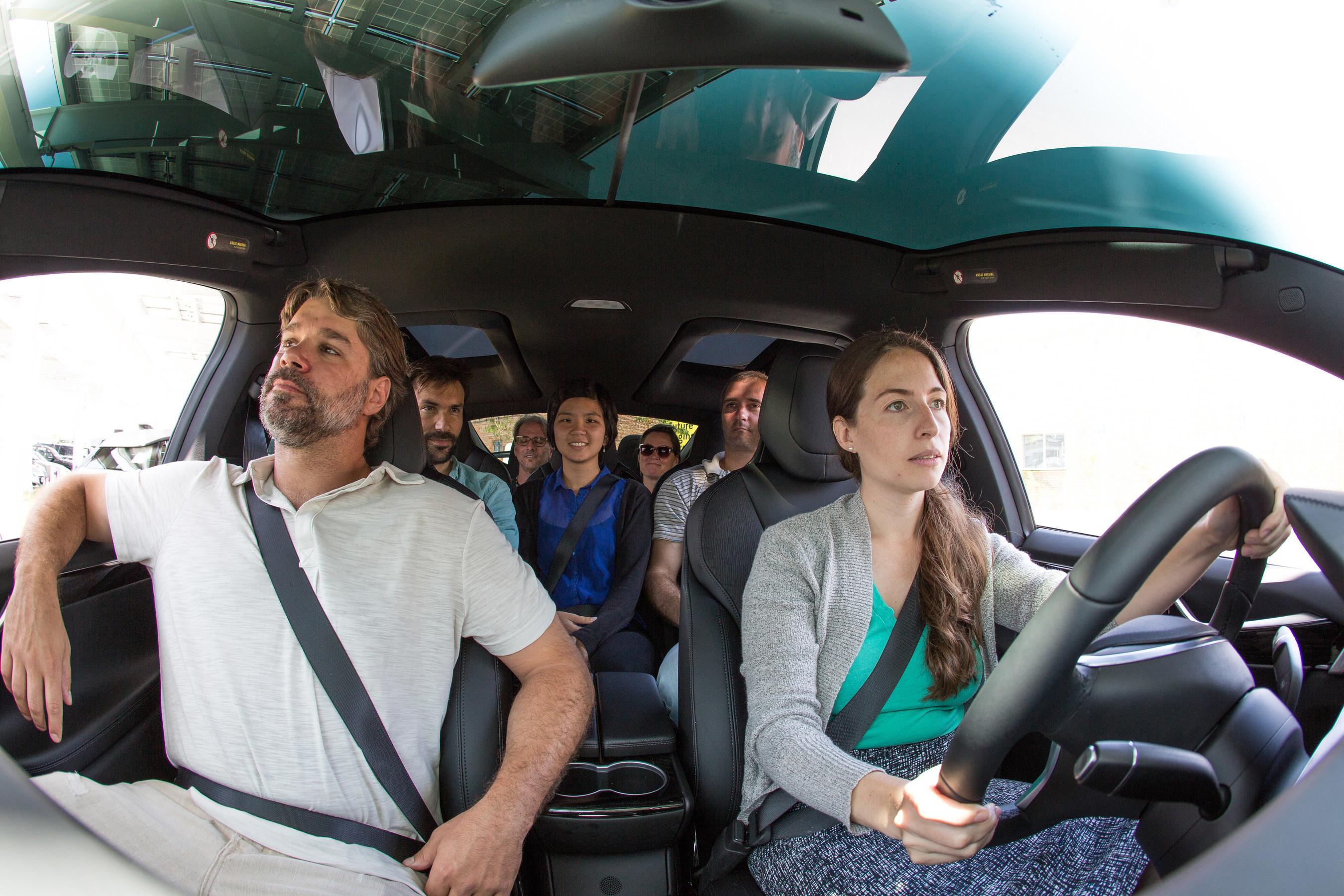
Nature and Wildlife Conservation
The Philippines, an archipelago brimming with biodiversity, holds the distinction of being one of the world’s mega-diverse countries. Nature and wildlife conservation, therefore, are not just necessary for ecological balance but also crucial for preserving the nation’s rich natural heritage for future generations.
Marine Protected Areas and Diving Sanctuaries
The Philippines is home to a significant portion of the world’s coral reefs, making marine conservation of paramount importance. Marine Protected Areas (MPAs) and diving sanctuaries are established to:
- Preserve Marine Biodiversity : Protecting endangered species like the Philippine eagle ray and various coral species.
- Support Fisheries Management : Ensuring that fish populations remain healthy and can support local communities.
- Boost Eco-tourism : Diving sanctuaries attract divers from around the globe. Places like Tubbataha Reefs Natural Park have become world-renowned diving spots due to their pristine marine ecosystems.
Wildlife Sanctuaries and Conservation Projects
The diverse landscapes of the Philippines, from mountain ranges to rainforests, house a vast array of wildlife. These sanctuaries and projects aim to:
- Protect Endangered Species : Such as the Philippine tarsier and the Philippine eagle .
- Preserve Habitats : Ensuring that ecosystems remain intact and can sustain their resident species.
- Educate the Public : Awareness campaigns and eco-tours that highlight the importance of wildlife conservation.
Conservation projects like the Philippine Eagle Foundation are at the forefront of these efforts.
Reforestation and Mangrove Restoration Efforts
Forests and mangroves play vital roles in the environment, from acting as carbon sinks to preventing soil erosion and protecting coastlines.
- Replanting Activities : Reforestation projects aim to bring back forests that have been lost to logging or slash-and-burn farming.
- Mangrove Restoration : Mangroves are essential for coastal protection, fishery resources, and habitat diversity. Efforts in places like Bakhawan Eco-Park showcase successful mangrove restoration projects.
- Community Involvement : Engaging local communities ensures the sustainability of these efforts and provides locals with a vested interest in the success of conservation projects.

Local and Organic Culinary Experiences
The Philippines boasts a rich culinary tapestry, influenced by its indigenous communities, historical trade, and colonization. As awareness grows about sustainable and healthy eating, local and organic culinary experiences have been thrust into the limelight, offering a blend of tradition and modern eco-conscious practices.
Farm-to-table Dining Options
Farm-to-table dining emphasizes a direct relationship between farms and dining establishments, ensuring the freshest and most ethical ingredients:
- Fresh and Seasonal Produce : Ingredients are harvested at their peak, ensuring optimal taste and nutrition.
- Reduced Carbon Footprint : Local sourcing means fewer transportation emissions.
- Support for Local Farmers : Direct partnerships empower local farmers and ensure they receive fair compensation for their hard work.
Popular restaurants in places like Baguio have embraced this concept, with chefs working hand in hand with local farmers.
Organic Farm Tours and Agri-tourism
Organic farming, which shuns synthetic chemicals and genetically modified organisms, has gained traction in the Philippines. As a result, agri-tourism has seen a surge:
- Educational Tours : Visitors learn about organic farming techniques, composting, and natural pest control methods.
- Hands-on Experience : Tourists can participate in farming activities, from planting to harvesting.
- Taste Freshly Harvested Produce : Many farms offer meals made from their own produce, allowing visitors to savor the fruits of their labor.
Places like the Costales Nature Farms in Laguna provide immersive experiences, bridging the gap between consumers and the source of their food.
Promotion of Indigenous and Local Cuisines
Promoting local cuisines is more than just a culinary endeavor; it’s a journey into the heart of Filipino culture:
- Traditional Recipes : From the spicy Bicol Express to the tangy Sinigang , Filipino cuisine is a testament to its diverse cultural influences.
- Indigenous Ingredients : Use of native ingredients like the purple yam (ube) or the sour tamarind highlights the country’s rich biodiversity.
- Culinary Workshops : Tourists can learn to cook Filipino dishes, taking home more than just memories of delicious meals.
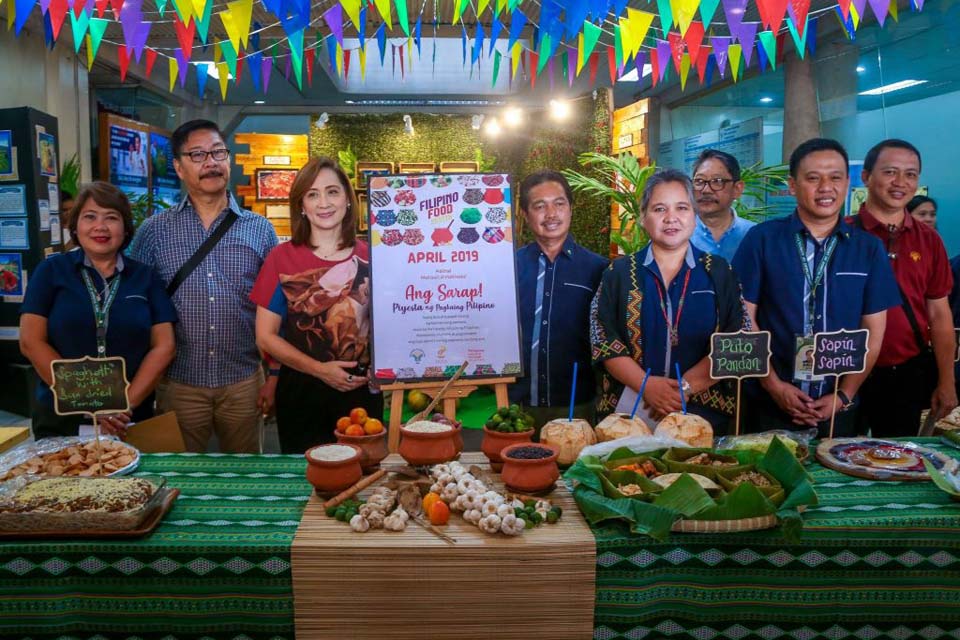
Community-based Tourism
Community-based tourism in the Philippines presents a unique opportunity for travelers to immerse themselves deeply into local cultures, traditions, and lifestyles. This form of tourism puts the community at the forefront, ensuring that the benefits of tourism are equitably distributed among local residents.
Empowering Local Communities
The core of community-based tourism lies in empowerment:
- Local Decision-making : Communities have a say in the type and extent of tourism activities they want to engage in, ensuring that their values and traditions are upheld.
- Economic Benefits : A significant portion of the revenue generated goes back to the community, aiding in local development and improving living standards.
- Capacity Building : Residents are trained in various skills, from hospitality to management, ensuring long-term benefits even beyond tourism.
Examples include the Ivatan people of Batanes who offer unique insights into their island life and traditions.
Engaging in Cultural and Heritage Tours
These tours are designed to offer an authentic experience of Filipino culture:
- Traditional Performances : Witness traditional dances, songs, and rituals that have been passed down for generations.
- Historical Sites : Explore ancient structures, churches, and landmarks, with local guides sharing tales and histories that aren’t found in typical guidebooks.
- Local Festivals : Participate in local festivals like Ati-Atihan or Pahiyas, celebrating with the community and experiencing the festivities firsthand.
Through these experiences, travelers gain a deeper understanding and appreciation of the Philippines’ diverse cultural tapestry.
Supporting Local Artisans and Craftsmen
Filipino craftsmanship, from weaving to pottery, is renowned for its intricacy and uniqueness:
- Workshop Visits : Tour local workshops, watching artisans at work and understanding the intricacies of their craft.
- Purchase Handmade Goods : Buy directly from craftsmen, ensuring fair prices and supporting their livelihood.
- Interactive Sessions : Engage in workshops where travelers can try their hand at local crafts, be it weaving the traditional “banig” mats or molding pottery.
Minimizing Waste and Plastic Use
As global awareness about the environmental impacts of waste, especially single-use plastics, grows, the Philippines has embarked on a series of initiatives aimed at promoting sustainability in its tourism sector. These efforts ensure that the beauty of the islands remains intact for future generations while also providing responsible ways for travelers to enjoy their visit.
Plastic-free Tourism Campaigns
Combatting plastic pollution has become central to sustainable tourism:
- Awareness Programs : Educating tourists about the impacts of single-use plastics on marine life and local ecosystems.
- Alternative Products : Promoting the use of bamboo straws, reusable water bottles, and cloth bags as alternatives to single-use plastics.
- Establishment Pledges : Many hotels, restaurants, and shops pledge to minimize or eliminate plastic in their operations.
Destinations like Boracay have implemented measures to reduce plastic waste, particularly after its recent rehabilitation.
Zero-waste Initiatives at Tourist Spots
Promoting a zero-waste ethos ensures tourist spots remain pristine:
- Reusable Containers : Encouraging visitors to bring reusable containers for food and drinks.
- Composting : Setting up composting facilities for organic waste at popular tourist destinations.
- Trash Collection Points : Designated areas for tourists to dispose of waste, ensuring easy collection and proper disposal.
Waste Management and Recycling Programs
Proper waste handling and recycling play a crucial role:
- Segregation at Source : Encouraging tourists and establishments to segregate waste for more efficient recycling.
- Recycling Facilities : Establishing facilities where recyclable materials like paper, glass, and certain plastics are processed.
- Upcycling Initiatives : Transforming waste materials into valuable products, often showcased in local markets and fairs.
Water Conservation Efforts
Water is a precious resource, and conserving it is of paramount importance, especially in tourist-heavy areas:
Rainwater Harvesting in Resorts and Hotels
Collecting and storing rainwater reduces dependency on local freshwater sources:
- Roof Collection Systems : Resorts install systems to collect rainwater from rooftops.
- Storage and Filtration : Collected water undergoes filtration for various uses, including gardening and flushing toilets.
Promotion of Water-saving Activities
Tourists can play a role in water conservation:
- Shorter Showers : Encouraging tourists to reduce their shower times.
- Towel and Linen Reuse : Hotels often provide options for guests to reuse towels and linens, reducing the need for daily washing.
- Awareness Campaigns : Informative campaigns highlighting the importance of water conservation and practical tips for tourists.
Protection and Clean-up of Freshwater Sources
Ensuring the cleanliness of freshwater sources benefits both locals and tourists:
- Regular Clean-ups : Organized efforts to clean lakes, rivers, and waterfalls, often involving both community members and tourists.
- Protected Zones : Designating certain freshwater sources as protected, limiting human activities that could harm the water quality or surrounding ecosystem.

Green Tourism Education and Advocacy
In the face of growing environmental challenges, education and advocacy become instrumental in shaping a sustainable future for tourism. The Philippines, with its diverse ecosystems and a booming tourism sector, recognizes the importance of informed stakeholders – from tour operators to the tourists themselves. Through various initiatives, the country aims to instill a sense of responsibility and knowledge about green tourism practices.
Workshops and Training for Tourism Operators
Ensuring that those directly involved in the tourism industry are well-informed and equipped is paramount:
- Sustainable Practices : Sessions that introduce tourism operators to eco-friendly methods, such as energy conservation, waste management, and sustainable sourcing.
- Eco-tourism Best Practices : Training on how to conduct tours that are minimally invasive to natural habitats, promote local cultures, and benefit local communities.
- Certification Programs : Courses that, upon completion, grant certifications to operators, signifying their commitment and expertise in green tourism.
Organizations like the Department of Tourism often lead these initiatives, ensuring a standardized approach across the archipelago.
Awareness Campaigns for Tourists
An informed tourist is more likely to make eco-friendly choices:
- Eco-friendly Travel Tips : Brochures, videos, and online content educating tourists on how to reduce their environmental footprint while traveling.
- Interactive Sessions : Events where tourists can learn about the local ecology, the challenges it faces, and how they can help.
- Eco-challenges : Activities that gamify green practices, encouraging tourists to adopt them. For instance, rewards or recognition for tourists who manage to produce the least amount of waste during their stay.
Tourist hotspots like Palawan often have awareness campaigns highlighting the fragility of their ecosystems and the role tourists play in their preservation.
Collaborations with Environmental NGOs
Partnering with organizations that have expertise and resources in environmental conservation can amplify efforts:
- Joint Projects : Collaborative initiatives, such as coral reef restoration or tree planting, that leverage the strengths of both the tourism sector and environmental NGOs.
- Knowledge Sharing : NGOs often possess deep insights into local environmental issues. Collaborating ensures that the tourism sector is aware and can make informed decisions.
- Fundraising and Support : Tourism stakeholders can support NGOs through fundraising events, donations, or by promoting the NGOs’ work to tourists who might be interested in volunteering or donating.
Related Posts
Is tourism high in the philippines, what is the most visited place in the philippines, what kind of tourism is in the philippines, why is philippines rich in tourism.


Islands Philippines
Hospitality Industry in Phiippines
- Accommodations
- Dining and Cuisine
- Events and Conferences
- Wellness and Relaxation
Islands Philippines - Hotels, Recreation, Travel, & Leisure Industry

Discover Tranquility: 6 Best Yoga Retreats in the Philippines

Enhance Your Skills: 6 Beach Resort Management Workshops in the Philippines

Unveiling the 6 Best Filipino Street Food You Must Try

Unveiling the Latest Spa and Massage Trends: Insights from Philippine Hospitality

Discover the Power of Nature: How Coconut Oil Enhances Filipino Wellness Treatments

Discover the Best Sustainable Accommodations in the Philippines
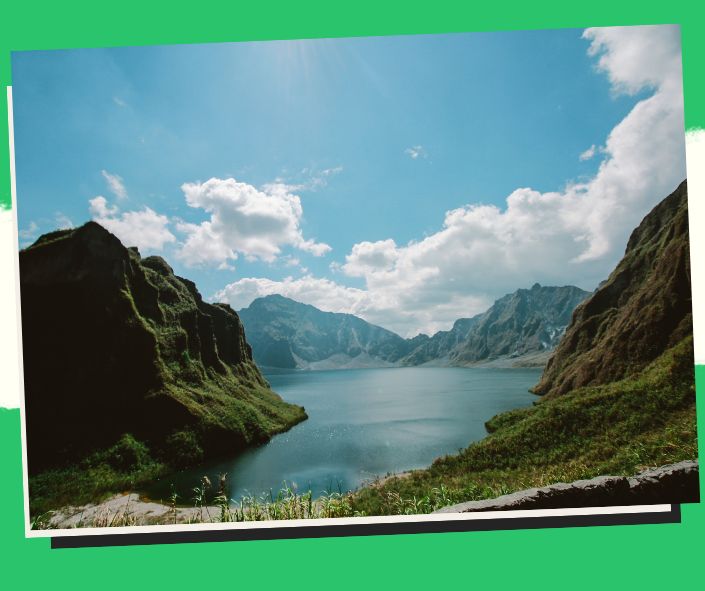
Discover Eco-Friendly Travel: Sustainable Tourism in the Philippines
Make a positive impact with your travels. Discover sustainable tourism options in the Philippines.
Guide to Sustainable Tourism in Philippines Hospitality 🌿🇵🇭
Table of Contents
The Philippines, with its breathtaking natural beauty and vibrant culture, is a dream destination for travelers around the world. However, the increasing popularity of tourism has also brought environmental and socio-cultural challenges. In this guide, we’ll explore the concept of sustainable tourism and how you can contribute to preserving the beauty and authenticity of the Philippines while enjoying your travel experience.
Understanding Sustainable Tourism
Sustainable tourism is a way of traveling that respects and preserves the environment, supports local communities, and promotes cultural heritage. It aims to minimize negative impacts on the environment and maximize positive contributions to local economies and communities.
Why Sustainable Tourism Matters
- Preservation of Natural Resources: Protecting fragile ecosystems, biodiversity, and natural habitats.
- Support for Local Communities: Empowering local residents economically and socially.
- Cultural Preservation: Safeguarding indigenous traditions, heritage sites, and cultural practices.
- Climate Change Mitigation: Reducing carbon emissions and promoting eco-friendly practices.
Sustainable Practices in the Philippines 🌏
The Philippines is committed to sustainable tourism initiatives, with various organizations, government agencies, and local communities working together to promote responsible travel. Here are some sustainable practices you can adopt during your visit:
1. Choose Eco-Friendly Accommodation
Opt for eco-lodges, eco-resorts, and green hotels that prioritize energy efficiency, waste reduction, and water conservation. Look for certifications such as LEED (Leadership in Energy and Environmental Design) or accreditation from organizations like the Green Hotels Association.
2. Support Community-Based Tourism
Engage in activities that directly benefit local communities, such as homestays, community tours, and artisan workshops. By spending your money locally and interacting with residents, you contribute to sustainable livelihoods and cultural exchange.
3. Respect Wildlife and Marine Life
Observe wildlife in their natural habitats without disturbing or feeding them. Choose responsible tour operators for activities like whale watching, snorkeling, and diving, ensuring they follow ethical guidelines and conservation practices.
4. Reduce Your Carbon Footprint
Minimize your environmental impact by using public transportation, carpooling, or cycling instead of renting a car. Offset your carbon emissions by participating in tree-planting initiatives or supporting renewable energy projects.
5. Conserve Water and Energy
Practice water-saving techniques such as taking shorter showers, reusing towels, and reporting leaks. Turn off lights, air conditioners, and electronics when not in use to conserve energy and reduce greenhouse gas emissions.

6. Reduce, Reuse, Recycle
Adopt a zero-waste mindset by avoiding single-use plastics, bringing reusable water bottles, bags, and utensils. Separate and recycle waste whenever possible, and participate in beach clean-ups or community recycling programs.
Planning Your Sustainable Trip ✈️
Before embarking on your sustainable adventure to the Philippines, consider the following tips to ensure a meaningful and responsible travel experience:
1. Research Responsible Tour Operators
Look for tour operators and travel agencies that prioritize sustainability, community engagement, and environmental conservation. Read reviews, ask questions about their practices, and choose those committed to responsible tourism principles.
2. Pack Light and Mindfully
Pack only what you need and avoid overpacking, as excess luggage contributes to fuel consumption and carbon emissions. Bring eco-friendly essentials like reusable toiletry containers, eco-friendly sunscreen, and biodegradable soap.
3. Learn About Local Cultures and Customs
Educate yourself about Filipino customs, traditions, and etiquette to show respect and appreciation for the local culture. Support indigenous communities and artisans by purchasing ethically-made souvenirs and crafts.
4. Offset Your Carbon Emissions
Calculate your carbon footprint using online calculators and offset your emissions by investing in carbon offset projects or donating to environmental organizations. Choose airlines that offer carbon offset programs or support sustainable aviation initiatives.
5. Practice Responsible Wildlife Tourism
Choose wildlife experiences that prioritize animal welfare and conservation, such as ethical elephant sanctuaries, rehabilitation centers, and wildlife reserves. Avoid attractions that promote animal exploitation or captivity for entertainment.
Benefits of Sustainable Tourism in the Philippines 🌍
- Preservation of Natural Resources 🌿 Sustainable tourism practices help conserve the Philippines’ biodiversity, including its coral reefs, rainforests, and marine life.
- Cultural Preservation and Respect 🏞️ By promoting respect for local cultures and traditions, sustainable tourism contributes to preserving the Philippines’ diverse cultural heritage.
- Community Empowerment and Economic Development 💼 Sustainable tourism initiatives support local communities by providing employment opportunities, promoting small businesses, and empowering indigenous groups.
- Reduced Environmental Impact 🌏 Sustainable tourism aims to minimize negative environmental impacts, such as pollution, habitat destruction, and carbon emissions, through responsible practices.
- Enhanced Visitor Experiences 🌅 Sustainable tourism offers authentic and immersive experiences that allow visitors to connect with nature and local communities on a deeper level.
- Long-term Viability of Tourism Industry 📈 By safeguarding natural and cultural resources, sustainable tourism ensures the long-term viability of the tourism industry, benefiting both present and future generations.
- Promotion of Responsible Travel Behavior 🚶♂️ Sustainable tourism encourages travelers to make responsible choices, such as reducing waste, conserving water, and respecting local customs.
- Resilience to Climate Change Impacts 🌊 Sustainable tourism practices, such as coastal protection measures and climate adaptation strategies, help mitigate the adverse effects of climate change on vulnerable destinations.
- Positive Public Image and Reputation 🌟 Embracing sustainable tourism enhances the Philippines’ reputation as a responsible travel destination, attracting environmentally-conscious travelers.
- Support for Conservation Efforts 🦋 Revenue generated from sustainable tourism often funds conservation projects and environmental initiatives, further protecting the Philippines’ natural treasures.
Case Studies of Sustainable Tourism Success Stories 📚
- Tubbataha Reefs Natural Park Tubbataha Reefs Natural Park in Palawan is a UNESCO World Heritage Site known for its pristine coral reefs and diverse marine life. Sustainable tourism practices, including limited visitor numbers and strict conservation regulations, have helped preserve this ecologically sensitive area.
- Banaue Rice Terraces The Banaue Rice Terraces in Ifugao Province are an ancient engineering marvel and a UNESCO Cultural Heritage Site. Sustainable tourism initiatives, such as community-led tours and cultural exchanges, support local farmers and promote the preservation of this cultural landscape.
- Donsol Whale Shark Interaction Donsol, in Sorsogon Province, is renowned for its ethical whale shark interactions. Strict guidelines ensure that tourists maintain a respectful distance from these gentle giants, minimizing disturbance to their natural behavior and habitat.
- Siargao Island Surfing Tourism Siargao Island has gained popularity as a surfing destination while implementing sustainable tourism practices. Community-based initiatives, waste management programs, and beach clean-up campaigns help preserve the island’s pristine beaches and marine ecosystems.
- Apo Island Marine Sanctuary Apo Island, off the coast of Negros Oriental, is a model for community-based marine conservation. Local residents manage a marine sanctuary where fishing is restricted, allowing coral reefs and marine life to flourish.
- Batanes Ecotourism Batanes, the northernmost province of the Philippines, is known for its rugged landscapes and traditional Ivatan culture. Sustainable ecotourism initiatives focus on preserving the island’s natural beauty and cultural heritage while providing livelihood opportunities for local communities.
- Mt. Pulag National Park Mt. Pulag National Park in Benguet Province is home to the third-highest peak in the Philippines and diverse ecosystems, including mossy forests and grasslands. Sustainable tourism practices, such as regulated trekking permits and environmental education programs, protect the park’s fragile ecosystems.
- Las Piñas-Parañaque Critical Habitat and Ecotourism Area The Las Piñas-Parañaque Critical Habitat and Ecotourism Area (LPPCHEA) in Metro Manila is a haven for migratory birds and mangrove forests. Sustainable ecotourism activities, such as bird-watching tours and mangrove planting initiatives, raise awareness about urban biodiversity conservation.
- Coron Ecotours Coron, in Palawan Province, offers eco-friendly island-hopping tours that highlight the region’s stunning landscapes and marine biodiversity. Responsible tour operators prioritize environmental protection and educate visitors about sustainable practices.
- Sagada Responsible Tourism Sagada, in the Mountain Province, promotes responsible tourism through community-based homestays, cultural immersions, and eco-friendly trekking tours. Visitors engage with local traditions while supporting sustainable development initiatives.
Key Takeaways from Sustainable Tourism in the Philippines 🌟
- Balancing Conservation and Tourism Development Sustainable tourism requires a delicate balance between preserving natural and cultural resources and meeting the needs of visitors and local communities.
- Community Involvement and Empowerment Engaging local communities in tourism planning and decision-making fosters a sense of ownership and ensures that benefits are shared equitably.
- Education and Awareness Environmental education and awareness-raising campaigns are essential for promoting responsible travel behavior among tourists and locals alike.
- Regulatory Framework and Enforcement Effective regulations and enforcement mechanisms are necessary to prevent overdevelopment, mitigate environmental degradation, and ensure compliance with sustainable tourism standards.
- Partnerships and Collaboration Collaborative efforts between government agencies, private sector stakeholders, non-profit organizations, and local communities are essential for implementing sustainable tourism initiatives successfully.
- Innovation and Adaptation Embracing innovative technologies and sustainable practices allows the tourism industry to adapt to changing environmental and socio-economic conditions.
- Market Demand for Sustainable Tourism Growing consumer awareness and demand for sustainable travel experiences drive the adoption of eco-friendly practices and responsible tourism initiatives.
- Measuring Impact and Monitoring Progress Regular monitoring and evaluation of sustainable tourism projects help assess their effectiveness, identify challenges, and refine strategies for continuous improvement.
- Promoting Responsible Consumption and Production Encouraging sustainable consumption patterns and promoting locally sourced products and services contribute to reducing the tourism industry’s ecological footprint.
- Global Collaboration for Sustainable Development International cooperation and partnerships play a crucial role in advancing sustainable tourism goals, fostering cross-border learning, and sharing best practices.
Frequently Asked Questions (FAQs) 🤔
- What is sustainable tourism? Sustainable tourism aims to minimize negative impacts on the environment, preserve cultural heritage, and promote economic benefits for local communities, ensuring long-term viability for future generations.
- Why is sustainable tourism important in the Philippines? The Philippines’ rich biodiversity and cultural heritage are valuable assets that must be protected and preserved for future generations. Sustainable tourism ensures the responsible management of these resources while supporting local livelihoods.
- How can tourists contribute to sustainable tourism in the Philippines? Tourists can support sustainable tourism by choosing responsible tour operators, respecting local customs and traditions, minimizing waste, conserving water and energy, and engaging in eco-friendly activities.
- What are some examples of sustainable tourism practices in the Philippines? Examples of sustainable tourism practices in the Philippines include community-based ecotourism initiatives, marine conservation programs, responsible wildlife viewing, waste management efforts, and renewable energy projects.
- How does sustainable tourism benefit local communities? Sustainable tourism benefits local communities by providing employment opportunities, supporting small businesses, preserving cultural traditions, and investing in community development projects.
- What are the challenges of implementing sustainable tourism in the Philippines? Challenges of implementing sustainable tourism in the Philippines include balancing conservation with tourism development, addressing infrastructure limitations, promoting awareness and education, and ensuring regulatory compliance.
- Are there certification programs for sustainable tourism in the Philippines? Yes, there are certification programs such as the Green Destinations Standard, the Global Sustainable Tourism Council (GSTC) criteria, and the Department of Tourism’s (DOT) Sustainable Tourism Certification Program that recognize sustainable tourism practices in the Philippines.
- How does sustainable tourism contribute to environmental conservation? Sustainable tourism contributes to environmental conservation by minimizing carbon emissions, protecting natural habitats, promoting wildlife conservation, and supporting renewable energy initiatives.
- What role do indigenous communities play in sustainable tourism? Indigenous communities often serve as guardians of biodiversity and cultural heritage in many tourist destinations. Sustainable tourism initiatives empower these communities to preserve their traditions while benefiting from tourism-related activities.
- How can the government support sustainable tourism development in the Philippines? The government can support sustainable tourism development through policy formulation, capacity-building initiatives, infrastructure investment, stakeholder collaboration, and promoting sustainable tourism destinations.
Conclusion: Embracing Sustainable Tourism 🌟
By adopting sustainable practices and supporting responsible tourism initiatives, you can contribute to the preservation of the Philippines’ natural beauty and cultural heritage for future generations to enjoy. From choosing eco-friendly accommodations to respecting local communities and wildlife, every small action makes a difference.
Remember that sustainable tourism is not just a trend but a way of life that respects the interconnectedness of people, planet, and prosperity. Let’s travel responsibly, leave only footprints, and create lasting memories while protecting the places we love. Together, we can make a positive impact and ensure a brighter future for sustainable tourism in the Philippines and beyond. Happy and mindful travels! 🌿🌏🇵🇭
Key Phrases
- Sustainable tourism in the Philippines
- Eco-friendly travel Philippines
- Green hospitality in the Philippines
- Responsible tourism Philippines
- Eco-conscious travel services Philippines
- Sustainable travel practices Philippines
- Environmental tourism Philippines
- Green travel tips Philippines
- Eco-lodges in the Philippines
- Sustainable hospitality services Philippines
Best Hashtags
- #SustainableTourismPH
- #EcoFriendlyTravel
- #GreenPhilippines
- #ResponsibleTourism
- #EcoTravelPH
- #SustainableTravel
- #GreenHospitality
- #EcoTourismPH
- #TravelGreen
- #PhilippinesSustainability
- eco-conscious travel
- eco-friendly travel
- environmental tourism
- green hospitality
- green travel tips
- Philippines
- responsible tourism
- sustainable hospitality
- sustainable tourism
Share this article

Discover the Best Historical Hotels in the Philippines: A Journey Through Time
Discover hidden gems and historic landmarks by staying at the […]

Discover the mouthwatering world of Filipino street food, from sizzling […]

Experience a transformative escape with our selection of the best […]
Comments (0)
Leave a reply cancel reply.
Your email address will not be published. Required fields are marked *
Save my name, email, and website in this browser for the next time I comment.
Please enter an answer in digits: 5 × four =
- Latest Insights

PANGLAO, BOHOL.
Qaalvin via Wikimedia Commons
MANILA, Philippines – Is part of your 2024 goals to live more sustainably and travel more consciously? The Department of Environment and Natural Resources (DENR) has named three local destinations championing conscious tourism: Palawan, Bohol, and Surigao del Norte!
According to digital travel platform Agoda, the three tourist spots are part of the Philippine government’s Green Economy Model (GEM), which is a collective of local destinations recognized for their conservation efforts, their sustainable goods, practices, and services, as well as their effective coral reef ecosystem management.
Coron, Palawan
Coron, Palawan leads the list, traveled to for its pristine turquoise waters, lush islands, and stunning, quiet beaches. Eco-conscious tourists are encouraged to learn more about natural farming on a day tour at Coron Natural Farms , a generations-old eco-tourism and indigenous farming institute.

Guests can enjoy a farm-to-table and reef-to-table dining experience here, with meals made from local produce like arugula, chicken, eggs, and various seafood. The seafood is harvested from the reef which is protected by the farm’s ridge-to-reef structure.
To explore underater, Agoda also recommends the Coron Palawan Reef & Wrecks Tour , which introduces travelers to marine life and an abandoned gunboat wreck.
Panglao, Bohol
Panglao in Bohol – also known for its picturesque beaches and diving spots – is an eco-friendly destination starting from the Bohol-Panglao International Airport. Tagged as “the green gateway,” the Philippines’ first eco-airport features natural air ventilation and harnesses solar energy to meet one-third of its electrical needs. Its beaches even have regular clean-ups, which tourists can join in on!

It is a short boat ride away to Balicasag Island, which is a must-visit marine sanctuary with sea turtles and beautiful corals. Agoda recommends a boat tour around the island, where tourists can learn more about the preservation efforts of Boholanos.
Siargao, Surigao del Norte
The tropical surfing haven boasts a diverse ecosystem that is protected by its locals, through regular beach clean-ups, marine sanctuaries, and reforestation projects. The island’s many mom-and-pop businesses also engage in eco-friendly, sustainable practices, such as using renewable energy, organic toiletries, and serving locally-sourced food.

Agoda suggests boat tours of Siargao’s hidden Sugba Lagoon, exploration tours of mangrove forests, and a hiking day in Corregidor Island.
Aside from Coron, Panglao, and Siargao, Puerto Galera and El Nido in Palawan are also part of the GEM collective, respectively.
In January, Agoda cited Bohol, Siargao Island, Davao City, Iloilo City, and Cagayan De Oro as the most-searched travel destinations of Pinoys for 2024. In December, Agoda named Iloilo City as the top “Tastiest Travel Destination” of 2023, followed by Roxas City in Capiz, Davao City, and Angeles City in Pampanga. – Rappler.com
Add a comment
Please abide by Rappler's commenting guidelines .
There are no comments yet. Add your comment to start the conversation.
How does this make you feel?
Related Topics

Steph Arnaldo
Recommended stories, {{ item.sitename }}, {{ item.title }}.
Checking your Rappler+ subscription...
Upgrade to Rappler+ for exclusive content and unlimited access.
Why is it important to subscribe? Learn more
You are subscribed to Rappler+

Sustaining happiness: eco-friendly fun in the Philippines
If you know where to go and what to do, sustainable travel can mean less stress and more smiles.
Sustainable travel has grown in popularity in recent years, but the concept goes way beyond toting your own BPA-free water bottle while you’re on vacation. Eco-tourism is only a small part of sustainable travel — vacationers need to think about their long-term impact on the environment as well as the local population. When you travel sustainably, you have a chance not just to leave a destination as tidy as you found it, but also have a net-positive effect on the area.
Tourism is important to the Philippines, and this Southeast Asian nation is full of opportunities for travelers to practice sustainable travel. If you’re planning on visiting, here are some ways to get more out of travel while giving back to the planet, in three popular tourist spots across the Philippines.
Famous for its beautiful white-sand beaches, Boracay has long been one of the top tourist destinations in the Philippines. However, its immense popularity caused officials to close the beach to outsiders for six months in 2018, and there’s now a limit on the number of daily visitors allowed. If you plan to visit Boracay, consider the following activities that have a net-zero impact on the area.

Kitesurfing — Kitesurfing harnesses the renewable, natural resource of wind power. Plus, you can get some serious speed when conditions are right. From December to March, try Bulabog Beach; from June to October, White Beach is a great place to kitesurf.
Ziplining — Ziplining is a fantastic way to get a bird’s-eye view of Boracay, and it has zero impact on the environment.
Freediving — Freedivers learn to hold their breath for as long as possible, returning to the surface only when they need more air. Not only does this reduce the need for equipment and resources, but it is also a natural way for you to experience the wonders of the ocean. Of course, you’ll need to be prepared for freediving, and local companies like Free Dive Boracay can help you learn how to do it safely.

Island Nature Tours — A walking tour is a sustainable, hands-on way to learn about Boracay and its flora and fauna while also burning calories. Tours range from casual jaunts to two-hour treks around the island. Either way, you’ll learn about the natural habitat of lizards, monkeys, sea turtles, and more.
Cooking Classes — If you learn to cook authentic Filipino food , you’ll be keeping a vital culture alive and taking home a most valuable souvenir: a new skill. Not to mention you’ll be trying something new when you sample the local cuisine.
Manila Bay is a natural harbor situated in the western part of Luzon, which is strategically located around the capital city of Manila. The harbor is famous for its beautiful sunset, rich history, and commercial activities.

Historically, Manila Bay is global in scope as it played a vital role during the Manila Acapulco Galleon Trade between Philippines and Mexico, for 250 years. Part of the Manila Bay area is also rich in biodiversity – particularly in the coastal cities of Paranaque and Las Pinas which serve as home and breeding grounds for many species of plants, fish, migratory birds, and animals. Pollution, climate change and dumping of waste are just some of the many environmental threats in Manila Bay. Organizations like PEMSEA are helping to combat these environmental problems. You can play your part in protecting the area’s natural resources by picking one of these sustainable activities when you visit.
Bambike Ecotour of Intramuros — Cycle around the incredible historic neighborhoods and exciting destinations of Intramuros on a bamboo bike. Guided bike tours allow you to explore various parts of the renowned Walled City in a safe, fun, and informative way. The tours are typically done in small groups of around 5 -10 (max of 15), with a Bambassador making sure guests are taken care of throughout the entire experience.
San Agustin Church and Museum / Fort Santiago — A walking tour of the City of Manila is the best way to discover and learn the history and culture of the country. Monuments like San Agustin Church and Fort Santiago are must-see sites for all foreign visitors. The country’s oldest existing church, San Agustin was originally built in 1571. It’s now part of the UNESCO World Heritage List and boasts antiquated ecclesiastical arts and liturgical vestment, furniture, and an 18 th -century pipe organ. It even houses the tombs of Spanish and Filipino personages like Governor-General Miguel Lopez de Legazpi. Strategically located at the junction of Pasig River and Manila Bay, Fort Santiago was built in 1571. It served as the military headquarters of the Spanish, British, American, and Japanese regimes.

It’s been declared a National Shrine and restored to its former glory.

Sagada is tucked away in the Central Cordillera Mountains — a somewhat remote area of the Philippines. It was left relatively untouched during the Spanish colonial era and is known for its well-preserved indigenous culture and natural beauty. If you’re looking for some sustainable activities, try one of the following four options.

Homestays — One of the very best ways to explore a local culture is to stay with someone who actually lives there. You can search http://thecordilleras.ph/ for a Department of Tourism (DOT) accredited homestay. Here you’ll find Sagada residents who are willing to open their homes to visitors. The rates tend to be reasonable, and you’ll be helping sustain the local economy while getting to know the people of Sagada first-hand.
Bomod-Ok Waterfalls — Hiking and swimming are gentle on the environment, so try checking out the Bomod-OK Waterfalls, known locally as “the Big Falls”. Bomod-OK is reachable by hike (it should take about an hour each way). At the Bangaan Information Center, you can hire a local guide who can help you find your way there.
Mountain biking — The high elevation and mountainous terrain of Sagada makes it perfect for mountain biking. Visitors who want an eco-friendly adventure with amazing views can rent a bike locally and explore the area.
Ziplining — Just like in Boracay, ziplining in Sagada is a zero-impact activity that offers great views of the local scenery. Try ziplining over Sagada’s Kapay-aw Rice Terraces or near Echo Valley .
When you travel sustainably, you’re not just leaving a smaller carbon footprint on the planet, you’re putting yourself right in the path of adventure, self-discovery, and meaningful connections with a new culture.
Related Topics
- SUSTAINABLE TOURISM
Fuel their curiosity with your gift
You may also like.

Three new Asian destinations for trendsetting travelers

Know before you go: the Philippines
- Terms of Use
- Privacy Policy
- Your US State Privacy Rights
- Children's Online Privacy Policy
- Interest-Based Ads
- About Nielsen Measurement
- Do Not Sell or Share My Personal Information
- Nat Geo Home
- Attend a Live Event
- Book a Trip
- Inspire Your Kids
- Shop Nat Geo
- Visit the D.C. Museum
- Learn About Our Impact
- Support Our Mission
- Advertise With Us
- Customer Service
- Renew Subscription
- Manage Your Subscription
- Work at Nat Geo
- Sign Up for Our Newsletters
- Contribute to Protect the Planet
Copyright © 1996-2015 National Geographic Society Copyright © 2015-2024 National Geographic Partners, LLC. All rights reserved

These local communities are thriving with sustainable tourism in the Philippines
MANILA, Philippines , Oct. 21, 2021 /PRNewswire/ -- The Philippines' Department of Tourism is embarking on strengthened efforts towards sustainability by enhancing existing destinations and developing new circuits that highlight sustainable management practices and involve local communities.
As tourism has a multiplier effect—creating not only jobs but also livelihood opportunities through offering of goods and services—sustainability ensures the preservation of destinations, thriving of culture and traditions, and inclusive growth. Moreover, as sustainability measures often involve the community, the locals themselves become part of the meaningful experience of their hometown's visitors.
Here are the top sustainable tourism destinations for your next adventures in the Philippines and the communities that you will encounter on an unforgettable journey.
The eco-friendly locals of Mt. Hamiguitan and Mt. Apo in Davao
The Mount Hamiguitan Range Wildlife Sanctuary in Davao Oriental is Mindanao's first and only UNESCO World Heritage Site, with attractions such as a pygmy forest where trees are stunted to only about 4.5 feet in height. There are 1,974 endemic plant and animal species that have been identified so far, including carnivorous pitcher plants, the iconic Philippine Eagle, Philippine cockatoo, and golden crowned flying foxes. The locals are engaged not only in tourism but also in sustainable livelihood programs. One of these is beekeeping using the native stingless bee specie called 'kiyot'. This also helps with pollinating and protecting Mt. Hamiguitan's vegetation.
The Mount Apo Natural Park is home to 272 bird species, 111 of which are endemic, including the Philippine Eagle which is the largest in the world. The mountain is also inhabited by several indigenous groups: the Manobos, Bagobos, and Klata who consider it as a sacred mountain. They perfectly demonstrate how to coexist in harmony with the environment. Trek porters are equipped by the local tourism offices to share their knowledge of the mountain and its conservation.
The artisans of Ilocos, Panay Island , Eastern Visayas, and Central Mindanao
The women of Ilocos, particularly in the towns of Paoay, Vigan, Pinili, down to the towns of Santiago in Ilocos Sur and Bangar in La Union have been weaving from their homes since pre-Hispanic times. Their hand-loomed Inabel fabric, made from cotton blends is made into blankets, table covers, and even apparel, such as bags, shoes, and face masks for the new normal, with traditional designs that have been passed down through generations.
Panay Island also has a proud tradition of weaving, with several weaving communities across the island. In Aklan, they dexterously weave the fibers of the piña or Red Bisaya pineapple plant into delicate-looking cloth made into home decor and even formal apparel. Aklanon weavers are known for their piña and silk cloth creations that are embroidered with floral designs while the weavers of Iloilo and Antique are known for employing the suk-suk or inlaid weft technique in hablon and patadyong cloth.
Weavers in Eastern Visayas use materials harvested from plants that grow abundant in their area to craft mats that can be used for sleeping or fashioned into decorative items such as place mats and plant holders or even bags and fans. These materials range from abaca, buri palm, coconut leaves and ribs, rattan and tikog or reed grass, pandan, pawa which is a type of thin bamboo, and seagrass.
The surfing communities of La Union, Baler, Siargao, Surigao del Sur and Eastern Samar
The surfing hotspots of the Philippines have produced not only a burgeoning tourism industry but also world-class local surfers. Those living in the islands have picked up the sport and the waters of La Union, Baler, Siargao, Surigao del Sur and Eastern Samar have increasingly seen more locals on their boards. These friendly Filipino surfers are the embodiment of the laidback local surfing lifestyle and are also staunch advocates of caring for their marine environment.
The culinarians of Iloilo City, Bacolod, Zamboanga City, and Davao City
Visiting the different regions of the Philippines is a taste trip, with each province contributing richly to the food map of the country, with recipes that make use of what is easily available in their locality. A cultural awareness of these dishes and the resulting food tourism ensures that not only the recipes are handed down to the next generation but heirloom produce will continue being planted by the local farmers.
Iloilo city is considered as one of the food capitals of the Philippines , with flavorful delicacies such as bowls of La Paz Batchoy noodles and Molo Soup. Negros Occidental is called the Sugar Bowl of the Philippines for its fields of sweet sugarcane. Among their preferred dishes for guests especially those visiting its capital city, Bacolod are Inasal (chicken grilled over hot coals), Piaya (unleavened flatbread filled with muscovado sugar), and Kansi or beef shank with bone marrow cooked in broth flavored with a local souring agent called Batwan.
Seafood abounds in Zamboanga, and their must-try dishes include ingredients such as a crustacean locally called Curacha, Imbao or mangrove clams, snails called Kulo, and Lato -- a seaweed that resembles small green grapes, or commonly known as green caviar. Davao is known for its fruits, ranging from pineapples, bananas, sweet pomelos, and the infamous durian. For a memorable meal, try the specialties that make use of fresh seafood such as Kinilaw, the local version of ceviche, and Sinugba or freshly-grilled seafood.
The farming communities of Negros Occidental
To experience life on a Filipino farm, visit the 14 farm tourism sites that have been accredited by the Department of Tourism in Western Visayas. These farms highlight the potential of sustainable agriculture that can provide income streams for the communities who profit from both the produce and their eco-tours. Visitors can relax and appreciate the bounty of nature while learning the technology applied to the farming practices suited to the climate and soil conditions of the area.
Sustainability and safety
While promoting the country's destinations and developing new circuits for travelers to enjoy on their vacations, the Philippines Department of Tourism is also taking the lead on sustainability efforts in the different regions.
"We believe in progress through inclusive growth, and that means empowering our stakeholders in the different communities. They are our partners in sustainability, in taking care of our natural treasures; in preserving our cultural heritage; and in finding new ways to make our destinations more fun and exciting for our travelers," says Tourism Secretary Berna Romulo-Puyat .
Through all these endeavors, the DOT is also ensuring a safe return for travelers by standardizing health and safety protocols across all channels. The Tourism Department has been awarded a SafeTravels Stamp by the World Travel and Tourism Council (WTTC) in recognition of its adoption of "health and hygiene global standardized protocols" that will ensure safe travel during the COVID-19 pandemic, conducts thorough inspection and assessment, to ensure that only those who are accredited are allowed to open and receive guests.
The Philippine government through its Inter-Agency Task Force for the Management of Emerging Infectious Diseases (IATF) is constantly updating its protocols to safeguard Filipinos and foreign nationals who are traveling to the Philippines . To learn more about the Philippines' new and exciting adventures, as well as safety and travel updates, visit http://morefunawaits.com/ and https://morefunphilippines.de/ (for Germany ) and https://www.facebook.com/Philippinestourisme/ (for France ) or download the Travel Philippines app at the Google Play Store and Apple App Store.
For photos: https://drive.google.com/drive/folders/1svHjN4vA0nT6sDMhL_pJ-nR2xK4vzs2n?usp=sharing
Ministry of Tourism and Creative Economy Launches "Wonderful Indonesia Co-Branding School Break 2024" during School Holiday Season
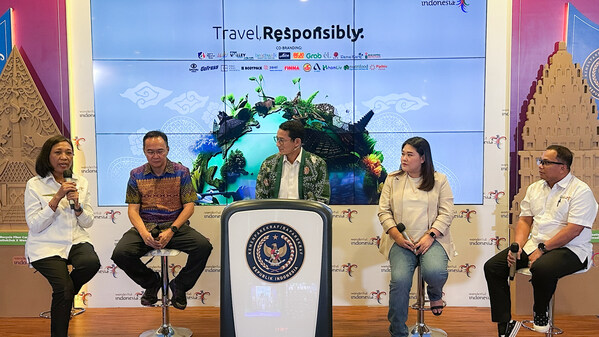
MONOPOLY DREAMS™ HONG KONG OFFERS HOT DEALS FOR THIS HILARIOUS SUMMER

CGTN: China, Poland to further enhance cultural exchanges for bilateral friendship
Telling a vibrant city's story: a cultural mission for the young.

Hong Ngoc Ha Travel Takes Pioneering Step Towards Sustainable Business Travel with Air France-KLM Corporate SAF Program
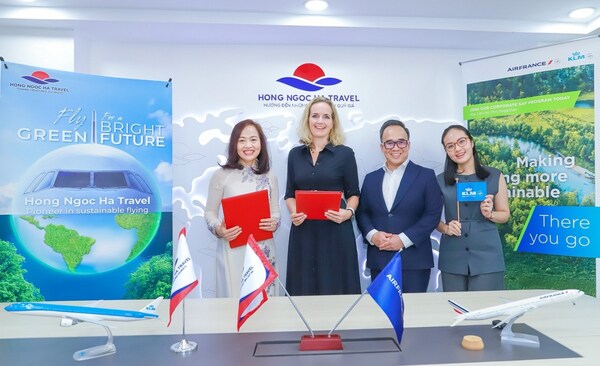
Busan, the Ultimate Seaside Bleisure City

- Top Stories
- Stock Market
- BUYING RATES
- FOREIGN INTEREST RATES
- Philippine Mutual Funds
- Leaders and Laggards
- Stock Quotes
- Stock Markets Summary
- Non-BSP Convertible Currencies
- BSP Convertible Currencies
- US Commodity futures
- Infographics
- B-Side Podcasts
- Agribusiness
- Arts & Leisure
- Special Features
- Special Reports
- BW Launchpad

The imperatives of sustainable tourism in the Philippines

Shared Values
By Ron F. Jabal
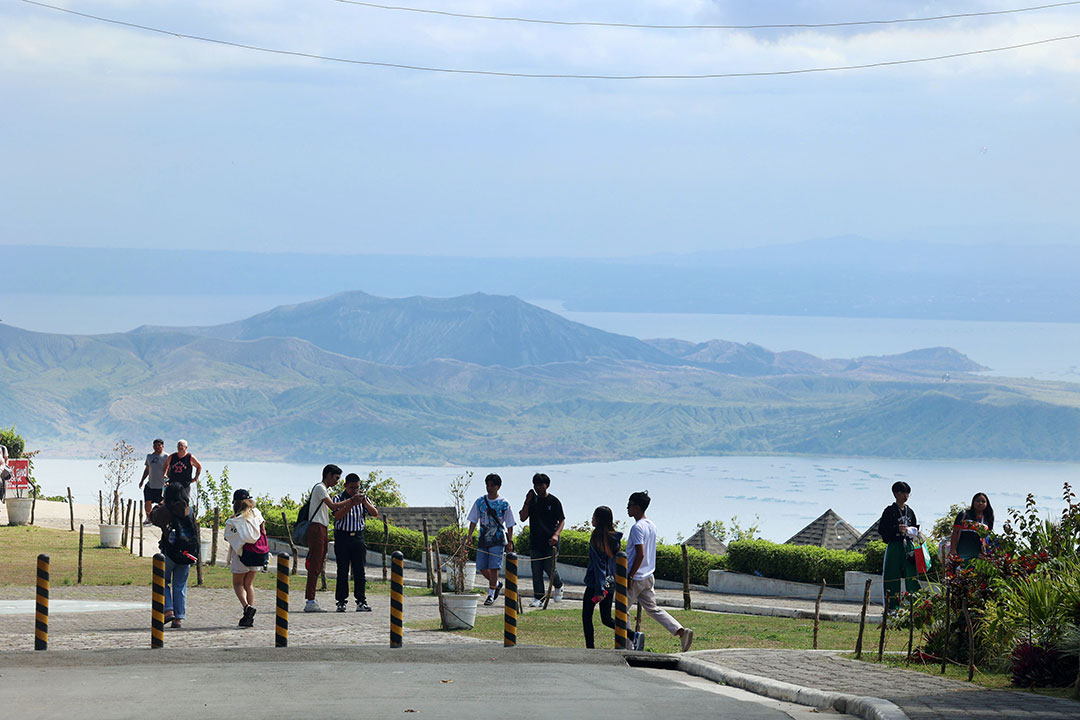
Sustainable tourism is an approach to travel that prioritizes environmental, social, and economic considerations to ensure that tourism activities can endure over time without compromising the well-being of future generations.
In the Philippines, a country known for its stunning natural beauty and diverse cultural heritage, the implementation of sustainable tourism practices becomes crucial. This is especially true given the role of tourism in the country’s economic growth.
The Philippine Department of Tourism (DoT) recently expressed optimism about the country’s prospects for more tourism dollars after the country surpassed its 2023 target in tourist arrivals. Based on of fi cial records, the previous year closed with a total of 5,450,557 international visitors to the Philippines, which is 650,000 higher than the original target of 4.8 million. According to the DoT, 91.8% of the visitors were foreign nationals mostly coming from South Korea (26.41%), the United States (16.57%), Japan (5.61%), Australia (4.89%), and China (4.84%).
As the country welcomes more international visitors, coupled with the resurgence of local tourism, it has become imperative for the government to balance its drive to generate tourism proceeds with more sustainable practices in tourism.
One of the primary advantages of sustainable tourism is the preservation of natural resources. In the Philippines, destinations like Palawan have embraced eco-friendly practices to protect their pristine beaches and coral reefs. The local government has implemented strict regulations on waste management and enforced responsible tourism guidelines to safeguard these delicate ecosystems. Sustainable tourism also plays a pivotal role in preserving the rich cultural heritage of the Philippines. In places like Batanes, efforts have been made to promote community-based tourism, allowing visitors to experience the local way of life while contributing to the economic development of these communities. This approach helps in maintaining traditional practices and ensures that cultural heritage is not lost in the wake of tourism.
Sustainable tourism creates economic opportunities for local communities. By engaging in community-based tourism initiatives, the Philippines has seen the rise of homestays, locally run tour operations, and handicraft businesses. This economic diversi fi cation reduces dependency on a single industry, making these communities more resilient to economic fluctuations.
But sustainable tourism comes with its own challenges. Despite efforts to promote sustainable tourism, some popular destinations in the Philippines still face the threat of over-tourism. Boracay, for instance, struggled with environmental degradation and overcrowding, leading to a temporary closure for rehabilitation. Managing visitor numbers and ensuring carrying capacity are critical challenges in sustaining these destinations. Insufficient infrastructure can hinder the implementation of sustainable tourism practices. Many remote areas in the Philippines lack proper waste management systems, water treatment facilities, and transportation networks. The absence of these crucial elements can strain local ecosystems and compromise the overall sustainability of tourism in these regions.
The commercialization of culture is yet another challenge associated with tourism in the Philippines. In some cases, traditional practices and cultural events are modified to cater to tourist expectations, leading to a loss of authenticity. Striking a balance between sharing cultural heritage with visitors and preserving it in its true form remains a signi fi cant challenge.
Sustainable tourism in the Philippines presents a dual reality of both successes and challenges. While initiatives in destinations like Palawan and Batanes demonstrate the positive impacts of responsible tourism, challenges such as over-tourism, inadequate infrastructure, and cultural commodi fi cation persist. The key lies in continuous collaboration between the government, local communities, and tourists to strike a balance that ensures the longevity of the tourism industry while safeguarding the natural and cultural treasures of the Philippines. Only through such collective efforts can the archipelago achieve a sustainable and resilient tourism sector that bene fi ts both present and future generations.
There are, however, success stories in nearby countries that we can emulate in implementing serious sustainable tourism initiatives. Bali, Indonesia’s success in sustainable tourism lies in its commitment to preserving its natural beauty. The island has implemented waste management programs, enforced regulations on water use, and encouraged eco-friendly accommodations. The Philippines can draw inspiration from Bali’s integrated approach to sustainability, considering similar measures to protect its own natural wonders. Chiang Mai’, Thailand’ success in community-based tourism, demonstrates the potential for empowering local communities. By engaging with visitors in a way that respects traditions and fosters economic growth, the Philippines can replicate this model where cultural preservation and community involvement are crucial.
We should be able to learn also from Malaysia, whose commitment to ecotourism is evident in projects like the Royal Belum Rainforest. This initiative focuses on biodiversity conservation while offering sustainable tourism experiences. The Philippines can develop and protect its own biodiversity hotspots, such as the Tubbataha Reefs Natural Park, through ecotourism initiatives that contribute to both conservation and local economies.
Another role model is Vietnam, whose success in community-based tourism in Sapa demonstrates the power of involving local communities. The Vietnamese government, along with NGOs, has facilitated homestays and cultural experiences, providing economic opportunities for residents while preserving traditions.
Lastly, we should be able to learn as well from Singapore which has embraced sustainable tourism through projects like Gardens by the Bay. The incorporation of green spaces and sustainable architecture showcases the city-state’s commitment to balance urban development with environmental responsibility. The Philippines can adopt similar practices in its urban tourism hubs like Manila.
As we continue to learn from best practices, the country should also strengthen and promote initiatives that will further bolster our sustainable tourism campaigns. For one, the foundation for sustainable tourism in the Philippines lies in a robust policy framework and effective regulation. The government can establish and enforce policies that promote responsible tourism, including regulations on waste management, carrying capacities for popular destinations, and incentives for businesses adopting sustainable practices. Engaging local communities remains paramount for the success of sustainable tourism. The government can facilitate community-based tourism initiatives, encouraging the active participation of locals in decision-making processes. This involvement ensures that communities become stakeholders in the industry, fostering a sense of responsibility.
Another area of focus requires the provision of appropriate infrastructure to support environmental and cultural preservation. The government can invest in eco-friendly infrastructure, including renewable energy sources, and sustainable transportation options. This not only enhances the visitor experience but also minimizes the impact on local ecosystems.
Ultimately, two major areas of concentration matter: collaboration and massive education of all stakeholders. Collaboration between the government, the private sector, and local communities is crucial. The government can foster partnerships with businesses, non-governmental organizations (NGOs), and international bodies to pool resources and expertise. Such collaboration ensures a holistic approach to sustainable tourism, addressing diverse challenges with collective solutions. On the other hand, educating both tourists and local communities about sustainable practices is essential. The government can implement awareness campaigns highlighting the importance of responsible tourism, sustainable resource use, and cultural preservation. Tourists, armed with knowledge, can make more informed choices, contributing to the sustainability of the industry.
As the Philippines continues to grapple with the challenges posed by its growing tourism industry, embracing sustainable practices becomes not only a choice but a necessity. The future of sustainable tourism in the Philippines requires a concerted effort from the government, businesses, and local communities. Drawing inspiration from successful initiatives in Southeast Asia, the Philippines has an opportunity to rede fi ne its approach to tourism. Through the adoption of responsible practices, community empowerment, and a commitment to preserving both natural and cultural assets, the nation can pave the way for a sustainable tourism industry that bene fi ts not only the economy but also the environment and local communities. The time to act is now, and by doing so, the Philippines can chart a course towards a future where tourism is a force for positive change rather than a threat to its own treasures.
Ron F. Jabal, DBA, APR, is the chairman and CEO of PAGEONE Group ( www.pageonegroup.ph ) and founder of Advocacy Partners Asia ( www.advocacy.ph ).
RELATED ARTICLES MORE FROM AUTHOR
Church teachings on sustainable mining: Avoiding ideological biases
Cybersecurity entails cooperation at every level
The US military launched a secret anti-vax campaign in the Philippines — here’s why I’m not surprised

GoodNewsPilipinas.com Triumphs with Gold Anvil Award: A Testament to Filipino Media…

Embracing a New Era: GoodNewsPilipinas.com’s Trailblazing Journey to the Anvil Awards

Discover Philippine Education Excellence: Unveiling the Top 10 Good School Stories…

Discover Filipino Athletic Excellence: Unveiling the Top 10 Inspiring Sports Stories…
7 phl tourist destinations being built as sustainable tourism showcase communities.

Seven tourist destinations in the Philippines are being built up as resilient, inclusive, sustainable tourism showcase communities.
The Department of Tourism (DOT) announced towards the weekend that plans are in place for coordinated efforts between the agency and key stakeholders to help local communities thrive amidst nationwide tourism efforts.
The DOT convened selected organizations to help realize the Transforming Communities towards Resilient, Inclusive and Sustainable Tourism (TouRIST) Program.
The TouRIST sites were selected “because of the rapid increase of tourism demand, potential for future development, lack of financing to address emerging capital investment needs, rich cultural heritage sites and biodiversity, and socio-economic impact for poverty alleviation,” noted the DOT report.
“The TouRIST Program will be a vehicle for us to implement a coordinated effort between the various government organizations and instrumentalities, and realize sustainable tourism development,” DOT Secretary Bernadette Romulo-Puyat said.
The TouRIST program has identified the following travel sites for its implementation:
- Samal Island
- El Nido in Palawan
Key organizations to help the TouRIST program that have been tapped by the tourism agency include the World Bank Group, Tourism Infrastructure and Enterprise Zone Authority (TIEZA), and the Asian Development Bank (ADB).
Local chief executives and representatives from target destinations were also convened to kick-off the TouRIST program.
The TouRIST program of the DOT in partnership with the World Bank Group and national government agencies will be a platform for integrated approach and collaboration, is supervised by the Tourism Coordinating Council (TCC).
Technical missions to the targeted destinations are expected to be conducted in October.
SEND cheers in the comments below to the tourism sector for practicing sustainable tourism!

- 7 tourist destinations
- Department of Tourism
- Philippines
- showcase communities
- sustainable tourism
- TouRIST program
Get Your Dose of Good Vibes!
Power Up Your Positivity! Catch all the Good-Vibes! Join the GoodNewsPilipinas.com VIP list and get your daily dose of sunshine and Pinoy Pride! Unwrap stories that put Filipino awesomeness in your life! CLICK the subscribe button for our e-newsletter and turn your inbox into a fiesta of feel-good news! Inspire your day, fuel your pride! 🇵🇭✨
RELATED ARTICLES
Cebu, philippines to host first un asia-pacific gastronomy tourism forum, palawan’s entalula, romblon’s bon bon hailed world’s best beaches, “gala” goals: historic places to visit this philippine independence month, top stories.
How to Track your Philippine National ID delivery

New CAVITEX C5 Link Sucat Interchange Slashes Travel Time to 5 Minutes

How to Check Your Voter Status for Philippine Elections

Mondelēz Philippines Gains Sustainability Milestones in Plastic Packaging

Bulacan’s Samantha Gabronino Wins Miss Grand Prix at Miss Freedom of the World Pageant in Kosovo
Editor picks, rico hizon takes the lead in championing filipino pride, goodnewspilipinas.com secures third consecutive nomination at lasallian scholarum awards, goodnewspilipinas.com triumphs with gold anvil award: a testament to..., embracing a new era: goodnewspilipinas.com’s trailblazing journey to the..., just in: good news pilipinas feature on freedom fighters..., popular posts, new cavitex c5 link sucat interchange slashes travel time..., bulacan’s samantha gabronino wins miss grand prix at miss..., popular category.
- Good Balita 1538
- Good Show 1366
- Good Sport 952
- Good Pinoys 937
- Good Advice 655
- Good Travel 611
- Good Tech 565
- Good Business 546
- Good School 521
- Good Deed 494
- Good Inspiration 317
- Good News Pilipinas! TV 79
- Good Savings 51
- Good MSME 49

Good News Pilipinas is a news and information website that highlights the good in the Filipino and the Philippines.
© 2024 GoodNewsPilipinas.com
Privacy Overview


10 WAYS YOU CAN BE A RESPONSIBLE TOURIST IN PALAWAN
by thepinay solobackpacker | Jun 4, 2022 | Palawan , Puerto Princesa | 0 comments
Flanked by gorgeous marine reserves, vast pastoral lands, lush mountains and jungles, and sleepy coastal towns, Palawan is an impeccable travel destination for those seeking a refuge and oneness with nature. Dubbed as the “Last Frontier” of the Philippines, Palawan has made its mark on the world map as one of the best islands in the world, attracting hordes of tourists. While this is good for the local economy, the once laidback island is now in danger from irresponsible tourism practices, overdevelopment, overconsumption of natural resources, destruction of the environment, pollution, and disturbance of wildlife.
Thankfully, there are also ways to help minimize our environmental impact. As tourists, we can help contribute to a larger sustainable tourism movement through responsible tourism practices. What we do during our travels today is crucial in shaping the future of tourism.
TRAVEL BLOG CONTENTS
RESPONSIBLE TOURISM IN PALAWAN
Sustainable tourism and responsible tourism are often used interchangeably, but there is a difference between the 2 terms. Sustainable tourism refers to the long-term sustainability of tourism industry, the responsibility is shared among tourism stakeholders, companies, and political leaders. It aims to minimize the negative impacts of tourism activity while conserving resources to maintain their long-term sustainability. Whereas, responsible tourism are the specific actions and strategies that individuals, businesses, tourism stakeholders, and communities, practice to help minimize the negative impact of their tourism activity.

(Walking in Sabang, Puerto Princesa, Palawan)
To be honest, when I dreamed of traveling around the Philippines over a decade ago, I was so focused on my goal that I failed to consider the footprints I’d leave to the environment. But my recent trip to Palawan, helped me understand more about sustainable and responsible travel.
Let me share to you my own experience in Palawan and some ways we can be a responsible traveler in our own little way. Let us always remember that the choices we make on how we spend our money during our travel can have a positive or negative impact to families, communities, wildlife, and destination we are visiting. After all, if we are privileged enough to travel, we should also be responsible enough to honor, care for, and protect the places we are visiting.
1.Plan your trip ahead and prepare.
I like taking impromptu trips from time to time, it excites me and often leads me to surprising paths. It allows me to embrace my sense of adventure and curiosity. There’s something about it that teaches me to trust my gut and live in the moment. However, when I want to save time and I want to travel safely and hassle-free, I prefer planning my trip ahead. I learned that if I want to travel responsibly, planning ahead is important- creating my itinerary, booking my accommodation and tours in advance, researching about the destinations, including its history and local cultures. It enables me to travel safely and minimize the damage to natural and cultural resources. So the next time you go on a trip, consider preparing and planning ahead to help you make informed decisions that will have a tremendous impact on the tourism industry. You can browse my detailed travel guides and itinerary on this blog to help you plan your trip.
2.Stay in an eco-friendly accommodation.
Supporting eco-friendly hotels and resorts is one way to contribute to responsible tourism. I understand it can be mind-boggling to find an accommodation for your trip, but choosing accommodations that have practices that help protect the environment and actively work with the local communities (e.g. employ workers from the village or nearby village, train their staff to improve their skills, etc.), it is worth it. Eco-friendly accommodations should be rewarded for their extra effort.

(Daluyon Beach and Mountain Resort in Sabang, Puerto Princesa )
During our recent trip to Puerto Princesa , we stayed at Daluyon Beach and Mountain Resort , an award-winning eco-friendly resort blissfully located in Sabang, Puerto Princesa. What I like about this hotel is its effort to reduce its environmental impact, such as providing wood toothbrushes, ramping up recycling, and using 3 trash cans to encourage guests to segregate their trash, using reusable cutlery, and dishes, paper straws, water bottles, and using energy-efficient lighting. They also encourage guests to reuse towels and provide signs to remind guests to turn off the lights and faucet when not using, encourage donations to WWF, etc. Not to mention, the employees are village residents, which is beneficial for the community.
Sabang area is a good base when in Puerto Princesa because it is within walking distance to Sabang Port, the jumping-off point to Puerto Princesa Underground River. It is also a stone’s throw away from some tourist spots so we were just walking to Sabang beach, Sabang Mangrove forest, and the zipline on the beach to help minimize the impact on the environment. I did enjoy our leisurely stroll as the rugged road there is fringed by swaying palm trees exuding a laid-back, tropical island vibe.
Daluyon Beach and Mountain Resort: BOOK HERE
3.minimize your carbon footprint..
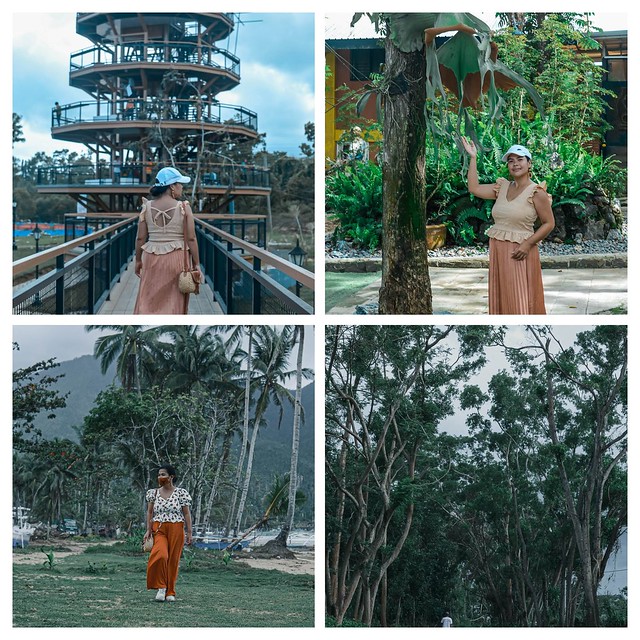
(Balayong People’s Park, Baker’s Hill, Sabang Beach, & Vietnamese Village in Puerto Princesa)
Another way to help reduce our carbon footprint is by incorporating local adventures on your travels, such as, walking in unexplored corners of your destinations and visiting green parks. Take Balayong People’s Park, a new urban tree park in Puerto Princesa City. It aims to promote a greener surrounding in the city and planting endemic trees such as Nara, Ipil, Kamagong, etc. Baker’s Hill is another green-friendly park in Puerto Princesa. It is home to many plants and giant ferns. I was really excited to see giant staghorn ferns hanging beautifully from towering trees there. Meanwhile, the Viet Ville Restaurant in Puerto Princesa , which used to be home to 2,000 Vietnamese refugees, remains a community enveloped by greenery and age-old trees.
4. Dispose your trash properly.
Don’t you love it when the place you are visiting is trash-free? Dispose your trash properly whenever traveling. If you can’t find a trash can, take your trash with you and dispose it once you find a trash bin. If you’re hiking in the mountains or going island hopping, bring a reusable or biodegradable trash bag and take your trash with you to the mainland, until you find a trash bin and dispose properly.
5. Practice plogging, plalking, and pliking on your travels.
You often hear the principle “Leave No Trace” when traveling, but most likely during your trips, you’ll encounter trash. And that’s saddening. We must consider the impacts we leave behind during our trip because they will affect the community, water, and wildlife of the places we are visiting.
We can help keep the tourist destination litter-free when traveling by plogging, plalking, or pliking. PLOGGING is a sustainable initiative that originated in Sweden, which combines running and jogging with picking up trash. PLALKING is walking while picking up litter and PLIKING is biking and litter clean up. Let’s make them a new trend in traveling!

(Plogging while traveling)
I’m glad that during my recent Palawan trip, I didn’t encounter the usual trash I see when traveling. However, the beach is swamped with sargassum (seaweed) every morning. Seaweed like seagrass play a major role in the ecosystem. But thick mats of floating sargassum can also kill surface-breathing wildlife such as turtles and dolphins as they become impenetrable and prevent these animals to go to the surface to breathe. They can also be trapped in fishing nets making it hard to catch fish, and may prevent fishermen from launching their boats as they get trapped in propellers. Stinking dead seaweed washed up on shores can also attract insects, pose risks to human health, and may hinder beach-goers, an economic pillar to many coastal communities. You can help by cleaning up the shore with dead sargassum. Then, the collected dead seaweed can be turned into plant fertilizers.
6. Support local conservation efforts and the local economy.
If you’re enjoying a destination your visiting, why not give back to the local economy? Spend a portion of your travel money on local businesses.

(Binuatan Creations)
Buy locally-made goods or souvenirs, visit the local market, volunteering in a tree-planting drive, or animal shelters (if there are any). Dine in local restaurants and cafes, purchase arts and paintings from local artists, etc.
During our trip to Puerto Princesa, we visited Binuatan Creations , a shop that manufactures handloom woven bags, home decors, placemats, etc. from natural grasses and fibers. If you’re looking for a souvenir to take home to your family and friends, this is the place to be. You can also try your hand at hand weaving placemats with the guidance of local talented weavers.
And speaking of supporting the local economy, when choosing tour providers, and destinations, consider the ones that work to protect the environment, provide financial benefits and empowerment to local communities and contribute to the conservation of local resources. Hiring local guides that are trained to provide accurate information also helps.
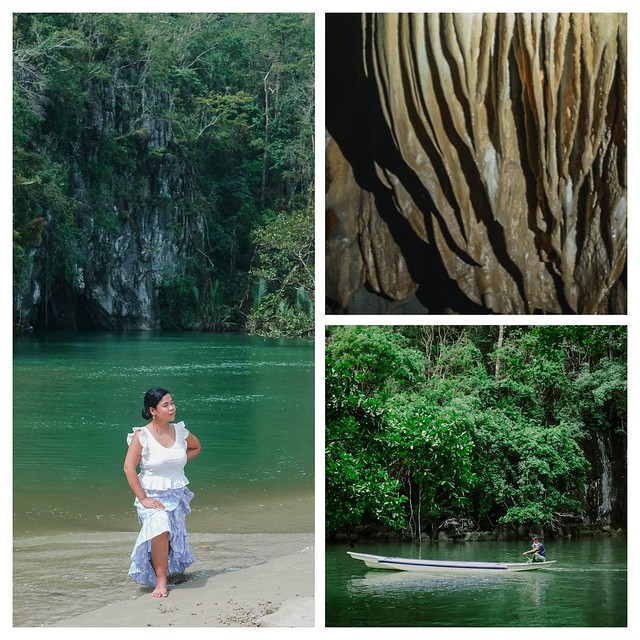
( Puerto Princesa Subterranean River National Park)
Thankfully, we were able to experience the two highly recommended eco-tourism and community-based tourism destinations in Puerto Princesa – the famed Puerto Princesa Underground River and the Sabang Mangrove Forest .
PUERTO PRINCESA UNDERGROUND RIVER TOUR: RESERVE HERE
The Puerto Princesa Subterranean River National Park is a must-visit when in Palawan. This impressive cave system features jaw-dropping stalactites, stalagmites and several chambers. The park boasts of limestone karst landscapes, well-preserved age-old forest, and varied wildlife. It is listed as a UNESCO World Heritage Site and New 7 Wonders of Nature. This protected park is a great example of sustainable tourism in the Philippines. The property is covered under the National Integrated Protected Area System (NIPAS) to ensure its legal protection and conservation. Puerto Princesa River National Park’s tourism program aims to enhance visitor’s experience with nature while protecting the natural values.

(Sabang Mangrove Forest Tour)
After our trip to the Puerto Princesa Underground River, we also experienced the Sabang Mangrove Forest Tour , just walking distance from Sabang Wharf. The Sabang Mangrove Forest was founded to empower local communities, provide additional income to residents, foster environmental awareness, and provide sustainable tourism activity that minimizes negative impact to the environment. I have a detailed blogpost about it (see link below), if you want to know more about it.
ALSO READ: SABANG MANGROVE FOREST TOUR
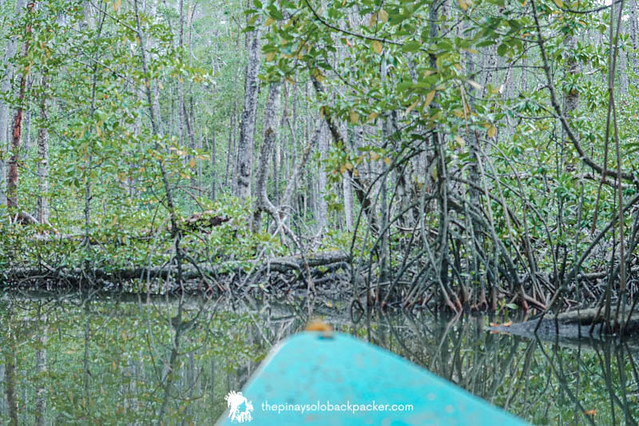
(Sabang Mangrove Forest)
7.Visit agri-tourism farm.
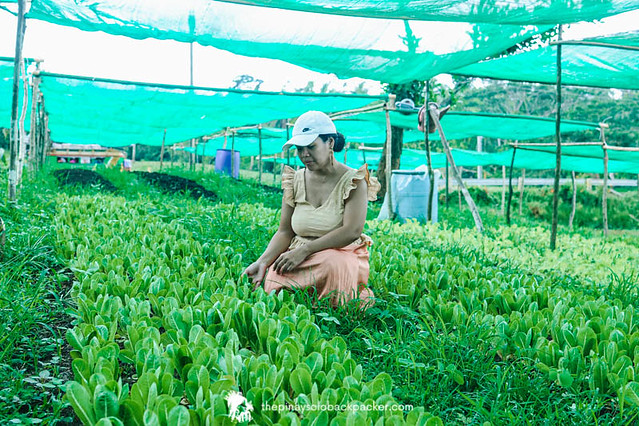
(Yamang Bukid Farm)
We also visited Yamang Bukid , an agri-tourism farm. It was founded to make farming both sustainable and profitable, and help farmers to be financially independent. Interestingly, Yamang Bukid helped eliminate illegal logging activities in the village by transforming former illegal loggers to farmers. The agritourism farm also provides school allowance for the kids of their farmers and farm employees, and they also support high school and college scholars. Apparently, Yamang Bukid can fund all this because they have a profitable business manufacturing herbal teas and supplements as well as 2 restaurants where raw materials are organically and ethically sourced from their farm.
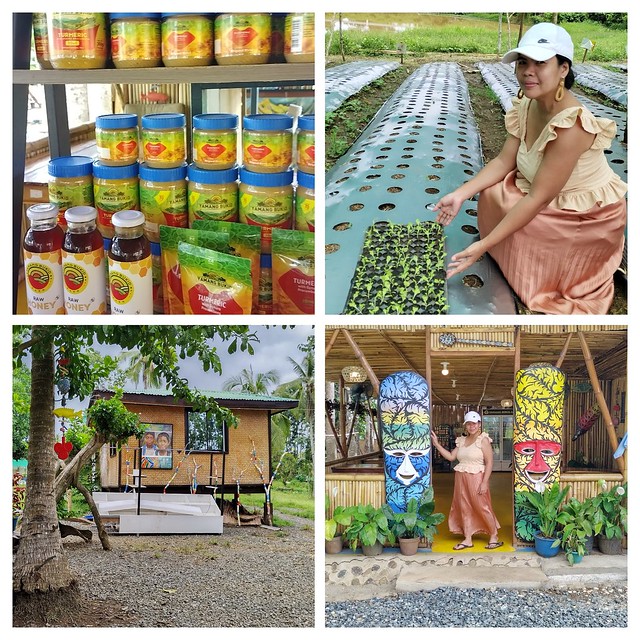
(Yamang Bukid Farm in Puerto Princesa)
As someone who loves plants and gardening, Yamang Bukid is heaven for me. Unfortunately during our visit, we learned that the farm was devastated by Typhoon Odette. They also suffered great loss during the pandemic since there were no tourists. Yamang Bukid is now starting from scratch, so when you travel to Puerto Princesa, don’t forget to drop by, dine in, plant and donate seedlings, and take home their organic products as souvenirs. If you’re into farming, you can even take up short courses in organic farming, vermicomposting, etc. This way, you’ll gain a new experience and at the same time help the farmers and local community.
8. Respect wildlife.

(Palawan Wildlife and Rescue Center)
9.Be respectful of local cultures, traditions, and etiquette.
We are just visitors, therefore, let’s be respectful of the local culture, religion, and traditions. Research about the dress code, especially if you are visiting temples and other religious sites, as well as cultural sites. Observe how the locals dress, and take your cues from them. Never take offensive pictures. Ask permission when taking pictures of indigenous people, and locals in general. Every country has different rules for etiquette, a quick Google search should give you some basic information on what is considered taboo or rude in certain country or places. Not knowing these rules can also harm you, so best to be prepared before your travel. If you’re unsure, ask the locals.
10. Bring reusable straw, utensils, water bottle, etc.
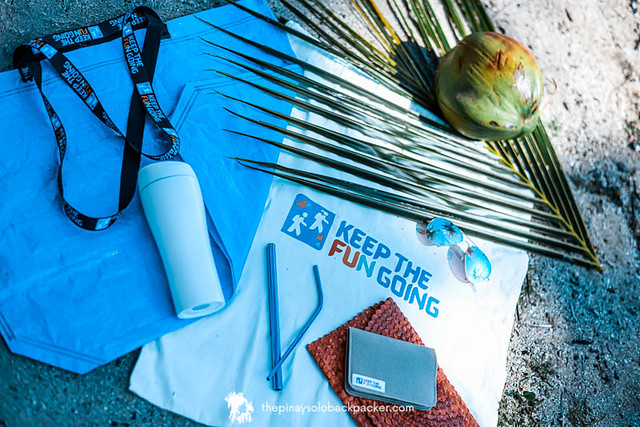
(Reusable travel essentials)
As mentioned above, it’s important to plan your travel ahead, to help minimize your negative impact to the environment. Planning your trip ahead isn’t limited to creating itineraries, booking accommodations and tours in advance, it also entails planning to decrease your plastic usage during your trip. Single-use plastics like water bottle, straw, plastic bag, etc. are often the trash that I see during my travels. You can help reduce your plastic trash by bringing your own refillable water container, it will also save you a few bucks because instead of buying bottled water every time you are thirsty, you can ask to refill your reusable bottle with filtered water from your hotel, restaurant, etc. As much as possible, avoid using straw, if you really need one, bring other alternatives such as bamboo, metal, or paper straw. You can also help the environment by dining in instead of taking out your food. Carrying your own cloth or jute shopping bag also helps minimize the use of single-plastic bag. I’m so used to this because in our town, plastic bags are banned from stores, supermarket, and grocery. And lastly, skip the free travel-size shampoos, soaps, and lotions provided by your hotel or resort, instead, bring your own toiletries.

By the way, Department of Tourism has an ongoing campaign called “KeepTheFunGoing” where people are encouraged to do simple and fun gamified sustainable challenges such as “zero-waste warrior”, “certified foot soldier”, “restourism advocate challenge”, and “eco staycationer”. For more information about the challenges and more ways to be a sustainable tourist, visit https://philippines.travel/saveourspots
RELATED TRAVEL BLOG: PUERTO PRINCESA TRAVEL REQUIREMENTS
Related posts.
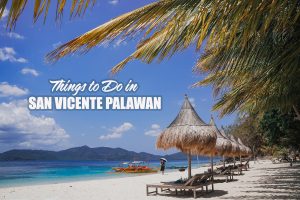
WHAT TO DO IN SAN VICENTE PALAWAN (2023)
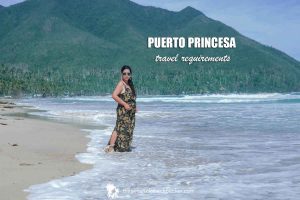
2022 PUERTO PRINCESA TRAVEL REQUIREMENTS
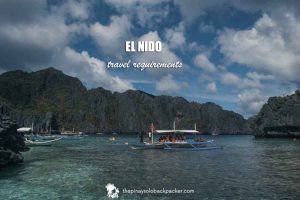
2022 EL NIDO TRAVEL REQUIREMENTS
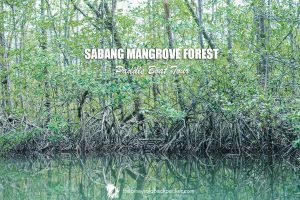
2022 SABANG MANGROVE FOREST TOUR: PUERTO PRINCESA
Submit a comment cancel reply.
Your email address will not be published. Required fields are marked *
- BEACH RESORTS
- BORDER CROSSING BY BUS
- Cruise Guide
- FERRY SCHEDULE AND RATES
- General Santos
- Historical Sites
- Hotels and Resorts
- Shiragawago
- SHIRAKAWA-GO
- Cameron Highlands
- Kota Kinabalu
- Kuala Lumpur
- New Zealand
- Cagayan North
- Camarines Norte
- Caramoan Island
- Catanduanes
- Davao del Sur
- Ilocos Norte
- Lanao del Norte
- Kalanggaman
- Mindoro Occidental
- Puerto Galera
- Negros Oriental
- Nueva Ecija
- SAN TEODORO
- Puerto Princesa
- San Vicente
- Quezon Province
- Northern Samar
- Surigao del Norte
- Surigao del Sur
- Capones island
- Zamboanga City
- Zamboanga del Norte
- Solo Female Travel 101
- South Cotabato
- Star Cruises
- Kanchanaburi
- Tourist Spots
- Travel Apps
- Travel Gadget
- TRAVEL GADGETS
- Travel Guide
- TRAVEL REQUIREMENTS
- Uncategorized
- UNESCO World Heritage Site
- HO CHI MINH CITY
COPYRIGHT NOTICE:
Terms of use:.

- Privacy Overview
- Strictly Necessary Cookies
This website uses cookies so that we can provide you with the best user experience possible. Cookie information is stored in your browser and performs functions such as recognising you when you return to our website and helping our team to understand which sections of the website you find most interesting and useful.
Strictly Necessary Cookie should be enabled at all times so that we can save your preferences for cookie settings.
If you disable this cookie, we will not be able to save your preferences. This means that every time you visit this website you will need to enable or disable cookies again.
Academia.edu no longer supports Internet Explorer.
To browse Academia.edu and the wider internet faster and more securely, please take a few seconds to upgrade your browser .
Enter the email address you signed up with and we'll email you a reset link.
- We're Hiring!
- Help Center

Relevance of sustainable tourism in the Philippines: case of Boracay Island and Puerto Princesa City

2017, International Journal of Information Research & Review
Tourism industry serves as one of the top incomes of several countries due to its contribution to the economic development and welfare for its people. However, the tourism industry also has negative impacts to the environment and to the community. In order to address these issues, several nations are shifting to sustainable tourism as an alternative. With the practices of sustainable tourism and its fast growth to many developing countries such as the Philippines which resulted for natural resources preservation and economic development at the same time. Thus, it is in this frame of reference that this paper will provide insights on how sustainable tourism practices, particularly in Boracay and Puerto Princesa as two of the leading tourist destination sites is beneficial to the country. The study was conducted for a period of two months and gathered data coming from the Department of Tourism, City Tourism Offices and Key informants. Policies were also implemented by their local governments to ensure that sustainable tourism practices are maintained. Community based participation is highly recommended because this concept will provide additional employment to the community within the rural areas of the tourist destinations.
Related Papers
Ramon B A Alampay
The Philippines, through tourism, aspires to become a stronger player in the integrated travel industry of today. Yet, the country realizes that in order to do so, it must conserve, protect and strengthen the cultural, historical and natural resources upon which the Philippines draws its unique competitive advantages. All these in a manner that can be sustained for the benefit and enjoyment of future generations of Filipinos. This book, a collection of research papers funded by the Philippine APEC Study Center Network (PASCN), reflects the scope and complexity of sustainable tourism development. The various papers also mirror the complexity of sustainable tourism development and hint at the multidisciplinary approach that this mode of tourism needs to succeed. Each paper applies a different disciplinary framework to its particular tourism problem: economics, sociology, anthropology, environmental science, management science, human resources development, and others. Each paper also provides a unique academic angle on sustainability and tourism.
Asia Pacific Journal of Multidisciplinary Research
Jazztin Jairum Manalo
Sustainable tourism has been considered by many local governments as part of their initiatives for economic upliftment. It is one of the major sources of income through the use of their tourist attraction without compromising the natural resources situated within. The enactment and effective implementation of the local government’s policy have achieved a promising efficient outcome for sustainable tourism.. The city of Puerto Princesa had a long history considering its transformation from an environmentally degraded city into one of the major ecotourism sites around the world. Thus, this paper presents the case of Puerto Princesa and its practices as well as economic development by practicing sustainable tourism and effective policy implementation. The City Ordinance No. 163-91 and 640 has improved the lives of the communities by practicing cleanliness and effective waste management their surrounding and tourist destinations. Economic development and benefits from sustainable tourism reflects the city of Puerto Princesa as a role model for Local Government Units. The passing of City Ordinances on Cleanliness drive have played an important role in effective waste management of the city. The key role of having a strong political will in the local government has strongly maintained its best practices for two decades up to the present.
John Lourenze Poquiz
While tourism as an economic activity contributes to the growth of an economy, it also contributes “to irreversible damage to the environment” which may affect tourism in an area. In order to establish tourism as sustainable source of growth, policy makers should be able to examine the negative externalities resulting from tourism activities. Moreover, there should also be some metric for the assessment of interventions aimed at mitigating the adverse effects of tourism on environment. This study attempts to establish with a provisional methodology for the compilation of indicators measuring some of the impacts of tourism activities om the Philippine environment. The estimation strategy we employed involves the use of the Philippine Input-Output tables and the Philippine Tourism Satellite Accounts (PTSA) in generating indicators. We were able to generate statistics on the energy use and water use for each of the tourism industries highlighted in the PTSA. The hope is that this study...
International Journal of Multidisciplinary: Applied Business and Education Research
jimmy maming
Sustainability is regarded as a critical goal in tourism planning and development. Boracay Island has faced challenges and deterioration as a result of rapid growth in tourism without proper planning and management, leading to its six-month temporary closure on May 8, 2018. Through qualitative interviews with key stakeholders, this paper aims to investigate the sustainable tourism development of Boracay Island, Malay, Aklan. Yin's data analysis and procedures were used to create a single case study design. Data was gathered and analyzed using interviews, observations, and data reviews. The study included twenty (20) key informants who were chosen at random. The study's conclusive report yields benefits and costs in three areas: first, economic characteristics of tourism benefit communities and improve the island's economy. However, the island's high cost of living rises, causing inflation. Second, in terms of the environment, its natural resources have been harmed in...
This paper discusses the concept of sustainable tourism development and how the principles of sustainable tourism are operationalized through the activities, programs or projects of the national tourism organizations (NTOs) of the Philippines, Malaysia, Singapore and Thailand. Subsequently, the author identifies the approaches and best practices of the NTOs and gaps in the implementation of sustainable tourism development. The paper ends with recommendations on how to improve current efforts in effecting sustainable tourism development.
Mark Ransley
Ecotourism as nature-based tourism can be considered as a form of sustainable tourism development. It comprises of different factors that enables an area of natural beauty be used for as an enterprise in a sustainable manner. The sustainable tourism practice of Puerto Princesa City (PPC) operates in this context. The City government of Puerto Princesa, managing the foremost and major ecotourism destination the Puerto Princesa Subterranean River National Park (PPSRNP) had benefited on the decentralization of the national parks as its management roadmap in sustainable ecotourism development in conformity with the national legislations towards Philippine development. This paper presents the entirety of ecotourism that are managed and assisted by the local government of Puerto Princesa to the improvement of the local stakeholders’ socio-economic conditions. Its prime ecotourism destination with their six major sites and activitiesfollows a deductive analysis approach for the growth of the tourism industry. Data on annual tourist arrivals in the past 16 years were gathered through correspondence from key informants and institutions and translated into estimated tourism receipts. Resultsshowed that the growth of tourism significantly generated40 billion pesos for the socio-economic sustainability of local residents for their community development.Several other resolutions and ordinances were crafted and implemented mainly to support tourist safety, cleanliness drive, and creating new ecotourism destinations. The concerted effort of the Puerto Princesa on the preservation of natural resources through sustainable ecotourism have demonstrated its mere potential in generating local employment and economic development.
Rachel Dodds
Dr Mahesh Chandra Uniyal
Tourism has become World’s largest and fastest growing industry with employment of 260 million people and contribution to 9% of world’s GDP. In today’s scenario Sustainable tourism is a responsible tourism intending to generate employment and income along with alleviating any deeper impact on environment and local culture. “Tourism destroys Tourism”-has been observed through many case studies like Shimla and Mussoorie. That’s why the need of the hour is that balance must be found between limits and usage so that continuous changing, monitoring and planning of the tourism projects ensures management of tourism for the longer run and for the generations and generations . Economic, social and environmental aspects of sustainable development must include the interests of all stakeholders including local people or communities, visitors, industry and government. In this paper it is aimed to understand the awareness of the planners and other stakeholders about sustainable development. Furt...
Dadang Ahmad Suriamihardja
This study is to find clear understanding and new formulation in developing the existing tourism in South Sulawesi Province based on its nature and culture. One of the utilizations of nature and culture should be considered and promoted as sustainable tourism. Regional governments should be able to identify potencies of its natural characteristics and cultural peculiarity to formulate marketable tourist destinations and related facilities. Such opportunities open participation from various stakeholders to welcome domestic and foreign visitors to enjoy and in turn to share experiences and supports in managing nature and culture. In one hand, this trend is agreeable in the era of decentralization, because of the plan is closest to the resources. But on the other hand, many important resources for development are not fully controlled and owned by regional government, but belonged to various stakeholders. A new formulation of sustainable tourism in constructing the so-called harmonious ...
RELATED PAPERS
History of Classical Scholarship Issue 21, 175- 197
Massimo Melli
Información Pública
Archaeometry 57-1:77-99
Jillian Huntley
οβολός 10 - BCH Supplément 57
Demetris Athanasoulis
Abel Ramoelo
Anales del Seminario de Historia de la Filosofía
Ricardo da Costa
Águas Subterrâneas
Jadson Fernandes da silva
Engineering Computations
Khalid Mosalam
Aprilia Dwi Yustika
Nikola Petrović
TELKOMNIKA Telecommunication Computing Electronics and Control
TELKOMNIKA JOURNAL
Behavioural Pharmacology
Bruno Couto
Journal of Infection
Eleri Wilson-Davies
Military Medicine
Eileen Delaney
RELATED TOPICS
- We're Hiring!
- Help Center
- Find new research papers in:
- Health Sciences
- Earth Sciences
- Cognitive Science
- Mathematics
- Computer Science
- Academia ©2024

- Quick Guides
- Contributors
These Local Communities are Thriving with Sustainable Tourism in the Philippines
The Department of Tourism is embarking on strengthened efforts towards sustainability by enhancing existing destinations and developing new circuits that highlight sustainable management practices and involve local communities.
As tourism has a multiplier effect—creating not only jobs but also livelihood opportunities through offering of goods and services—sustainability ensures the preservation of destinations, thriving of culture and traditions, and inclusive growth. Moreover, as sustainability measures often involve the community, the locals themselves become part of the meaningful experience of their hometown’s visitors.
Here are the top sustainable tourism destinations for your next adventures in the Philippines and the communities that you will encounter on an unforgettable journey.
The eco-friendly locals of Mt. Hamiguitan and Mt. Apo in Davao
The Mount Hamiguitan Range Wildlife Sanctuary in Davao Oriental is Mindanao’s first and only UNESCO World Heritage Site, with attractions such as a pygmy forest where trees are stunted to only about 4.5 feet in height. There are 1,974 endemic plant and animal species that have been identified so far, including carnivorous pitcher plants, the iconic Philippine Eagle, Philippine cockatoo, and golden crowned flying foxes. The locals are engaged not only in tourism but also in sustainable livelihood programs. One of these is beekeeping using the native stingless bee species called ‘kiyot’. This also helps with pollinating and protecting Mt. Hamiguitan’s vegetation.

The Mount Apo Natural Park is home to 272 bird species, 111 of which are endemic, including the Philippine Eagle which is the largest in the world. The mountain is also inhabited by several indigenous groups: the Manobos, Bagobos, and Klata who consider it as a sacred mountain. They perfectly demonstrate how to coexist in harmony with the environment. Trek porters are equipped by the local tourism offices to share their knowledge of the mountain and its conservation.

The artisans of Ilocos, Panay Island, Eastern Visayas, and Central Mindanao
The women of Ilocos, particularly in the towns of Paoay, Vigan, Pinili, down to the towns of Santiago in Ilocos Sur and Bangar in La Union have been weaving from their homes since pre-Hispanic times. Their hand-loomed Inabel fabric, made from cotton blends is made into blankets, table covers, and even apparel, such as bags, shoes, and face masks for the new normal, with traditional designs that have been passed down through generations.

Panay Island also has a proud tradition of weaving, with several weaving communities across the island. In Aklan, they dexterously weave the fibers of the piña or Red Bisaya pineapple plant into delicate-looking cloth made into home decor and even formal apparel. Aklanon weavers are known for their piña and silk cloth creations that are embroidered with floral designs while the weavers of Iloilo and Antique are known for employing the suk-suk or inlaid weft technique in hablon and patadyong cloth.

Weavers in Eastern Visayas use materials harvested from plants that grow abundantly in their area to craft mats that can be used for sleeping or fashioned into decorative items such as place mats and plant holders or even bags and fans. These materials range from abaca, buri palm, coconut leaves and ribs, rattan and tikog or reed grass, pandan, pawa which is a type of thin bamboo, and seagrass.

The surfing communities of La Union, Baler, Siargao, Surigao del Sur and Eastern Samar
The surfing hotspots of the Philippines have produced not only a burgeoning tourism industry but also world-class local surfers. Those living in the islands have picked up the sport and the waters of La Union, Baler, Siargao, Surigao del Sur and Eastern Samar have increasingly seen more locals on their boards. These friendly Filipino surfers are the embodiment of the laidback local surfing lifestyle and are also staunch advocates of caring for their marine environment.

The culinarians of Iloilo City, Bacolod, Zamboanga City, and Davao City
Visiting the different regions of the Philippines is a taste trip, with each province contributing richly to the food map of the country, with recipes that make use of what is easily available in their locality. A cultural awareness of these dishes and the resulting food tourism ensures that not only the recipes are handed down to the next generation but heirloom produce will continue being planted by the local farmers.
Iloilo city is considered as one of the food capitals of the Philippines, with flavorful delicacies such as bowls of La Paz Batchoy noodles and Molo Soup. Negros Occidental is called the Sugar Bowl of the Philippines for its fields of sweet sugarcane. Among their preferred dishes for guests especially those visiting its capital city, Bacolod are Inasal (chicken grilled over hot coals), Piaya (unleavened flatbread filled with muscovado sugar), and Kansi or beef shank with bone marrow cooked in broth flavored with a local souring agent called Batwan.

Seafood abounds in Zamboanga, and their must-try dishes include ingredients such as a crustacean locally called Curacha, Imbao or mangrove clams, snails called Kulo, and Lato — a seaweed that resembles small green grapes, or commonly known as green caviar. Davao is known for its fruits, ranging from pineapples, bananas, sweet pomelos, and the infamous durian. For a memorable meal, try the specialties that make use of fresh seafood such as Kinilaw, the local version of ceviche, and Sinugba or freshly-grilled seafood.

The farming communities of Negros Occidental
To experience life on a Filipino farm, visit the 14 farm tourism sites that have been accredited by the Department of Tourism in Western Visayas. These farms highlight the potential of sustainable agriculture that can provide income streams for the communities who profit from both the produce and their eco-tours. Visitors can relax and appreciate the bounty of nature while learning the technology applied to the farming practices suited to the climate and soil conditions of the area.

Travel safely!
All these tourist destinations have health and safety protocols in place to protect locals and visitors alike. Everyone is expected to comply by wearing face masks, regularly washing their hands, and practicing physical distancing.
To check out up-to-date information regarding local destinations that are open and the safety protocols and requirements needed for each location, you may visit philippines.travel/safetrip or download the Travel Philippines app at app.philippines.travel , Apple Store, or Google Playstore.


Passing Thru Travel
15 Eco-Islands 2024 – Sustainable Island Retreats
Posted: February 24, 2024 | Last updated: February 24, 2024

In an age where sustainable travel is not just a preference but a necessity, islands around the world are leading the way in eco-friendly tourism. These destinations offer more than just stunning beaches and clear waters; they are committed to preserving their natural beauty and cultural heritage. From the remote corners of the Pacific to the vibrant ecosystems of the Caribbean, this guide explores 15 of the world’s most sustainable island getaways. Each of these islands offers a unique blend of responsible tourism practices and unforgettable natural experiences, ensuring that your visit leaves a positive impact.
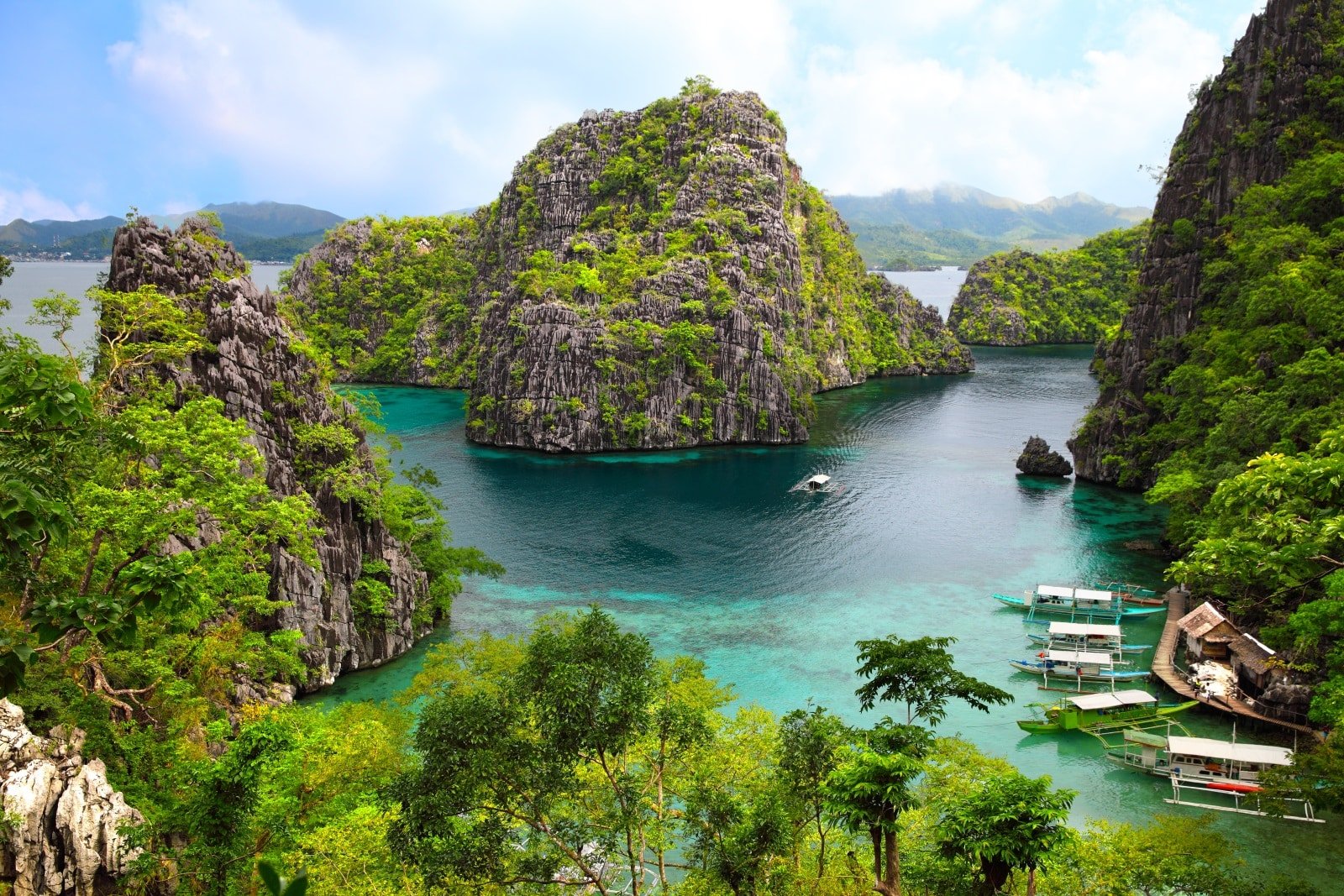
1. Palawan, Philippines
Palawan, the Philippines’ ecological marvel, is a testament to sustainable island living. This lush paradise, with its crystal-clear waters and rich marine life, is a haven for eco-conscious travelers. The island’s efforts in conservation are evident in attractions like the UNESCO-listed Puerto Princesa Subterranean River National Park and the sustainable luxury resorts in El Nido. Community-based tourism initiatives here not only protect the environment but also support local livelihoods. Visitors can engage in snorkeling, island-hopping, and exploring hidden lagoons, all conducted with respect to the natural surroundings.
Insider’s Tip: Engage in community-led tours for an authentic and responsible exploration of the island.
When To Travel: The dry season from November to May offers the best weather.
How To Get There: Fly to Puerto Princesa or El Nido from major cities in the Philippines.

2. Galapagos Islands, Ecuador
The Galapagos Islands, a unique showcase of biodiversity, are a global model for sustainable tourism. The Ecuadorian government and local operators maintain strict controls to preserve the islands’ delicate ecosystems. Visitors can marvel at the unique wildlife and volcanic landscapes while contributing to conservation efforts. The islands offer a range of eco-friendly accommodations and tours that prioritize environmental responsibility. Activities include guided nature walks, snorkeling with sea lions, and observing the famous Galapagos tortoises in their natural habitat.
Insider’s Tip: Opt for smaller, eco-certified cruises to minimize your environmental impact.
When To Travel: Visit from June to December for cooler temperatures and active wildlife.
How To Get There: Fly to Baltra or San Cristobal from mainland Ecuador.
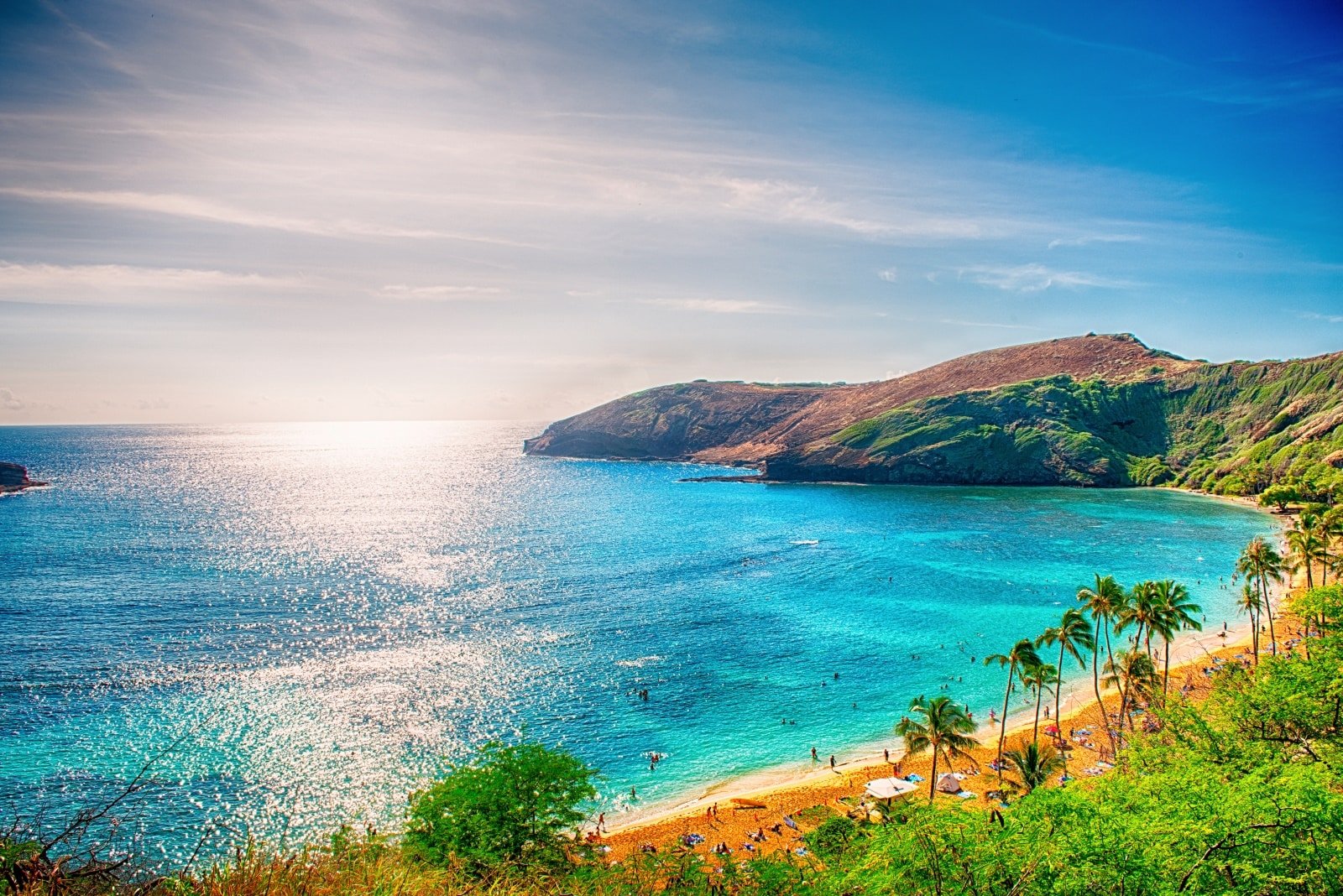
3. Maui, Hawaii, USA
Maui, the second-largest Hawaiian island, is a leader in sustainable tourism practices. The island’s lush landscapes, from the volcanic Haleakal? National Park to the Road to Hana, are maintained through eco-friendly initiatives. Visitors can enjoy organic farm-to-table dining, solar-powered water adventures, and cultural tours that respect the local heritage. Maui’s commitment to preserving its natural and cultural resources makes it a prime destination for eco-conscious travelers. The island’s diverse ecosystems, including rainforests and coral reefs, offer nature enthusiasts a wide range of activities.
Insider’s Tip: Participate in a beach clean-up to give back to the community.
When To Travel: The shoulder seasons of April to May and September to November offer great weather with fewer crowds.
How To Get There: Fly directly to Kahului Airport on Maui.
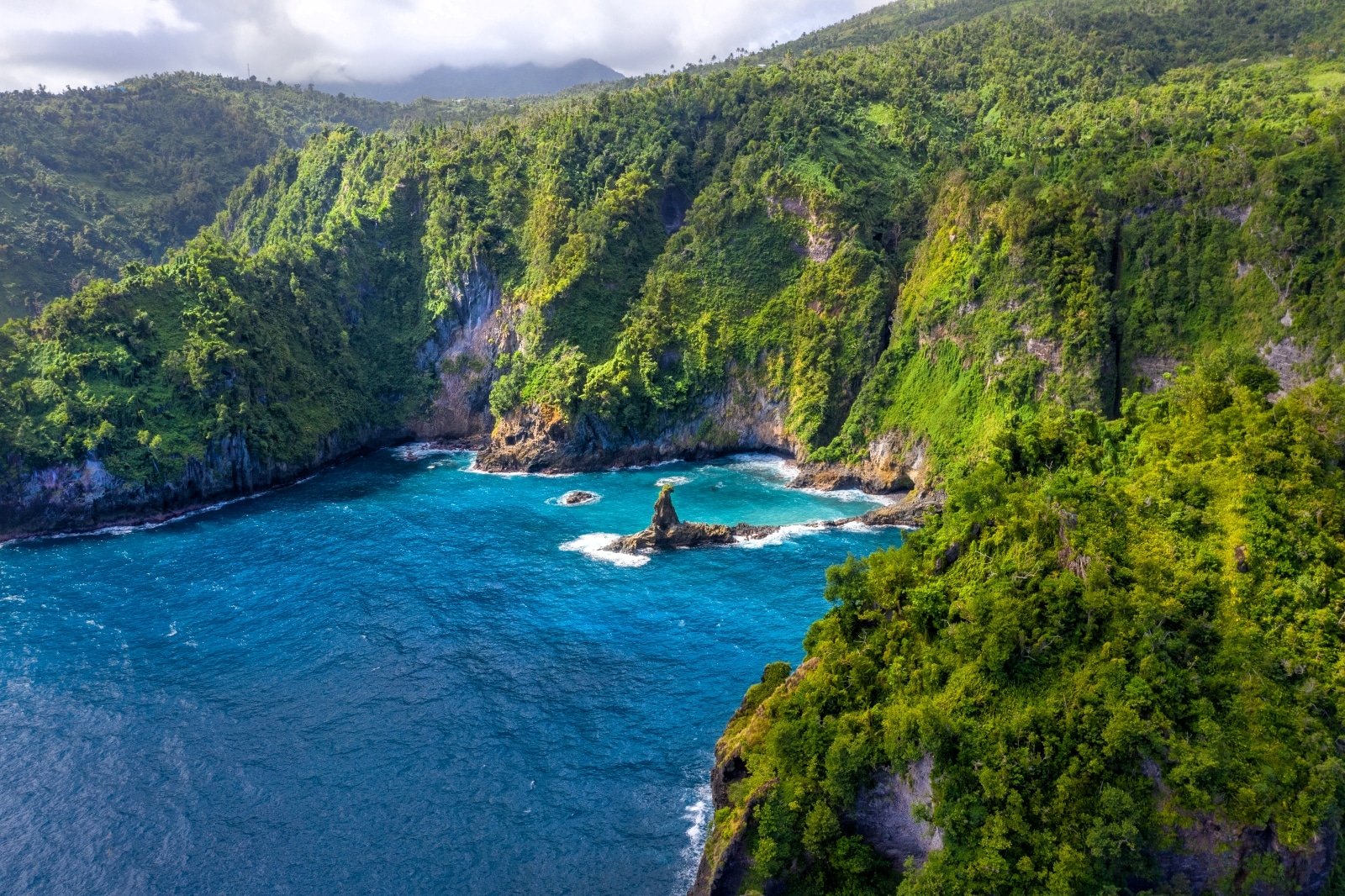
4. Dominica, Caribbean
Dominica stands out in the Caribbean for its commitment to eco-tourism. Known as the “Nature Island,” it boasts lush rainforests, hot springs, and a rich array of wildlife. The island’s eco-lodges and nature tours focus on conservation and community involvement, offering immersive experiences like whale watching and hiking to the Boiling Lake. Dominica’s rugged terrain and natural hot springs provide a unique backdrop for sustainable adventures, from birdwatching to exploring hidden waterfalls.
Insider’s Tip: Explore the island’s unique waterfalls and natural hot springs for a relaxing experience.
When To Travel: The dry season from December to April is ideal for exploring.
How To Get There: Fly to Douglas-Charles Airport, with connections from major Caribbean hubs.
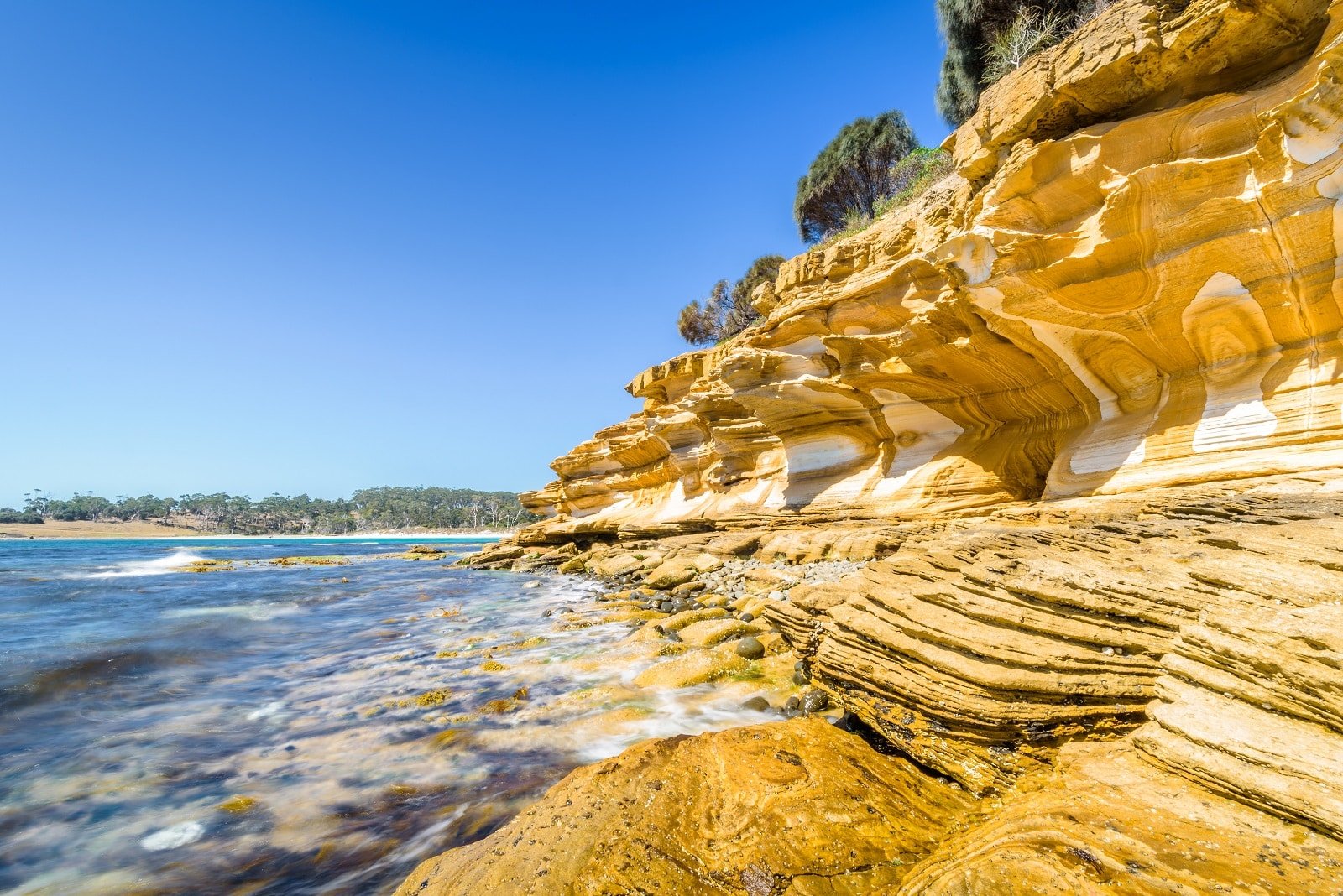
5. Tasmania, Australia
Tasmania, an island state of Australia, is a treasure trove for eco-conscious travelers. Over 40% of its land is protected as national parks and reserves, offering a diverse range of pristine environments. From the rugged wilderness of the Tasmanian Wilderness World Heritage Area to the serene beauty of Wineglass Bay, Tasmania is a haven for nature lovers. The island is committed to sustainable practices, evident in its eco-lodges and conservation projects. Visitors can engage in eco-friendly activities, such as hiking in ancient rainforests, watching wildlife, and exploring the island’s unique geology.
Insider’s Tip: Visit the Tasmanian Devil sanctuaries to learn about conservation efforts for this iconic species.
When To Travel: The summer months of December to February are ideal for outdoor activities.
How To Get There: Fly to Hobart or Launceston from major Australian cities.
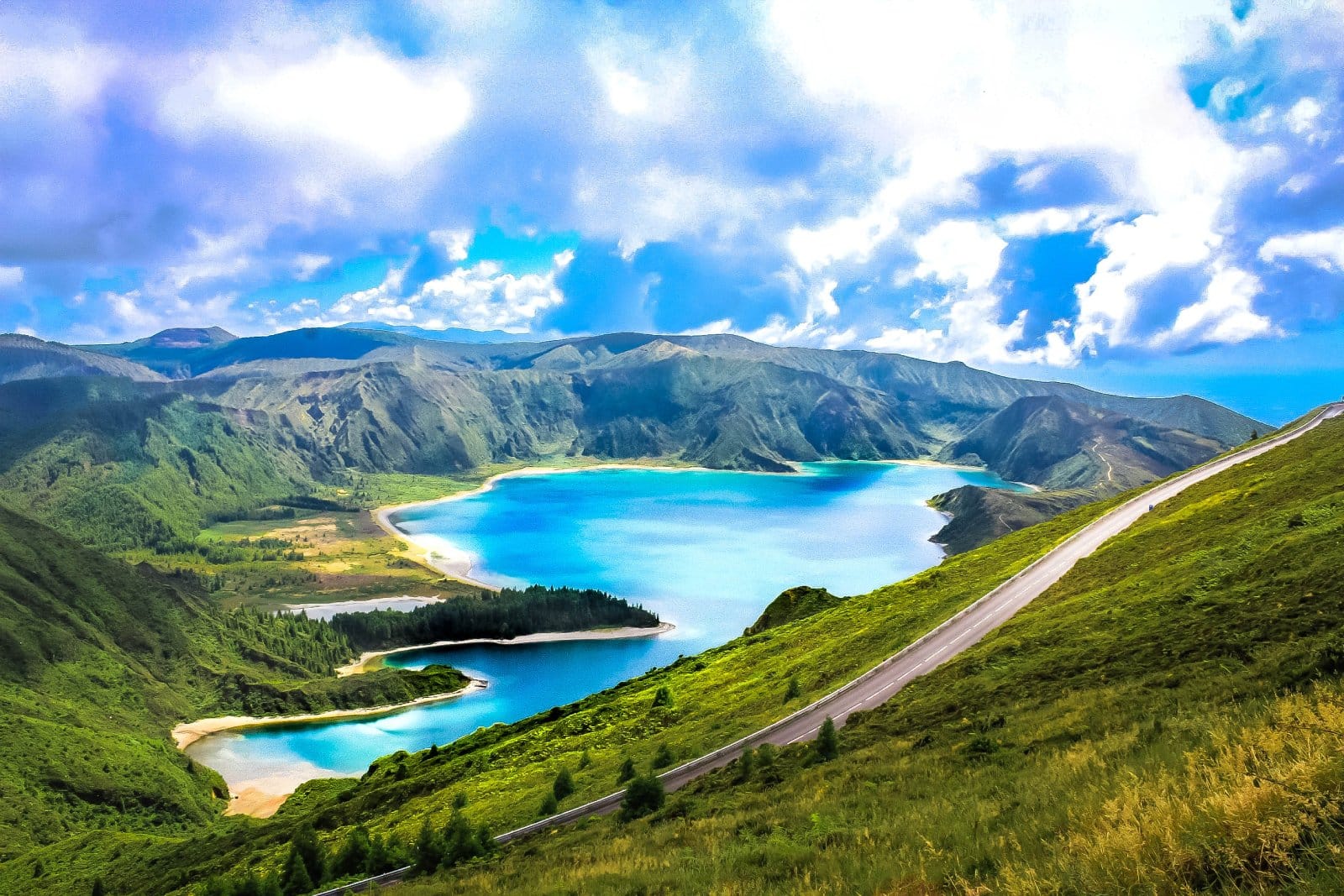
6. Azores, Portugal
The Azores, a group of nine volcanic islands in the North Atlantic, are a model for sustainable tourism. The islands’ stunning landscapes, from green pastures to thermal springs, are complemented by eco-friendly accommodations and activities. Whale watching, hiking, and diving in the Azores not only offer incredible experiences but also support conservation efforts. The islands’ commitment to sustainability includes renewable energy initiatives and the protection of marine life.
Insider’s Tip: Try geothermal cooking, a unique culinary experience on the islands.
When To Travel: Visit from April to October for the best weather and whale-watching opportunities.
How To Get There: Fly to Ponta Delgada on São Miguel Island from Lisbon or other European cities.
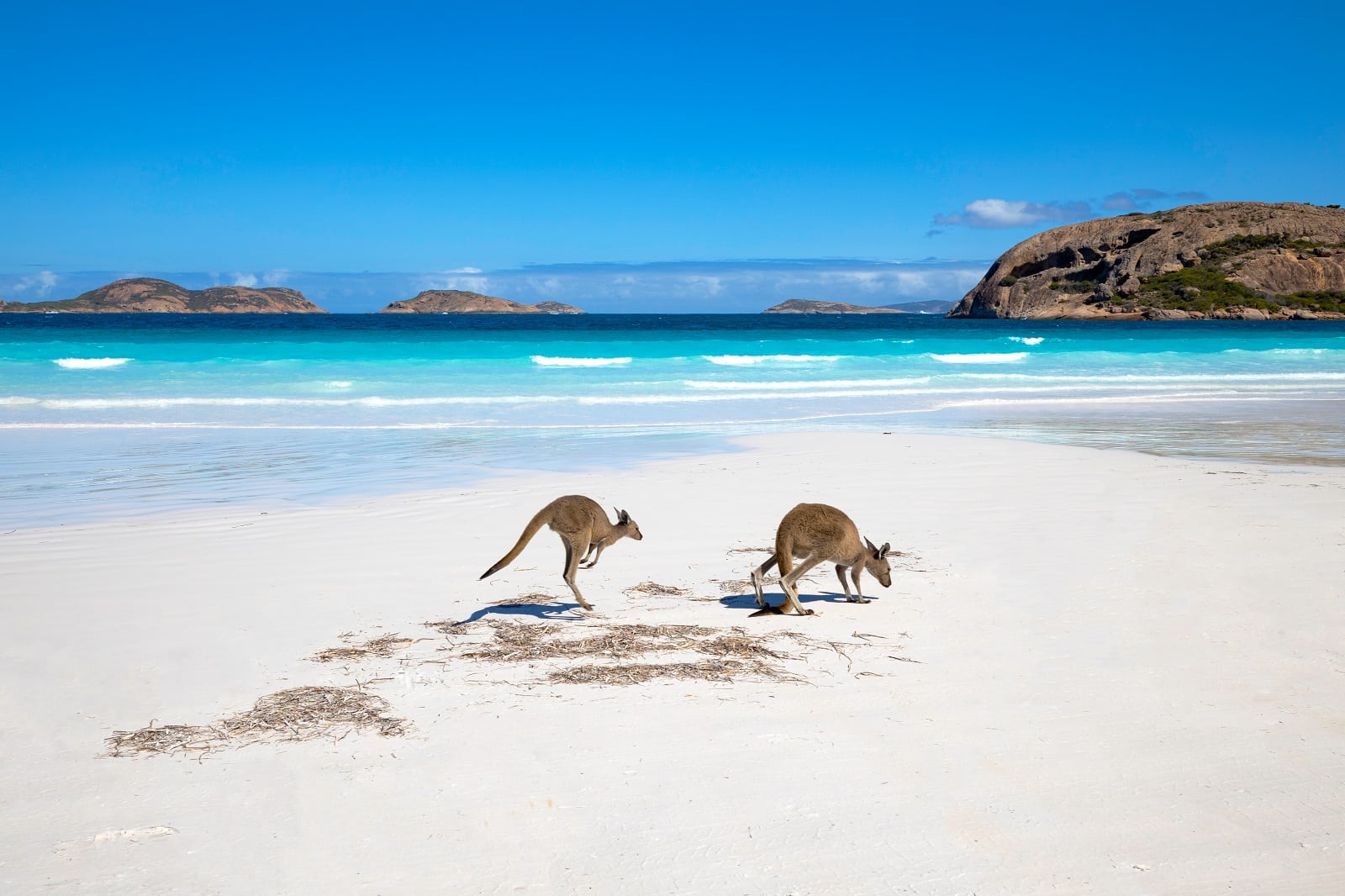
7. Kangaroo Island, Australia
Kangaroo Island, off the coast of South Australia, is a wildlife sanctuary and a leader in sustainable tourism. The island’s diverse habitats are home to many native Australian species, protected through eco-friendly practices. Visitors can enjoy guided wildlife tours, conservation experiences, and stays in eco-lodges. The island offers a unique opportunity to see Australian wildlife in their natural habitat, such as kangaroos, koalas, and echidnas.
Insider’s Tip: Join a nocturnal tour to see the island’s wildlife in their natural habitat, including kangaroos and echidnas.
When To Travel: Visit from September to March for the best wildlife viewing.
How To Get There: Fly to Kingscote Airport on Kangaroo Island or take a ferry from Cape Jervis.
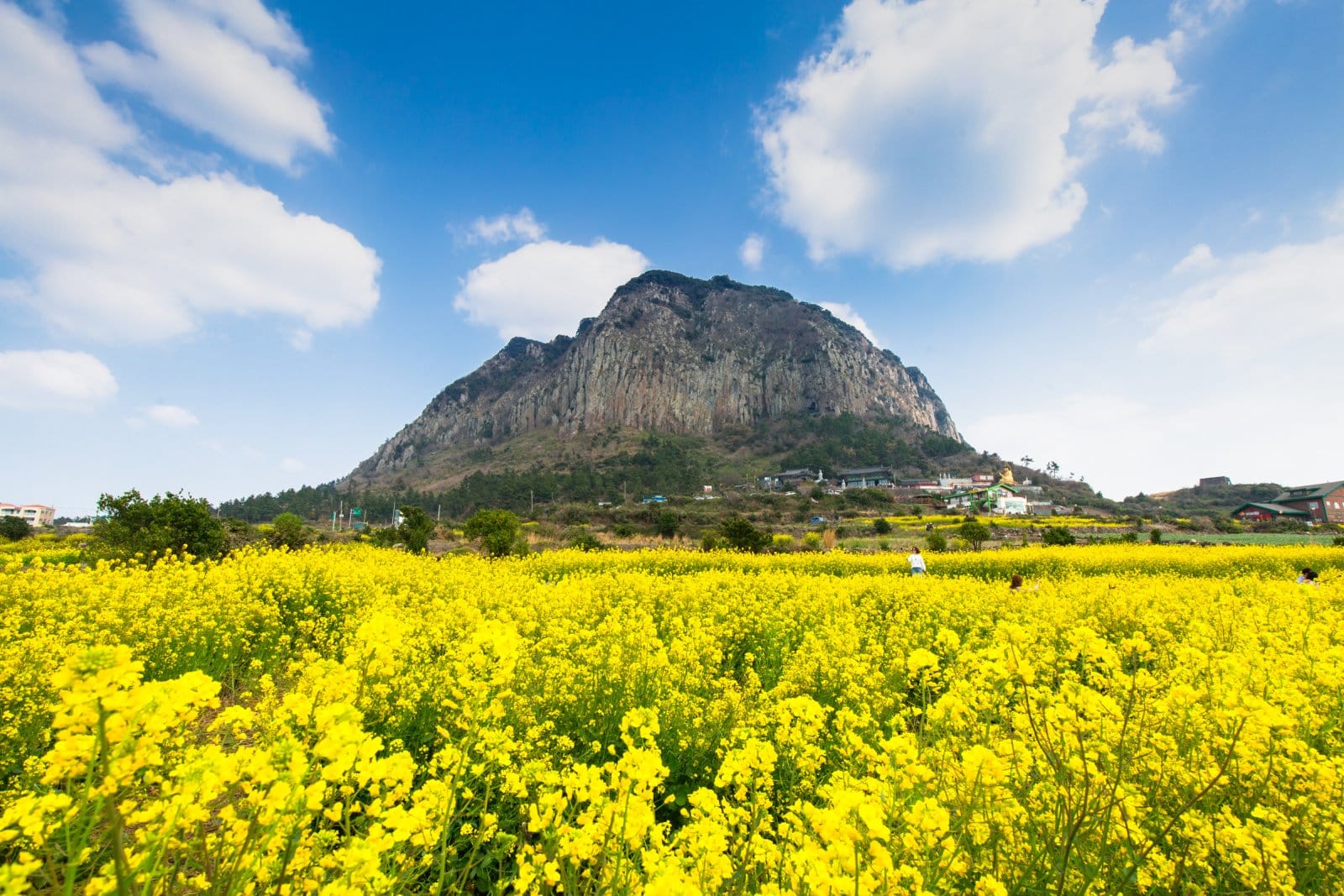
8. Jeju Island, South Korea
Jeju Island, off the southern coast of South Korea, is known for its natural beauty and commitment to sustainability. The island’s UNESCO-listed Geopark showcases unique volcanic landscapes, waterfalls, and beaches. Eco-friendly initiatives across the island promote sustainable agriculture and tourism, making it a great destination for environmentally-conscious travelers. Activities include exploring lava tubes, hiking up Hallasan Mountain, and visiting traditional Korean villages.
Insider’s Tip: Explore the island’s lava tubes and craters for a unique geological experience.
When To Travel: Spring (April to June) is ideal for mild weather and beautiful cherry blossoms.
How To Get There: Fly to Jeju International Airport from various cities in South Korea and Asia.
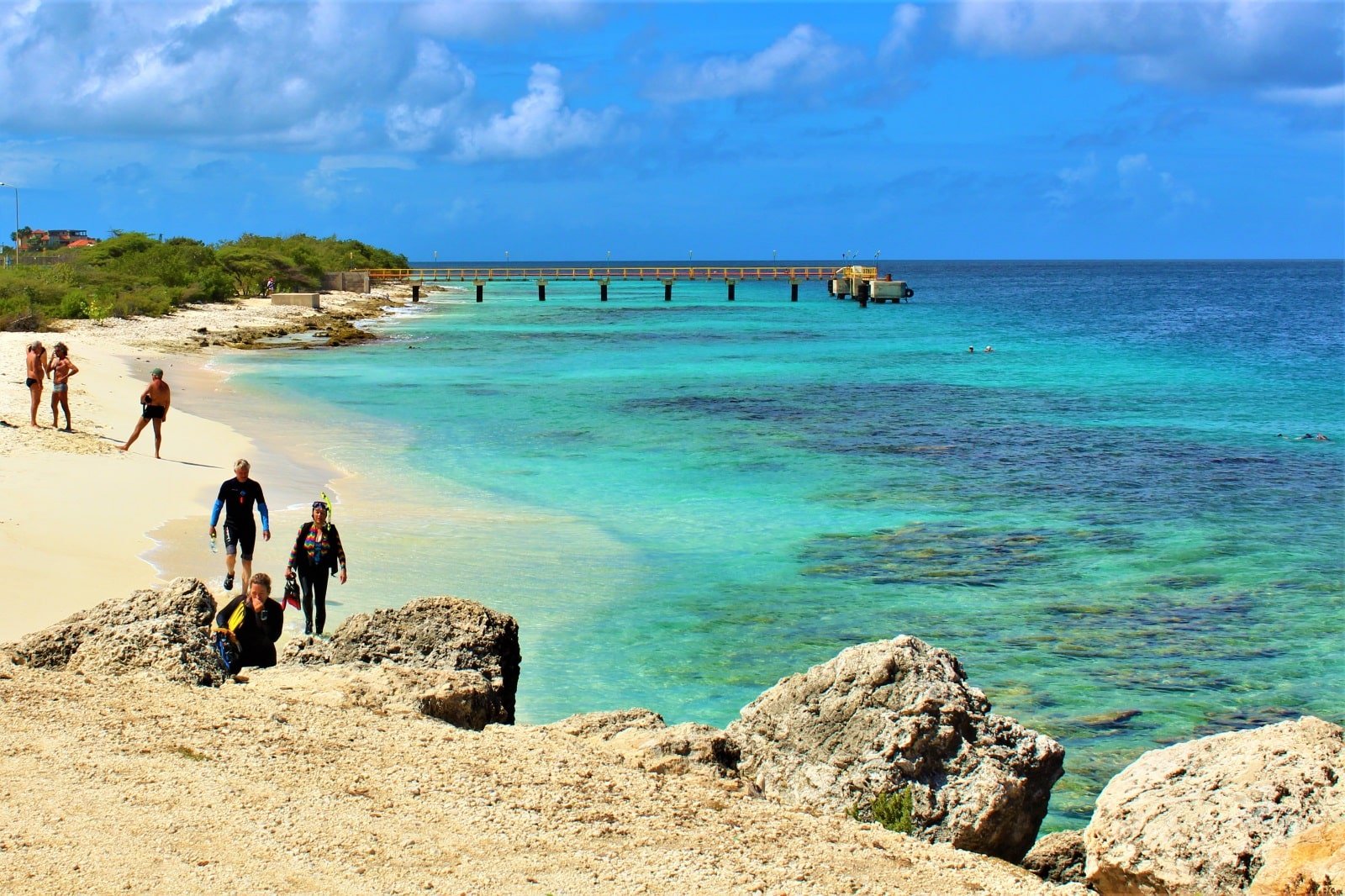
9. Bonaire, Caribbean
Bonaire, part of the Dutch Caribbean, is a pioneer in marine conservation. The island’s surrounding waters are a protected marine park, offering some of the best diving and snorkeling experiences in the Caribbean. Sustainable practices on land and sea make Bonaire a top choice for eco-friendly island travel. Visitors can enjoy activities like windsurfing, kitesurfing, and exploring the island’s unique flora and fauna.
Insider’s Tip: Try windsurfing or kitesurfing in Lac Bay, known for its ideal conditions.
When To Travel: Visit year-round, with the best diving conditions from April to October.
How To Get There: Fly to Flamingo International Airport on Bonaire from the United States, Europe, or other Caribbean islands.
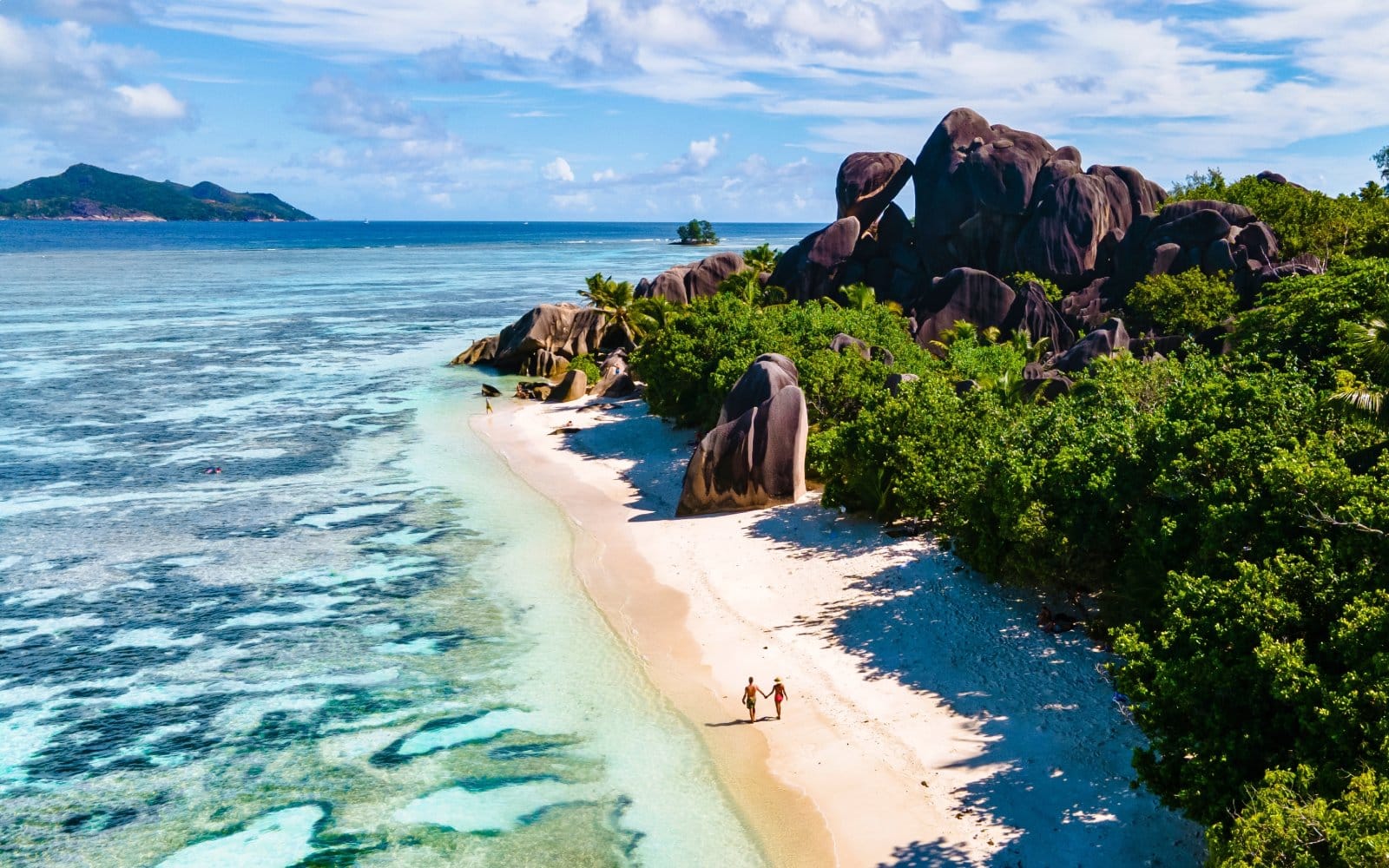
10. Seychelles
The Seychelles, an archipelago in the Indian Ocean, is a leader in environmental conservation. The islands offer stunning beaches, coral reefs, and nature reserves. Sustainable tourism practices here include eco-lodges, marine conservation projects, and guided nature tours. The Seychelles’ commitment to preserving its natural and cultural heritage makes it an ideal destination for responsible travelers.
Insider’s Tip: Visit Vallee de Mai on Praslin Island, a UNESCO World Heritage Site, to see the rare Coco de Mer palm.
When To Travel: April to May and October to November offer calm seas and pleasant weather.
How To Get There: Fly to Seychelles International Airport on Mahé Island from major international hubs.
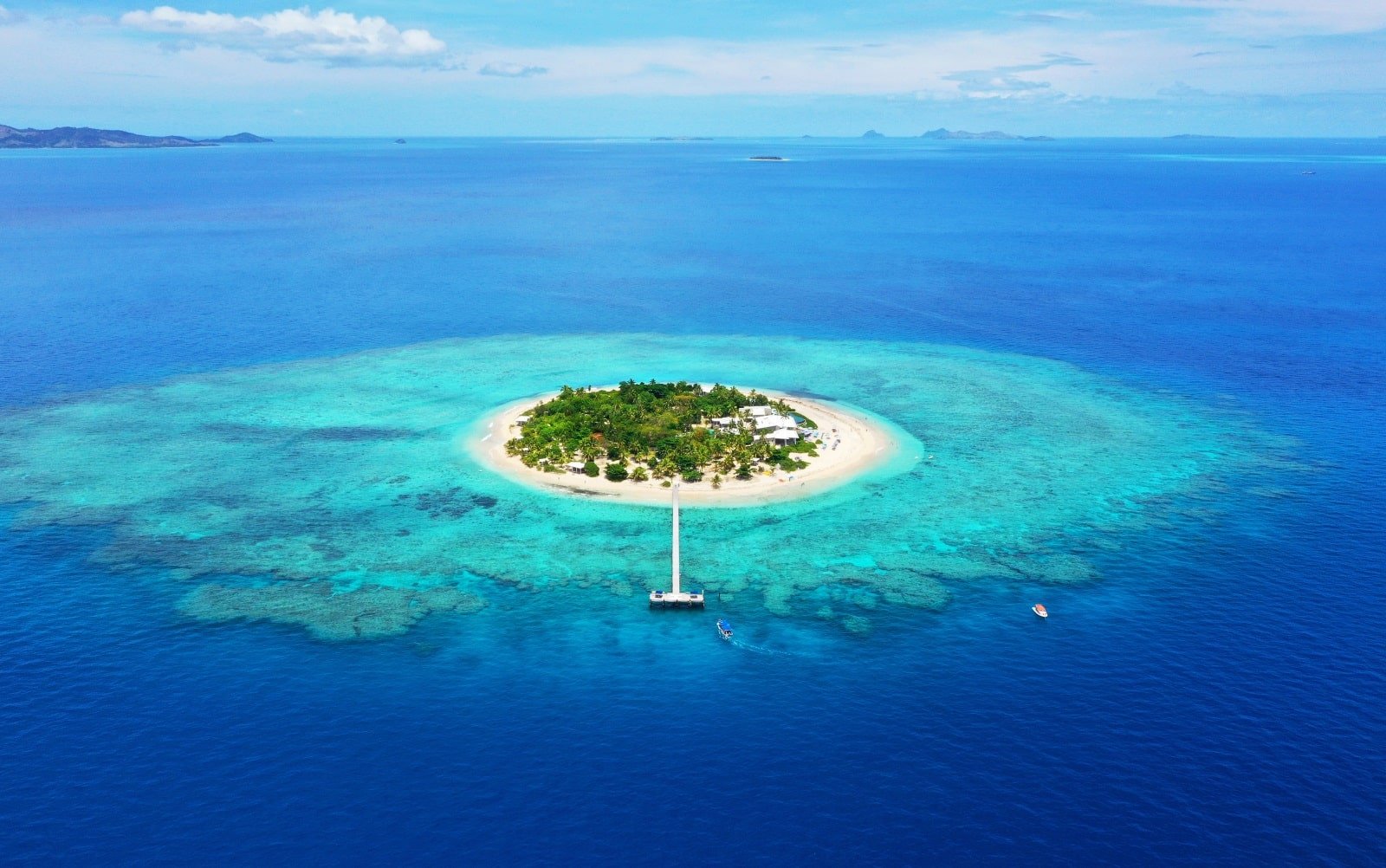
Fiji, an archipelago in the South Pacific, is renowned not just for its breathtaking coral reefs and warm hospitality but also for its dedication to sustainable tourism. The islands are a paradise for eco-conscious travelers, offering a variety of eco-friendly resorts and activities that range from diving in vibrant coral reefs to engaging in cultural tours and participating in conservation initiatives.
Fiji’s commitment to sustainable practices ensures that your visit contributes positively to the local communities and the preservation of the environment. The islands’ lush landscapes and clear waters provide the perfect setting for various activities, including kayaking, snorkeling, and exploring traditional Fijian villages. Engaging with the local community and participating in environmental conservation projects offer a deeper understanding and appreciation of Fiji’s natural beauty and cultural richness.
Insider’s Tip: Participate in a reef conservation project for a hands-on experience in marine preservation.
When To Travel: The best time to visit is during the dry season, from May to October.
How To Get There: Fly to Nadi International Airport on Fiji’s main island, Viti Levu.
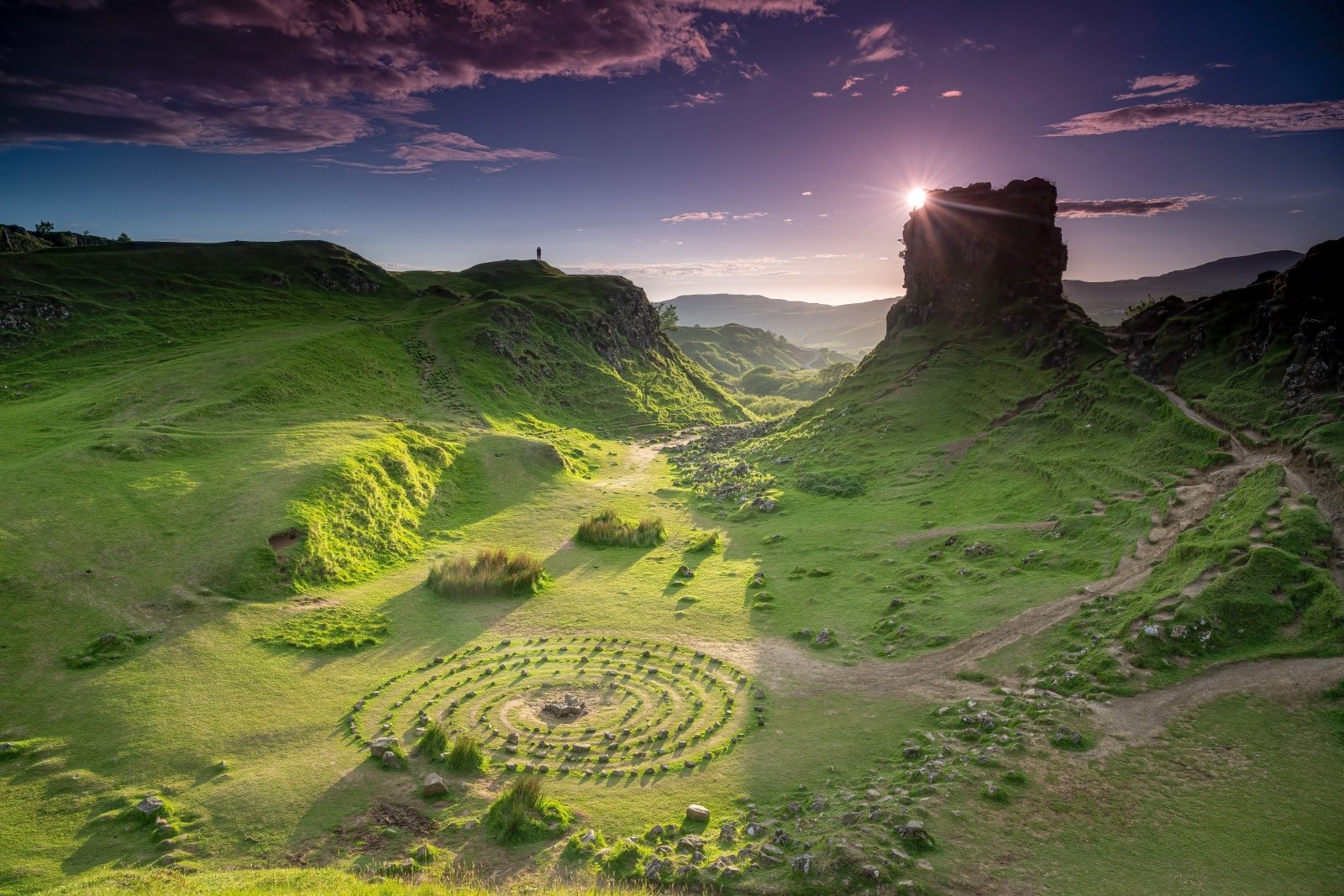
12. Isle of Skye, Scotland
The Isle of Skye, located off the west coast of Scotland, is a destination that captivates with its dramatic landscapes and rich cultural heritage. Known for its rugged coastlines, mystical mountain ranges like the Cuillins, and historical sites such as medieval castles, Skye is a haven for outdoor enthusiasts and history buffs alike. The island’s commitment to eco-friendly tourism is evident in its sustainable accommodations and practices that aim to preserve the natural environment.
Visitors can immerse themselves in the island’s beauty through activities like hiking, wildlife watching, and exploring the local folklore and traditions. The Isle of Skye’s enchanting scenery, from the famous Fairy Pools to the Old Man of Storr, offers endless opportunities for sustainable exploration and adventure.
Insider’s Tip: Visit the Fairy Pools, a series of clear, cold pools and waterfalls in the Cuillins.
When To Travel: May to September offers the best weather for outdoor activities.
How To Get There: Drive or take a bus from mainland Scotland to the Isle of Skye.
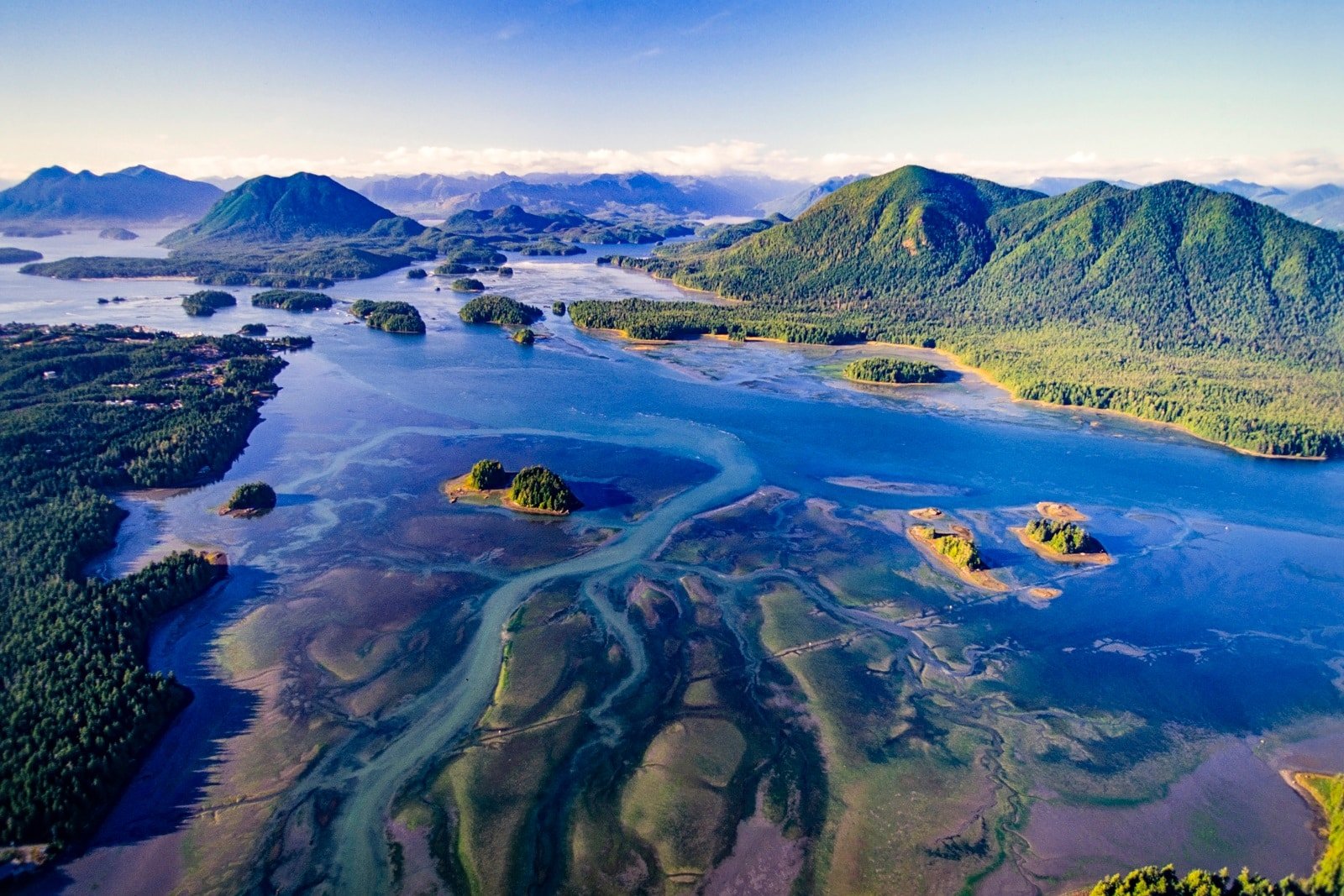
13. Vancouver Island, Canada
Vancouver Island, off Canada’s Pacific Coast, is a diverse ecosystem ranging from temperate rainforests to rugged beaches and mountainous terrain. The island is a model for sustainable tourism, offering a range of eco-friendly activities and experiences. Visitors can explore ancient forests, such as those in Cathedral Grove, go whale watching in the Pacific waters, or learn about the rich indigenous cultures of the island.
Vancouver Island’s commitment to environmental stewardship is evident in its conservation efforts and promotion of sustainable practices among local businesses and communities. The island provides a perfect blend of adventure and relaxation, with opportunities for hiking, kayaking, and enjoying the local culinary scene while focusing on ecological responsibility.
Insider’s Tip: Explore the island’s west coast for incredible wildlife viewing, including bears and whales.
When To Travel: Visit from June to September for the best weather and wildlife viewing.
How To Get There: Fly to Victoria International Airport or take a ferry from Vancouver.
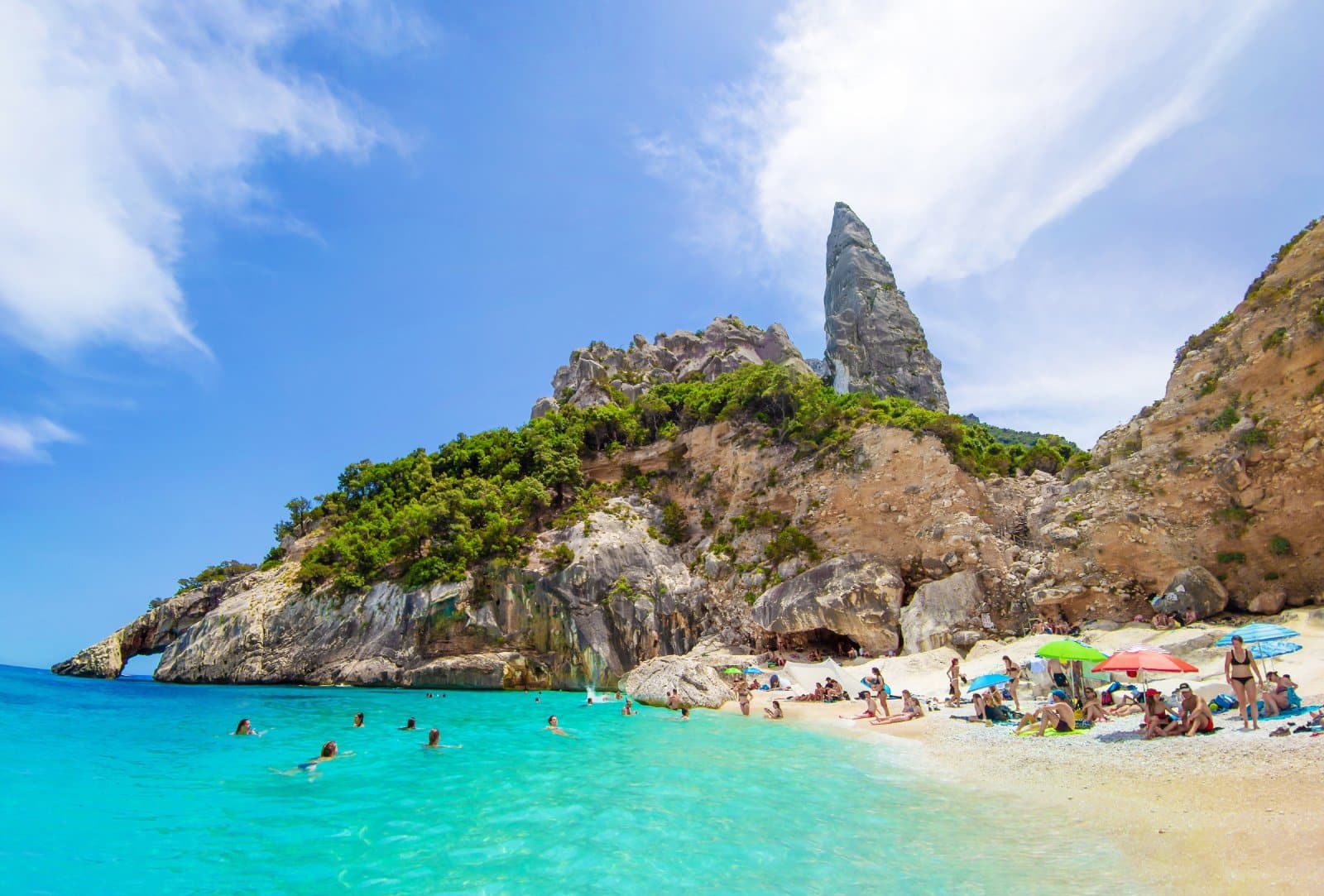
14. Sardinia, Italy
Sardinia, nestled in the Mediterranean Sea, is an island that offers more than just stunning beaches and crystal-clear waters. It is where the preservation of natural landscapes and cultural heritage is paramount. Visitors to Sardinia can enjoy sustainable agritourism, explore archaeological sites like the Nuraghe, and hike in the island’s rugged interior.
The island’s approach to tourism balances enjoyment with conservation, ensuring its beauty is maintained for future generations. Sardinia’s diverse landscape, from the Costa Smeralda to the mountainous Barbagia region, provides a range of activities for travelers, including horseback riding, wine tasting, and discovering the unique traditions and crafts of the local communities.
Insider’s Tip: Visit the Nuraghe, ancient megalithic edifices, to glimpse Sardinia’s past.
When To Travel: April to June and September to October offer pleasant weather and fewer crowds.
How To Get There: Fly to Cagliari, Olbia, or Alghero airports from major European cities.
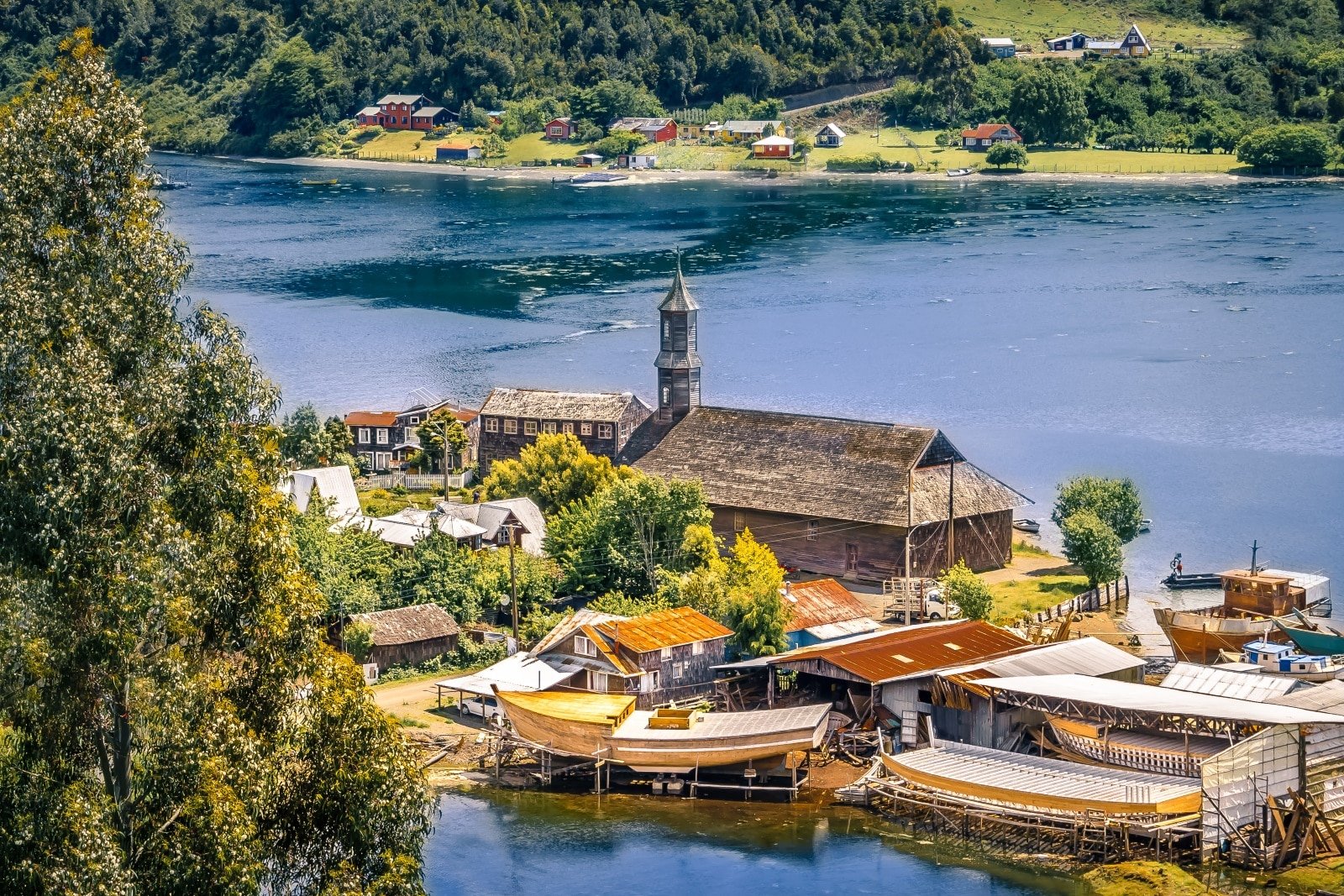
15. Chiloé Island, Chile
Chiloé Island, located in the southern region of Chile, is where myth and tradition blend seamlessly with the natural environment. Known for its distinctive wooden churches and rich folklore, Chiloé is committed to sustainable tourism practices. The island’s cultural heritage is deeply connected to its natural surroundings, offering visitors a chance to experience both.
Eco-friendly accommodations and activities such as bird watching, hiking, and exploring the island’s national parks are popular among travelers. The island’s cuisine, particularly its seafood and unique dishes like curanto, reflects its sustainable relationship with the sea and land. Chiloé’s rolling hills, dense forests, and coastal landscapes provide a tranquil setting for a sustainable and culturally enriching getaway.
Insider’s Tip: Try curanto, a traditional Chilote dish, to taste local cuisine.
When To Travel: The best time to visit is during the summer months of December to March.
How To Get There: Fly to Puerto Montt and then take a ferry to Chiloé Island.
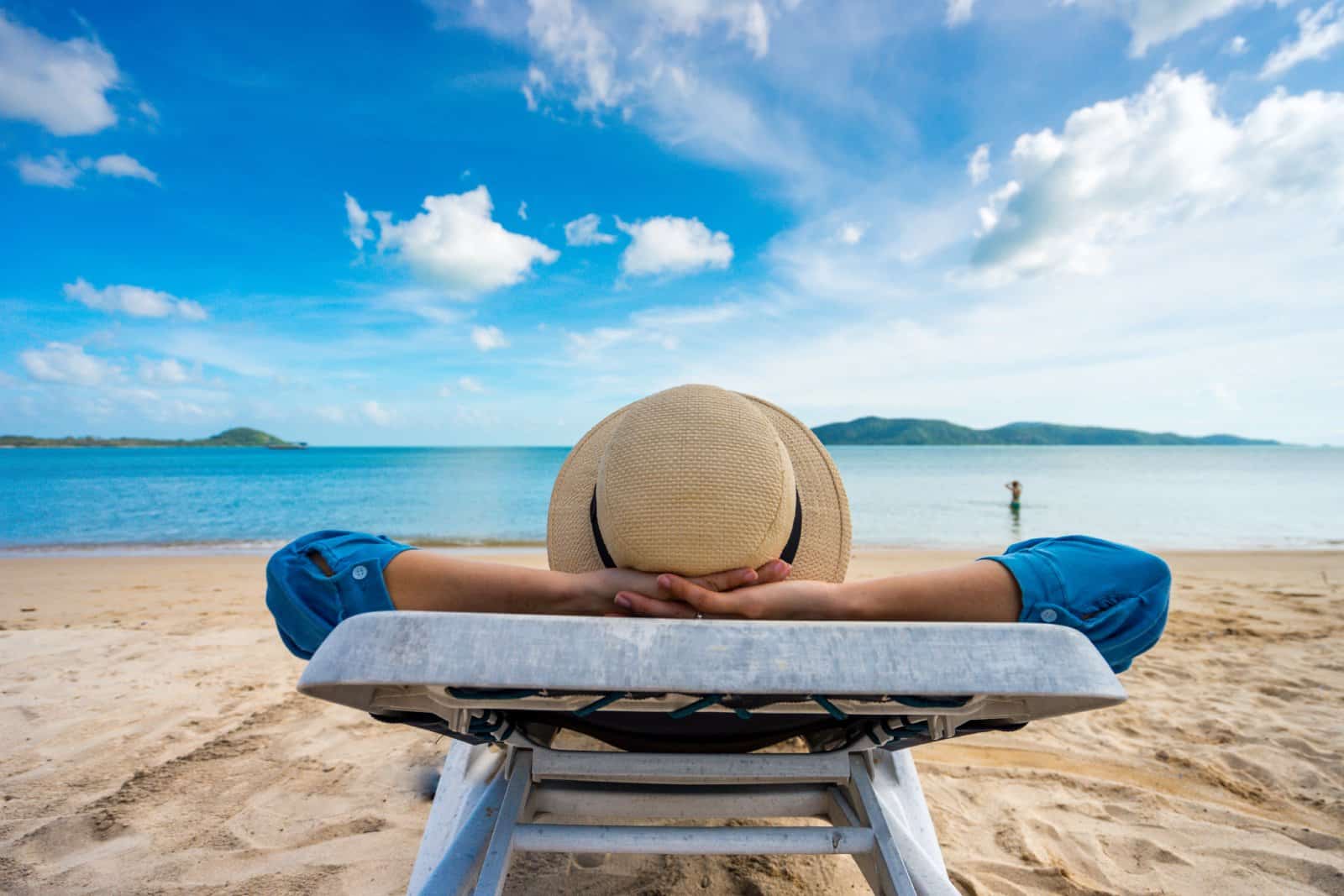
The Bottom Line
Embarking on a sustainable island getaway allows you to responsibly enjoy some of the world’s most beautiful destinations. These eco-friendly islands offer breathtaking natural beauty and a commitment to preserving their environment and culture. Whether you’re snorkeling in Fiji’s coral reefs, exploring the ancient landscapes of Sardinia, or immersing yourself in the unique culture of Chiloé, your journey will contribute to the sustainability of these incredible places. As you plan your next island adventure, remember that your choices can help preserve these paradises for future generations.
More Articles Like This…
Barcelona: Discover the Top 10 Beach Clubs
2024 Global City Travel Guide – Your Passport to the World’s Top Destination Cities
Exploring Khao Yai 2024 – A Hidden Gem of Thailand
The post 15 Eco-Islands 2024 – Sustainable Island Retreats republished on Passing Thru with permission from The Green Voyage .
Featured Image Credit: Shutterstock / Grekov’s.
For transparency, this content was partly developed with AI assistance and carefully curated by an experienced editor to be informative and ensure accuracy.
More for You
Ice Cream Products Recalled Nationwide Over Contamination Fears
The one-hit wonders every 1960s kid will remember
Jamaal Bowman is ousted in most expensive House primary ever
I tried the cheapest cheeseburgers at McDonald's, Wendy's, and Burger King and the least expensive was my favorite
16 signs your body is telling you something is wrong
Majorca Tourists Flee as Freak Meteotsunami Wave Swallows Up Beaches and Streets
Social Security Issues Major Update to Benefits
Here's how much the price of gold has dropped since May (and why you should still invest)
Dez Bryant is the latest ex-player to call out Stephen A. Smith
The 1-Ingredient Upgrade for Better Tuna Salad
Steve Bannon’s New York criminal fraud trial will no longer be overseen by judge who presided over Trump’s hush money trial
Mary J. Blige On Her Sold-Out Boots And Today’s Restock
Handyman’s Brilliant PVC Pipe Hack Keeps Garage Immaculately Organized
The amazing story behind the house perched on a rock in a lake
Tardigrades Could Extend the Shelf-Life of Humanity, Study Suggests
Supreme Court Rejects Religious Freedom Challenge
Something unusual is happening on Wall Street — and it likely bodes well for stocks
Lady Gaga Just Debuted Chunky Black Highlights and a Feather Mohawk
Flaxseed is trending for being compared to Botox. A dietitian weighs in on the benefits
Geriatricians Say These 11 Signs Indicate You’ll Age Well

- The Star ePaper
- Subscriptions
- Manage Profile
- Change Password
- Manage Logins
- Manage Subscription
- Transaction History
- Manage Billing Info
- Manage For You
- Manage Bookmarks
- Package & Pricing
Miss Universe Philippines Laguna Alexandra Rosales pushes for sustainability
- Philippines
Sunday, 23 Jun 2024
Related News

Kuwait lifts visa ban on Philippines workers
Philippine restraint needs rethink as china wields knives, machetes at disputed shoal: experts, philippines says it wants to work with china to manage tensions in south china sea.
Miss Universe Philippines Laguna Alexandra Rosales. - Image: Instagram/@alexmbrosales
MANILA: Beauty queen-turned teacher Alexandra Mae Rosales confessed that she used to just unabashedly use products to prettify herself, with wanton disregard for sustainability.
But now she said she has become more eco-conscious.
“I was guilty before. I often used excess products. And I think you should just read how much you need.
"It’s a waste if you put too much, and it doesn’t need to be that much,” the Laguna lass told INQUIRER.net at the opening of a health and beauty care chain store in San Pedro on Friday (June 21).
Rosales shared that it is, perhaps, one of the most common practices among women and beauty queens that go against sustainability. And for her, education became the key in changing her ways.
“Sometimes, we are just not informed. That’s why it is important to inform yourself, whatever you decide on what to do,” she said.
She had done the rounds of national and international pageants, being the first Filipino woman to win in the Miss Supermodel Worldwide contest in India, and having competed in the 2021 Binibining Pilipinas pageant, and the 2024 Miss Universe Philippines pageant last month where she entered the Top 20.
And as a tourism teacher, the dusky beauty also hopes to spread awareness on eco consciousness in traveling.
“I am encouraging you all to make sustainable practices as much as you can, do your research. I know right now traveling is very much something the youth wants to do,” Rosales pleaded.
She acknowledged that it will take effort to look at the sustainable practices observed by a place one wants to visit.
But she hopes would-be travelers will also find out if there are causes that a destination is adopting, or how much it is contributing to the community.
And this is where pageantry also comes in, Rosales said. “When you say sustainability, it’s what makes our world go round.
"And up to know, the reason why we still have what we have, like the natural resources, it’s because of sustainability.
"And it’s very important that we beauty queens have a platform to be able to raise more awareness and encourage people to do the same,” she shared.
“Whenever I travel, I make sure that I pick the right tourist spots that contribute to sustainable tourism, and do not exploit animals and everything else.
"I think being able to choose the right places to go is also something that you can add to the sustainable practices,” Rosales added. - The Philippine Daily Inquirer/ANN
Tags / Keywords: Philippines , Miss Universe Philippines , Laguna Alexandra Rosales , sustainability
Found a mistake in this article?
Report it to us.
Thank you for your report!

FUTURE GUARDIANS OF ENERGY
Next in aseanplus news.

Trending in AseanPlus
Air pollutant index, highest api readings, select state and location to view the latest api reading.
- Select Location
Source: Department of Environment, Malaysia
Others Also Read
Best viewed on Chrome browsers.

We would love to keep you posted on the latest promotion. Kindly fill the form below
Thank you for downloading.
We hope you enjoy this feature!
Global Growth Is Stabilizing for the First Time in Three Years
But 80% of world population will experience slower growth than in pre-COVID decade
WASHINGTON, June 11, 2024 — The global economy is expected to stabilize for the first time in three years in 2024—but at a level that is weak by recent historical standards, according to the World Bank’s latest Global Economic Prospects report.
Global growth is projected to hold steady at 2.6% in 2024 before edging up to an average of 2.7% in 2025-26. That is well below the 3.1% average in the decade before COVID-19. The forecast implies that over the course of 2024-26 countries that collectively account for more than 80% of the world’s population and global GDP would still be growing more slowly than they did in the decade before COVID-19.
Overall, developing economies are projected to grow 4% on average over 2024-25, slightly slower than in 2023. Growth in low-income economies is expected to accelerate to 5% in 2024 from 3.8% in 2023. However, the forecasts for 2024 growth reflect downgrades in three out of every four low-income economies since January. In advanced economies, growth is set to remain steady at 1.5% in 2024 before rising to 1.7% in 2025.
“Four years after the upheavals caused by the pandemic, conflicts, inflation, and monetary tightening, it appears that global economic growth is steadying,” said Indermit Gill, the World Bank Group’s Chief Economist and Senior Vice President. “ However, growth is at lower levels than before 2020. Prospects for the world’s poorest economies are even more worrisome. They face punishing levels of debt service, constricting trade possibilities, and costly climate events. Developing economies will have to find ways to encourage private investment, reduce public debt, and improve education, health, and basic infrastructure. The poorest among them—especially the 75 countries eligible for concessional assistance from the International Development Association—will not be able to do this without international support.”
This year, one in four developing economies is expected to remain poorer than it was on the eve of the pandemic in 2019. This proportion is twice as high for countries in fragile- and conflict-affected situations. Moreover, the income gap between developing economies and advanced economies is set to widen in nearly half of developing economies over 2020-24 —the highest share since the 1990s. Per capita income in these economies—an important indicator of living standards—is expected to grow by 3.0% on average through 2026, well below the average of 3.8% in the decade before COVID-19.
Global inflation is expected to moderate to 3.5% in 2024 and 2.9% in 2025, but the pace of decline is slower than was projected just six months ago. Many central banks, as a result, are expected to remain cautious in lowering policy interest rates. Global interest rates are likely to remain high by the standards of recent decades—averaging about 4% over 2025-26, roughly double the 2000-19 average.
“Although food and energy prices have moderated across the world, core inflation remains relatively high—and could stay that way,” said Ayhan Kose, the World Bank’s Deputy Chief Economist and Director of the Prospects Group . “That could prompt central banks in major advanced economies to delay interest-rate cuts. An environment of ‘higher-for-longer’ rates would mean tighter global financial conditions and much weaker growth in developing economies.”
The latest Global Economic Prospects report also features two analytical chapters of topical importance. The first outlines how public investment can be used to accelerate private investment and promote economic growth. It finds that public investment growth in developing economies has halved since the global financial crisis, dropping to an annual average of 5% in the past decade. Yet public investment can be a powerful policy lever. For developing economies with ample fiscal space and efficient government spending practices, scaling up public investment by 1% of GDP can increase the level of output by up to 1.6% over the medium term.
The second analytical chapter explores why small states—those with a population of around 1.5 million or less—suffer chronic fiscal difficulties. Two-fifths of the 35 developing economies that are small states are at high risk of debt distress or already in it. That’s roughly twice the share for other developing economies. Comprehensive reforms are needed to address the fiscal challenges of small states. Revenues could be drawn from a more stable and secure tax base. Spending efficiency could be improved —especially in health, education, and infrastructure. Fiscal frameworks could be adopted to manage the higher frequency of natural disasters and other shocks. Targeted and coordinated global policies can also help put these countries on a more sustainable fiscal path.
Download the full report: https://bit.ly/GEP-June-2024-FullReport
Download growth data: https://bit.ly/GEP-June-2024-Data
Download charts: https://bit.ly/GEP-June-2024-Charts
Regional Outlooks:
East Asia and Pacific: Growth is expected to decelerate to 4.8% in 2024 and to 4.2% in 2025. For more, see regional overview.
Europe and Central Asia: Growth is expected to edge down to 3.0% in 2024 before moderating to 2.9% in 2025. For more, see regional overview .
Latin America and the Caribbean: Growth is expected to decline to 1.8% in 2024 before picking up to 2.7% in 2025. For more, see regional overview .
Middle East and North Africa: Growth is expected to pick up to 2.8% in 2024 and 4.2% in 2025. For more, see regional overview.
South Asia: Growth is expected to slow to 6.2% in 2024 and remain steady at 6.2% in 2025. For more, see regional overview.
Sub-Saharan Africa: Growth is expected to pick up to 3.5% in 2024 and to 3.9% in 2025. For more, see regional overview.
Website: www.worldbank.org/gep
Facebook: facebook.com/worldbank
X (Twitter): twitter.com/worldbank
YouTube: youtube.com/worldbank
This site uses cookies to optimize functionality and give you the best possible experience. If you continue to navigate this website beyond this page, cookies will be placed on your browser. To learn more about cookies, click here .
We’re sorry, this site is currently experiencing technical difficulties. Please try again in a few moments. Exception: request blocked

COMMENTS
2. Stay at eco-friendly hotels and resorts in the Philippines. Photo by El Nido Resorts group. Your choice of accommodations is also another way how to practice sustainable tourism. Staying at some of the best eco-friendly resorts in the Philippines allows you to reduce your carbon footprint when traveling.
Sustainable tourism is crucial for the Philippines, a country known for its natural beauty and biodiversity. Balancing development with nature is a challenge, but eco-tourism, community-based tourism, and responsible tourism practices are being implemented. In this blog post, we'll explore why sustainable tourism is important for the Philippines.
Green tourism practices in the Philippines include eco-friendly accommodations, wildlife conservation, sustainable transportation, and community engagement for responsible tourism. Eco-friendly Accommodations Eco-friendly accommodations are a growing trend in the Philippines, as both tourists and businesses become more environmentally conscious. These lodgings focus on sustainability ...
Sustainable Practices in the Philippines. The Philippines is committed to sustainable tourism initiatives, with various organizations, government agencies, and local communities working together to promote responsible travel. Here are some sustainable practices you can adopt during your visit: 1. Choose Eco-Friendly Accommodation.
The Philippines' Department of Tourism is embarking on strengthened efforts towards sustainability by enhancing existing destinations and developing new circuits that highlight sustainable management practices and involve local communities. As tourism has a multiplier effect—creating not only jobs but also livelihood opportunities through
One of the primary advantages of sustainable tourism is the preservation of natural resources. In the Philippines, destinations like Palawan have embraced eco-friendly practices to protect their pristine beaches and coral reefs. The local government has implemented strict regulations on waste management and enforced responsible tourism ...
The Tourism Knowledge Center (TKC) is a digital one-stop shop for information and documents pertaining to travel and tourism in the Philippines and Southeast Asia. It serves as a repository of wealth on Industry practices and knowledge which can be used as vital and significant source for business planning, product development, intelligence, and marketing at the enterprise and local government ...
In January, Agoda cited Bohol, Siargao Island, Davao City, Iloilo City, and Cagayan De Oro as the most-searched travel destinations of Pinoys for 2024. In December, Agoda named Iloilo City as the ...
Tourism is important to the Philippines, and this Southeast Asian nation is full of opportunities for travelers to practice sustainable travel. If you're planning on visiting, here are some ways ...
The journey towards sustainable eco tourism in the Philippines, especially on Bantayan Island, has been one of collaboration and partnership, where stakeholders from various sectors have come together to preserve the island's natural beauty and cultural heritage. Local communities have been at the forefront of this sustainable tourism effort.
MANILA, Philippines, Oct. 21, 2021 /PRNewswire/ -- The Philippines' Department of Tourism is embarking on strengthened efforts towards sustainability by enhancing existing destinations and developing new circuits that highlight sustainable management practices and involve local communities.. As tourism has a multiplier effect—creating not only jobs but also livelihood opportunities through ...
4. Kayak in El Nido, Palawan. Palawan is a paradise for kayakers, with placid waters along El Nido's lagoons and coves that are teeming with marine life in crystal clear water. Kayaking through ...
These included 1) assessing the capacity to bring about sustainable tourism planning for sustainable tourism develop-ment, 2) planning for sustainable tourism development, and 3) measuring ...
Sustainable tourism is an approach to travel that prioritizes environmental, social, and economic considerations to ensure that tourism activities can endure over time without compromising the well-being of future generations. In the Philippines, a country known for its stunning natural beauty and diverse cultural heritage, the implementation of sustainable tourism practices becomes crucial ...
On sustainable tourism & eco-forward habits in the time of COVID-19 7. Wash your hands thoroughly, frequently, efficiently. In the midst of a pandemic, safe travel practices also make for more sustainable tourism. We've been told time and time again that the first way to combat the spread of COVID-19 is to wash our hands.
Data from the Economist Impact shows that 98% of people in the Philippines believe sustainable tourism is important — the highest tally in APAC — while 80% believe in the importance of ...
Here's the first of your many readings on sustainable tourism. According to the United Nations World Tourism Organization (UNWTO), sustainable tourism is "tourism that takes full account of its current and future economic, social and environmental impacts, addressing the needs of visitors, the industry, the environment and host communities."
Seven tourist destinations in the Philippines are being built up as resilient, inclusive, sustainable tourism showcase communities. The Department of Tourism (DOT) announced towards the weekend that plans are in place for coordinated efforts between the agency and key stakeholders to help local communities thrive amidst nationwide tourism efforts.
RESPONSIBLE TOURISM IN PALAWAN. 1.Plan your trip ahead and prepare. 2.Stay in an eco-friendly accommodation. 3.Minimize your carbon footprint. 4. Dispose your trash properly. 5.Practice plogging, plalking, and pliking on your travels. 6.Support local conservation efforts and the local economy. 7.Visit agri-tourism farm.
With the practices of sustainable tourism and its fast growth to many developing countries such as the Philippines which resulted for natural resources preservation and economic development at the same time. ... According to the Sustainable Tourism Framework of the Philippines, sustainable tourism was drawn from the country's folklore about ...
With the practices of sustainable tourism and its fast growth to many developing countries such as the Philippines which resulted for natural resources preservation and economic development at the ...
The Department of Tourism is embarking on strengthened efforts towards sustainability by enhancing existing destinations and developing new circuits that highlight sustainable management practices and involve local communities. As tourism has a multiplier effect—creating not only jobs but also livelihood opportunities through offering of goods and services—sustainability ensures the ...
dy on the sustainable practices of local tourism enterprises in Nueva Vizcaya. This research topic was developed by the study's proponent to support the notion of the Global Code of Et. ics for Tourism Article III: Tourism as an element of sustainable development. Section 1 of this code of ethics states that all stakeholders must pro.
Cycling Tours Highlight the Philippines' Natural Beauty and Cultural Richness While Promoting Environmental Conservation
Palawan, the Philippines' ecological marvel, is a testament to sustainable island living. ... Sustainable tourism practices here include eco-lodges, marine conservation projects, and guided ...
That the two would have a beneficial, symbiotic relationship speaks plenty about the potential of tourism and upskilling to help the Philippines achieve sustainable, inclusive growth.
Now is the new era of revival and resurgence for the Philippines, the President said. ... drive tourism and generate income. President Marcos said the structures within the project are also targeted to use renewable energy and promote other ecological practices aligned with the environmental protection and conservation strategies of the government.
She acknowledged that it will take effort to look at the sustainable practices observed by a place one wants to visit. ... Philippines 11h ago Tourism investments in the Philippines hit US$8.64bil ...
But 80% of world population will experience slower growth than in pre-COVID decade. WASHINGTON, June 11, 2024— The global economy is expected to stabilize for the first time in three years in 2024—but at a level that is weak by recent historical standards, according to the World Bank's latest Global Economic Prospects report.. Global growth is projected to hold steady at 2.6% in 2024 ...
Other countries interpret the inclusion of "practices similar to slavery" within Article 3 of the UN TIP Protocol to include certain forms of forced marriage. "Practices similar to slavery" is defined in the Supplementary Convention on the Abolition of Slavery, the Slave Trade, and Institutions and Practices Similar to Slavery.